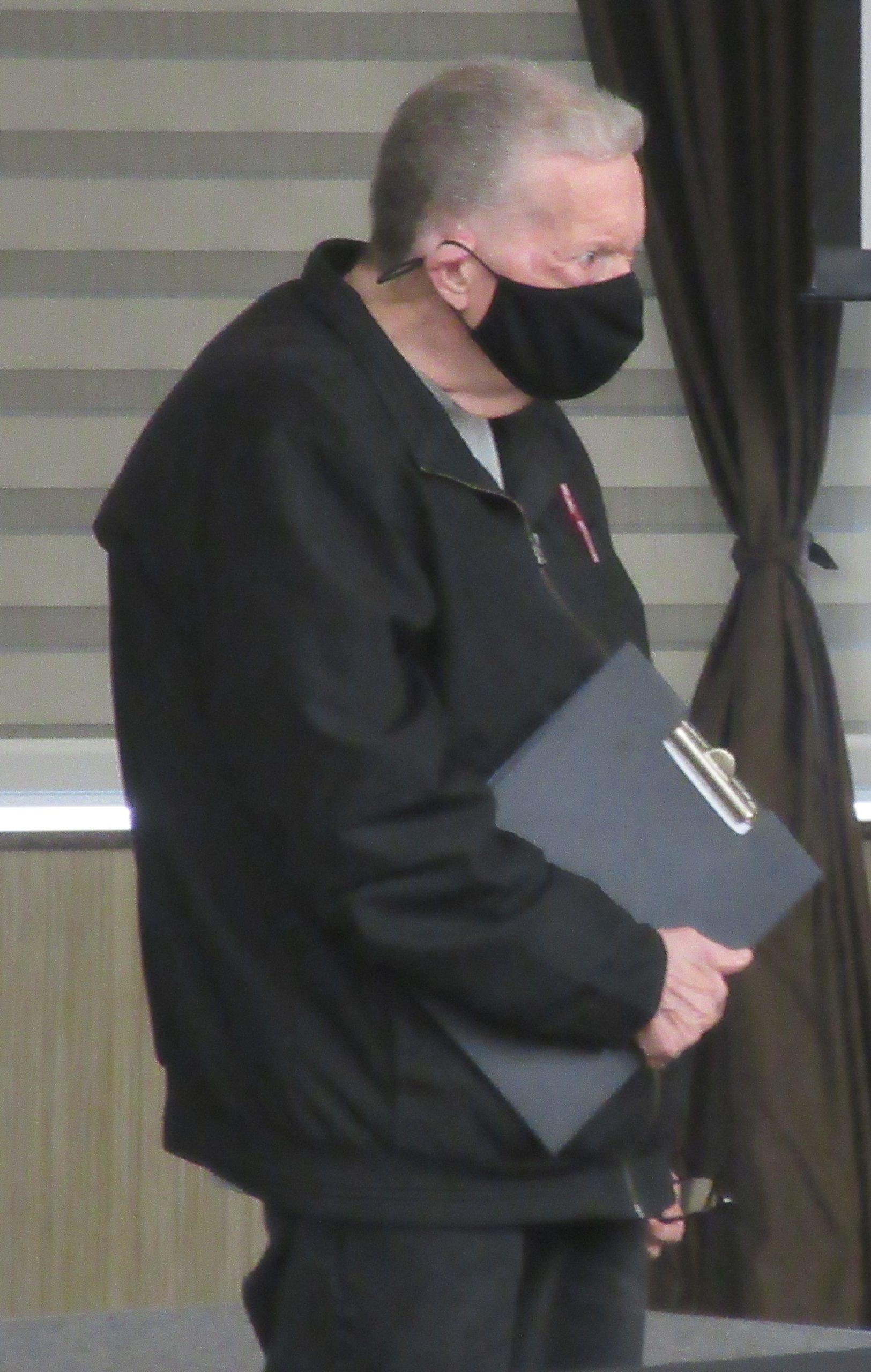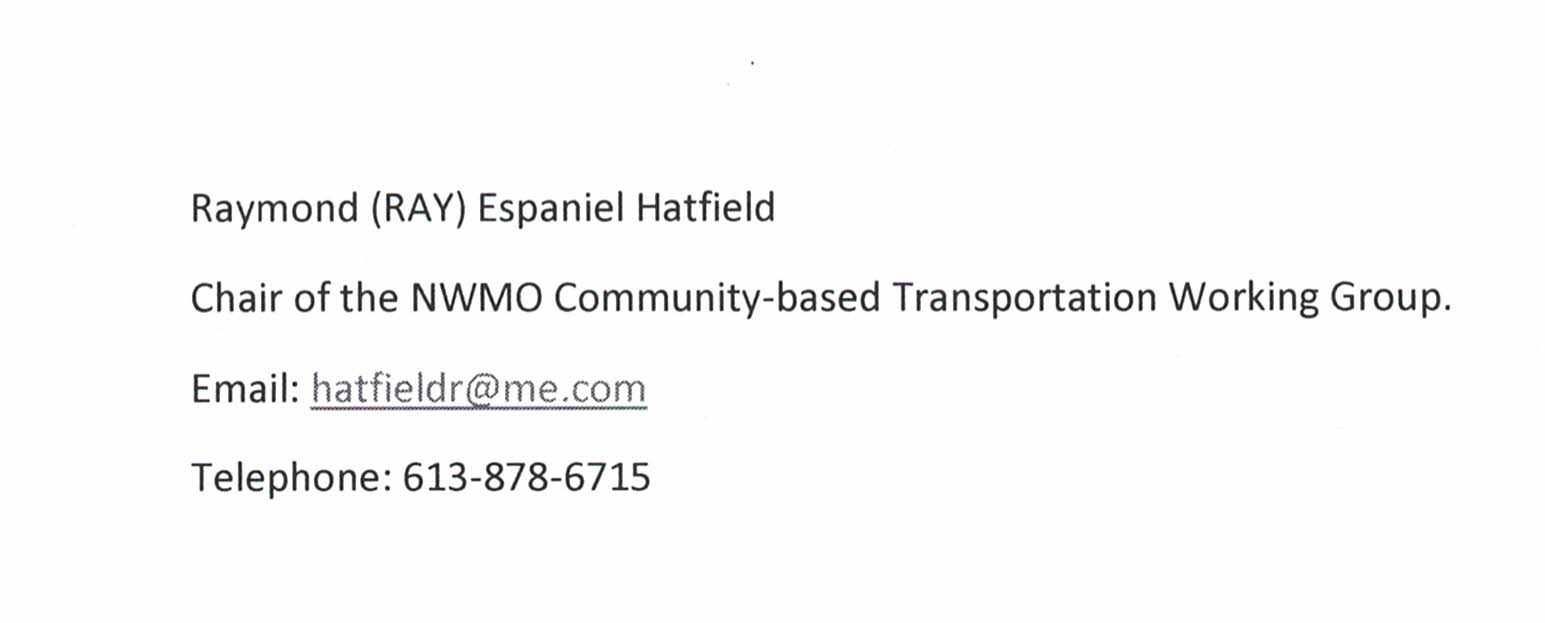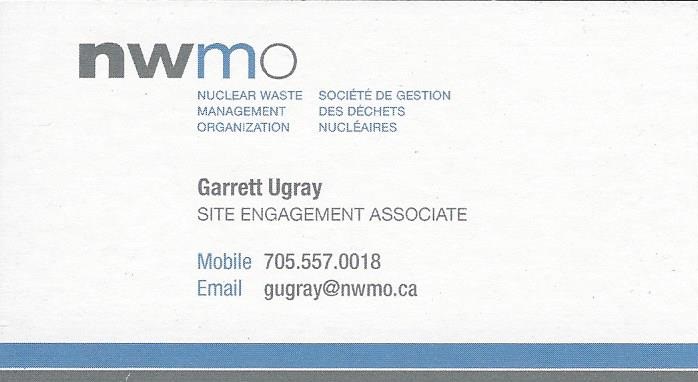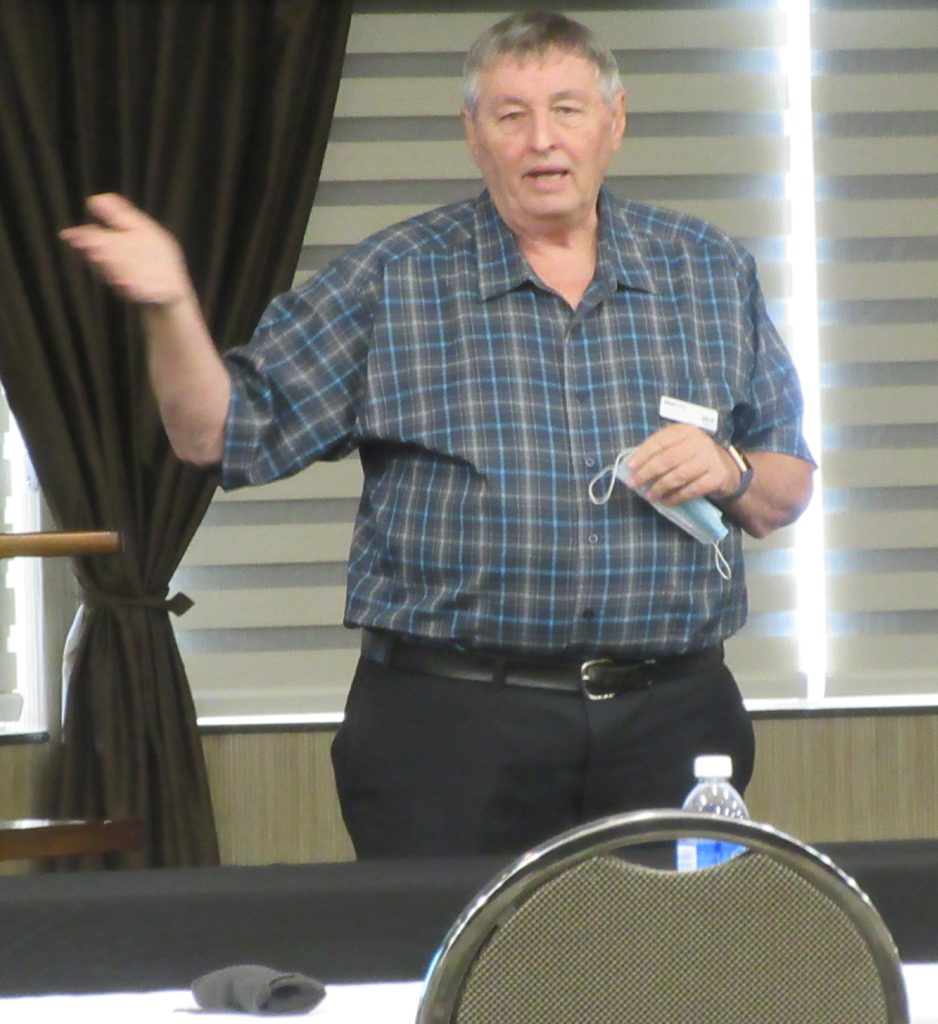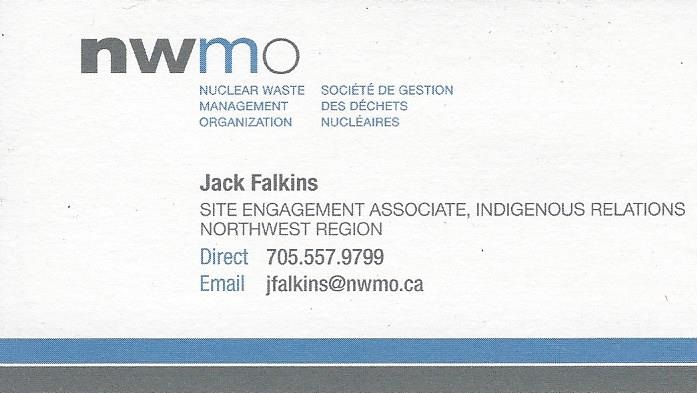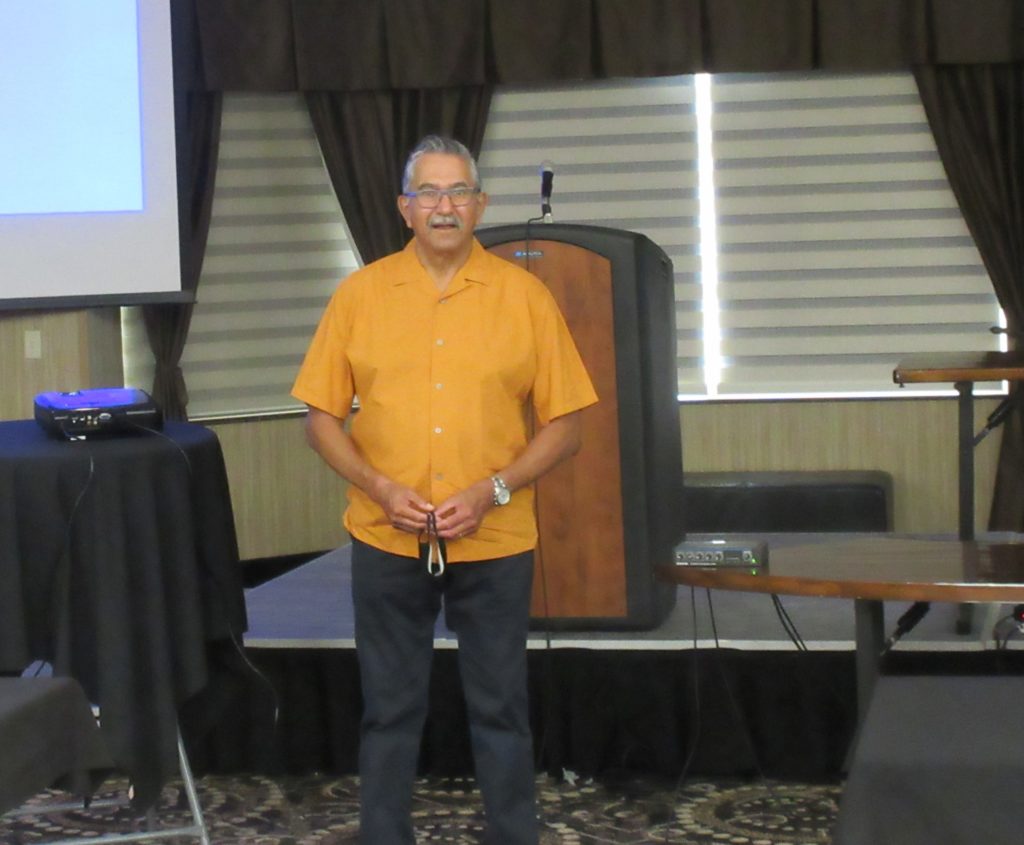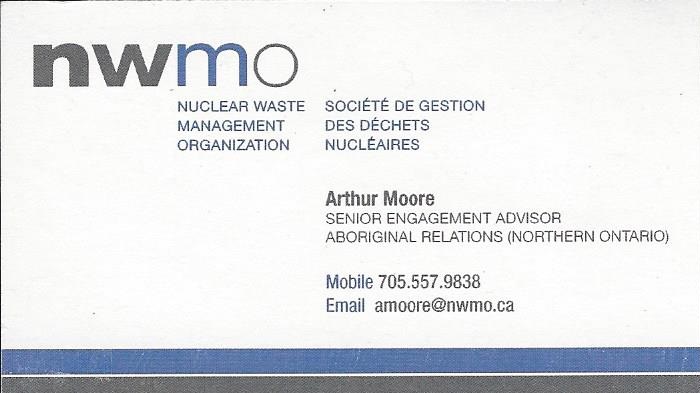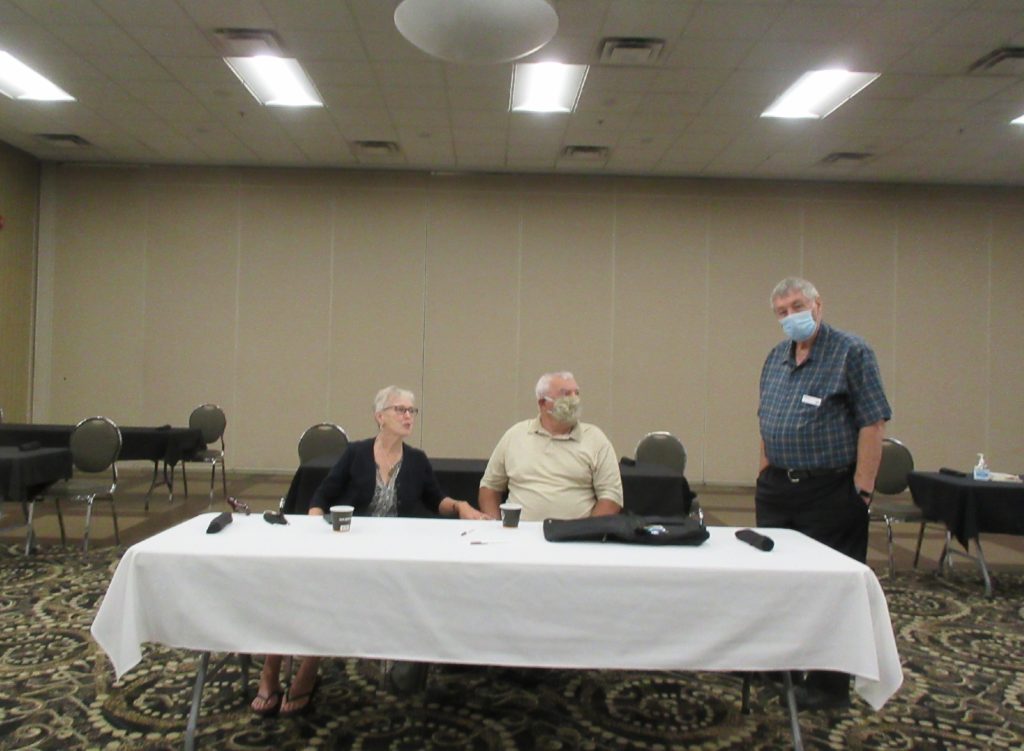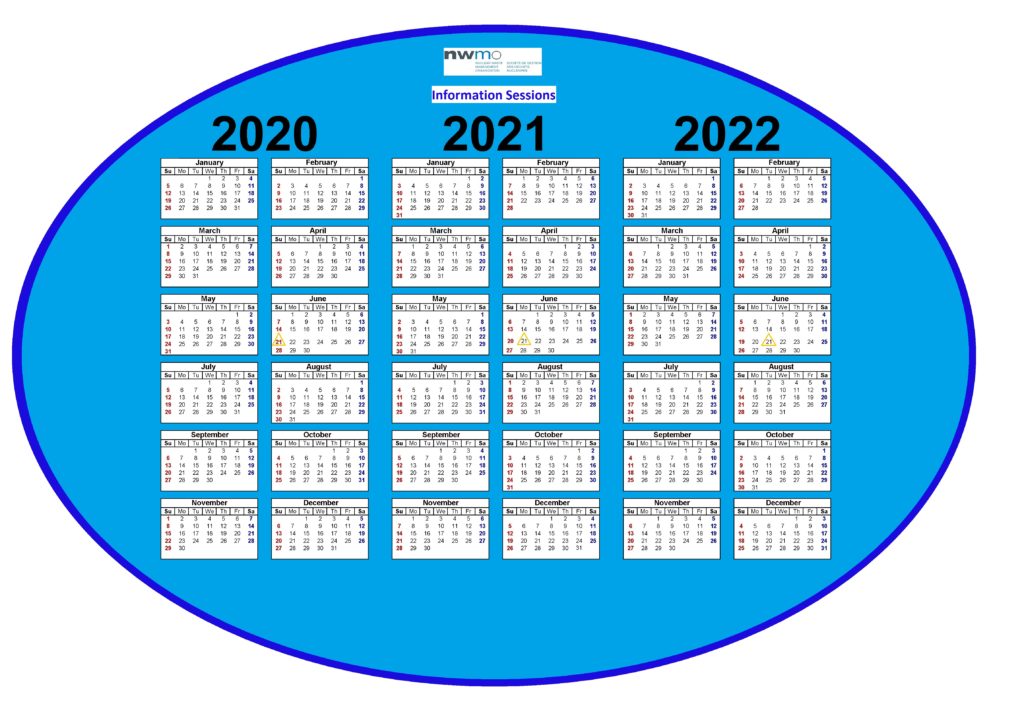
OCIP AGA- NWMO Presentations on Sept. 25, 2022
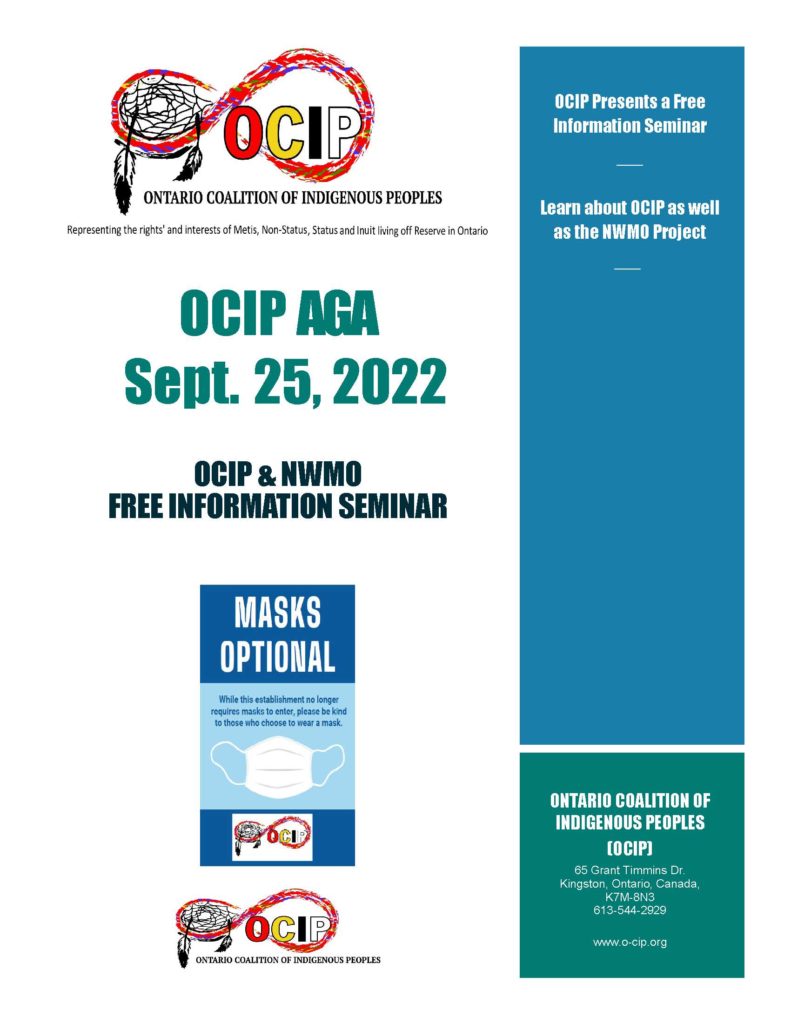
Today, at the OCIP AGA we were happy to have our Friends Greg Plain and Caitlin Burley from the NWMO. Also Ray Hatfield the Chair of the NWMO Community-based Transportation Working Group.
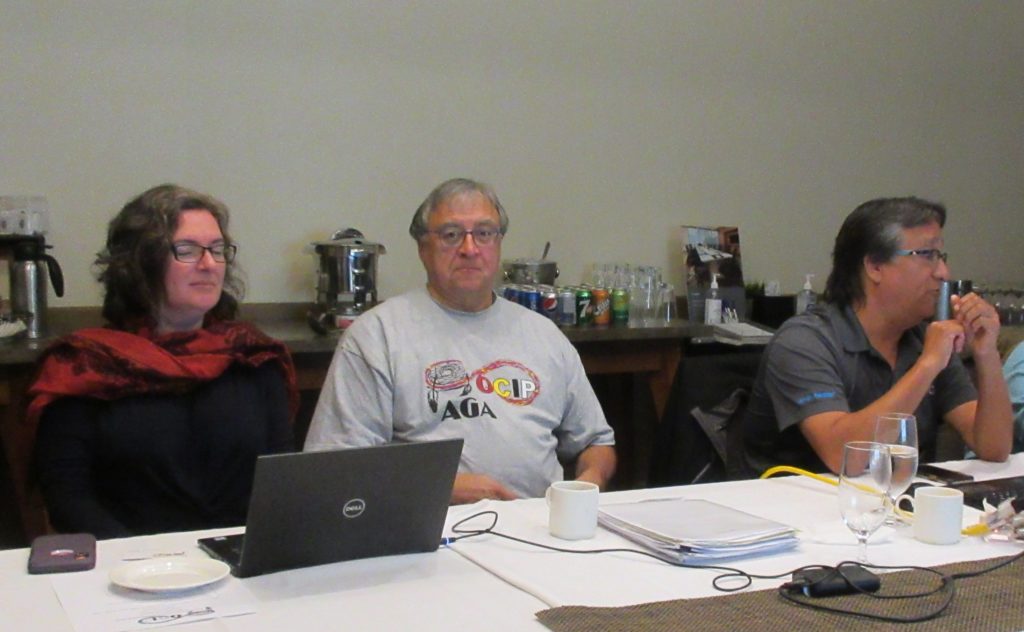
Greg Plains Presentation


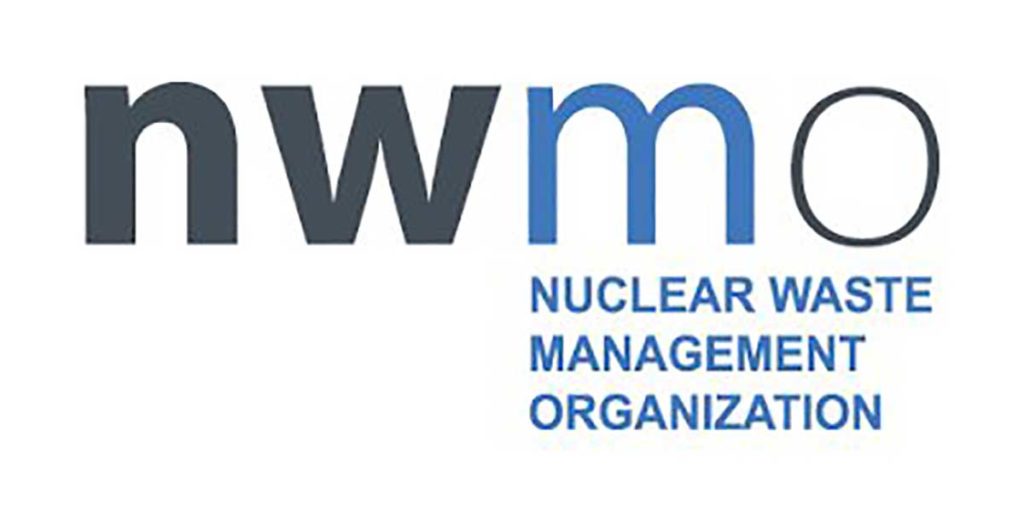
Greg Gave an interesting synopsis of how the NWMO fits into a greater whole of organizations that all are designed to Protect all Peoples from any harm that could arise from the Storage of used Nuclear Materials.


Over the Years the NWMO has scaled down Multiple Possible Underground Storage Sites to now just two, the Ignace Ontario Site (1) or the South Bruce, Ontario Site (2). This was a long and difficult task, that was accomplished with much research and with the Help of many Partners.
The Nuclear Fuel Cycle is one that takes in many parts of Canada and at every step Safety is undertaken. So, it only makes sense that the same Prudence and Safety is taken in its Storage.


What is the makeup of used Nuclear Fuel? First, there is the Fuel Pellet, then many of these are placed in a Fuel Pencil. Many of these are formed into a Fuel Bundle. These Fuel bundles are placed into the Nuclear Reactor. Once their Fuel life is completed, they are ejected from the Reactor and are now Nuclear Waste.
When these used Nuclear Fuel bundles are removed from the Reactors, they are placed in Water pools to cool for a minimum of 7 years. Of great interest the water contains the Radiation, and this ensures the Bundles are safe to be around.


Once these used Nuclear Fuel Bundles are removed from the pools, they are placed in Dry Storage Containers for a minimum of 50 years. Please note there are countless forms of Monitoring that is undertaken daily to ensure safety.
But what then? Afterall these used Nuclear Bundles must be stored indefinably. This is where the Deep Geological Repository is called for. It utilizes multiple Barriers to protect all from any residual Nuclear Radiation. Also, with it being of a Geological Basis this will keep the materials far from any harmful surface conditions.


The NWMO is moving along well with all the multiple tasks that are before them. As can clearly be seen from their placement on this timeline.
To say that the NWMO merely “Listens” to Indigenous Views is to state simply how far they go to Graft Indigenous Knowledge into every step and part of the Selection, Construction, Transportation, and Ongoing Storage of Used Nuclear Materials.


Caitlin Burley and Ray Hatfield’s Presentation
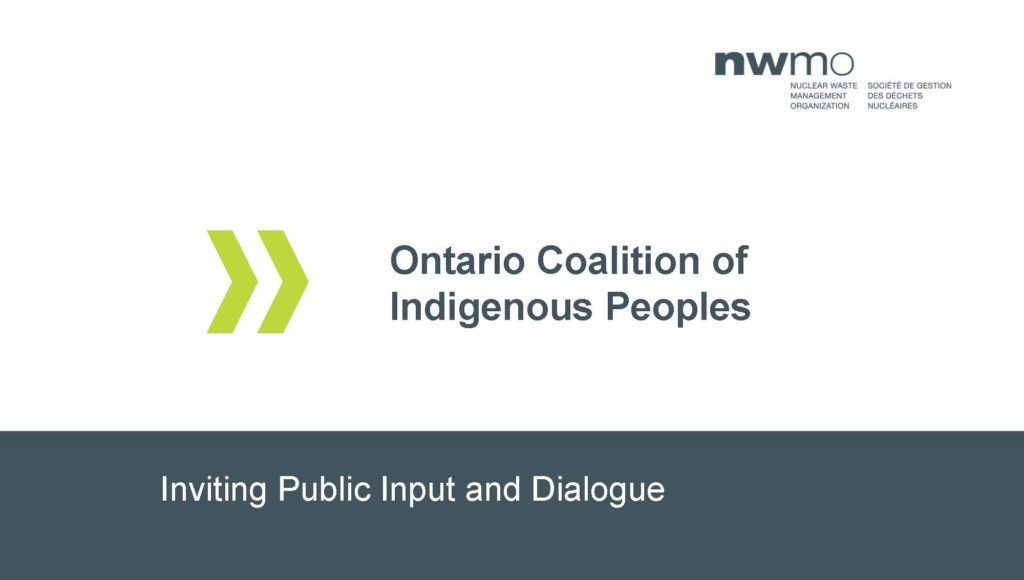
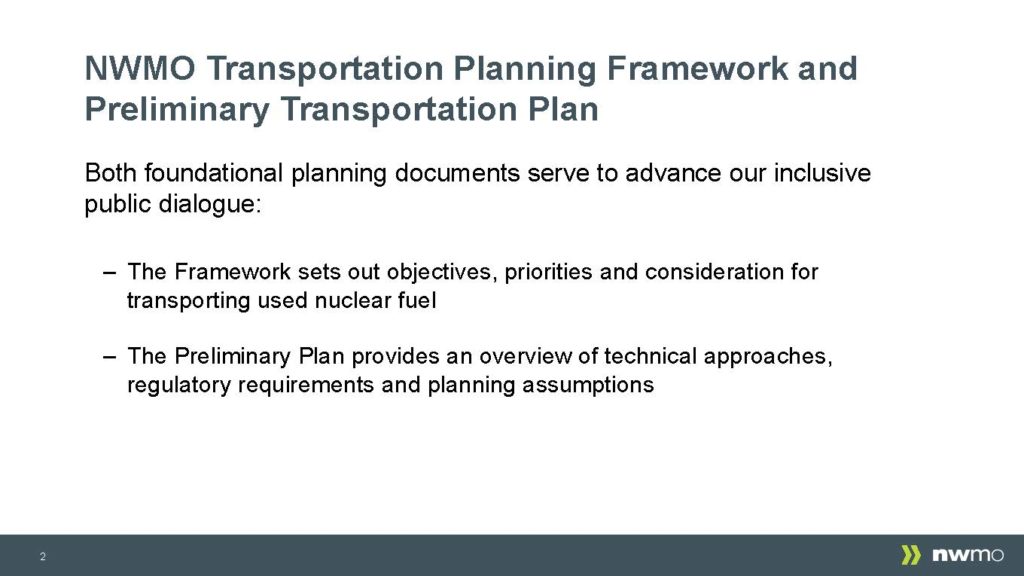

How did the Transportation Component and the NWMO Community-based Transportation Working Group begin?
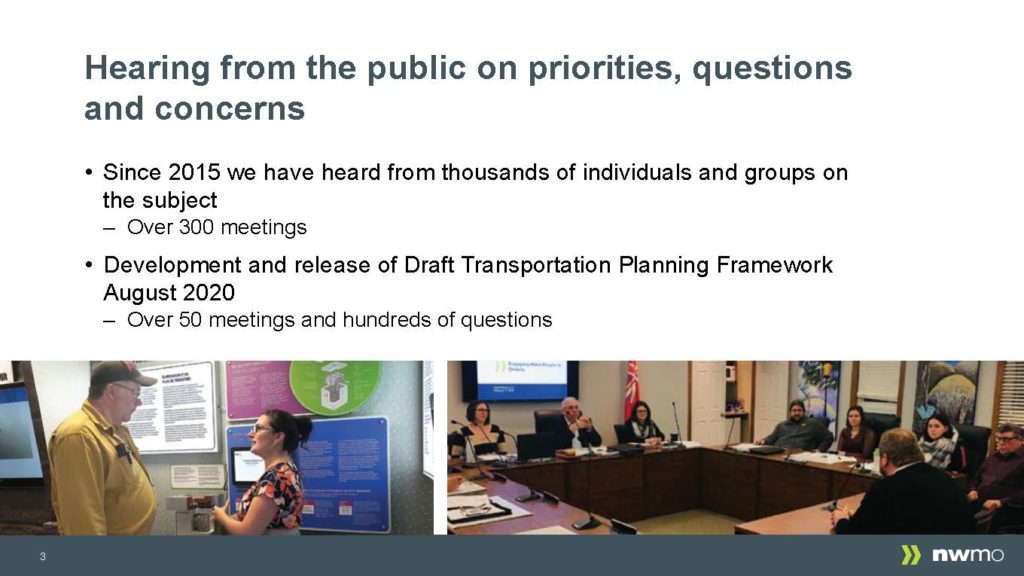
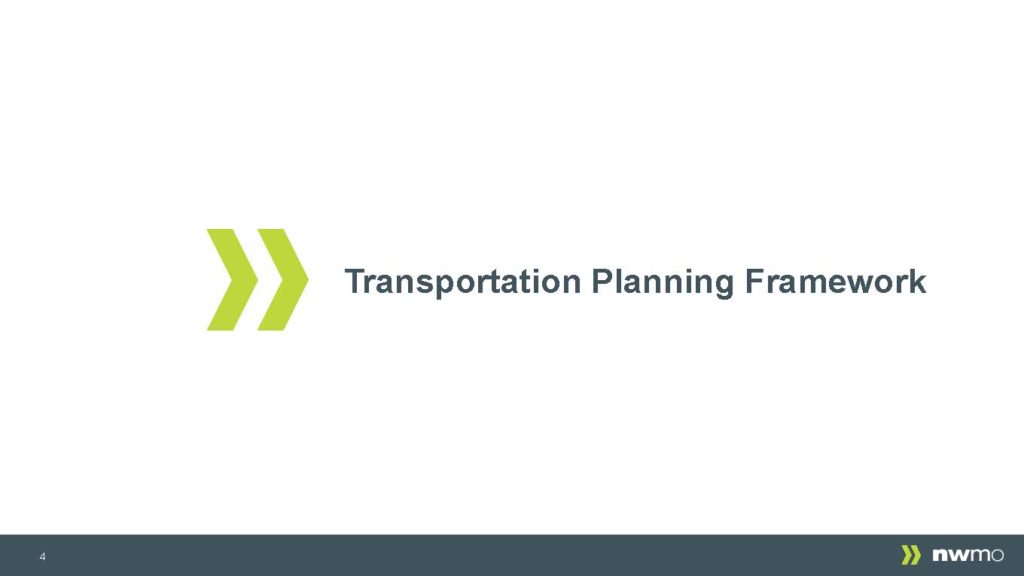
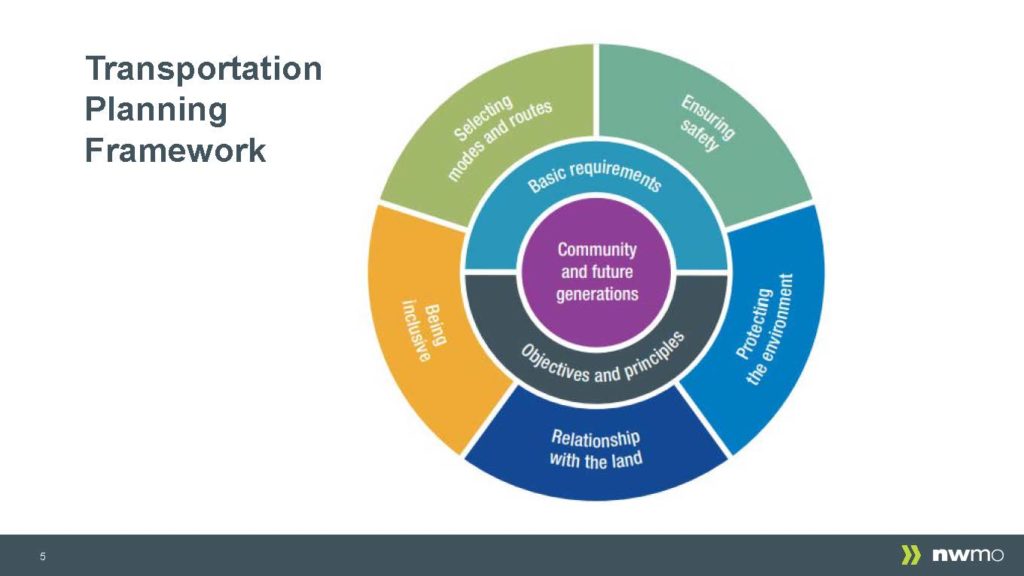
It must be remembered that it is so easy to come to one conclusion if yours is the only voice heard. However, the NWMO set in place a Transportation Planning Framework that includes all possible voices, including those of Indigenous Peoples.
Even with all these many varied wise voices, there still are so many pieces and all must fit together for the benefit & safety of all. But before this is completed there will be new unseen pieces that must be added. The NWMO has pledged to address all of these for the Safety of all Peoples.
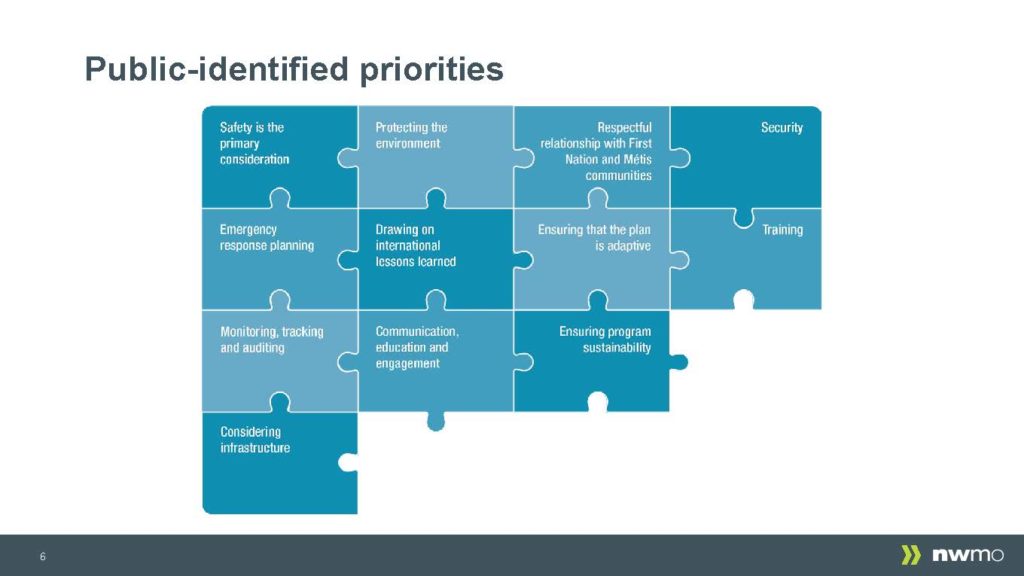
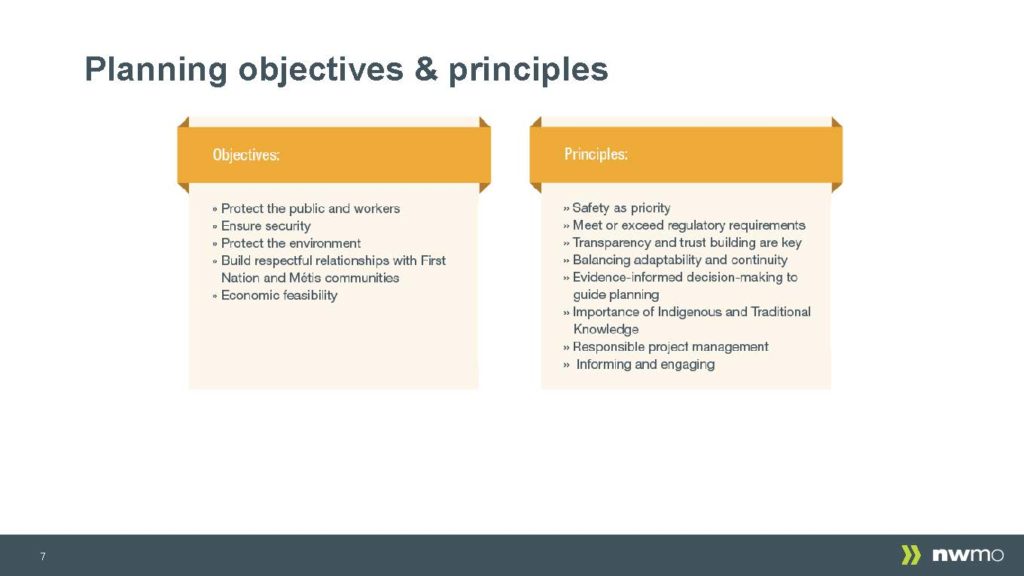
One way of tackling this huge task, is by breaking every Objective into manageable and measurable Principles. Every concern has been put through this stringent Practice.
From all of these Wise Voices, Objectives, Guidelines, etc. there was created a Proposed approach to implementing the Framework.
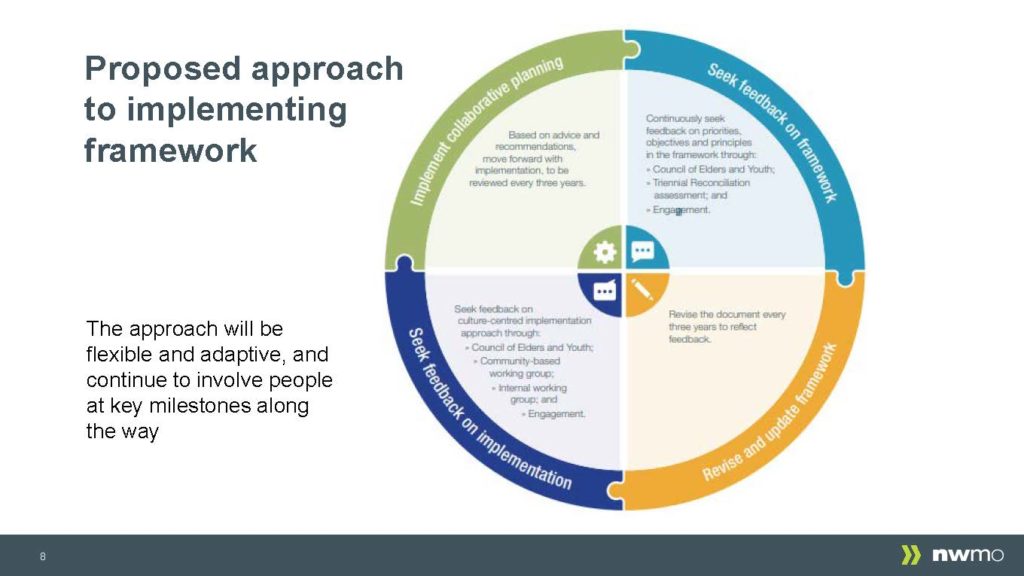
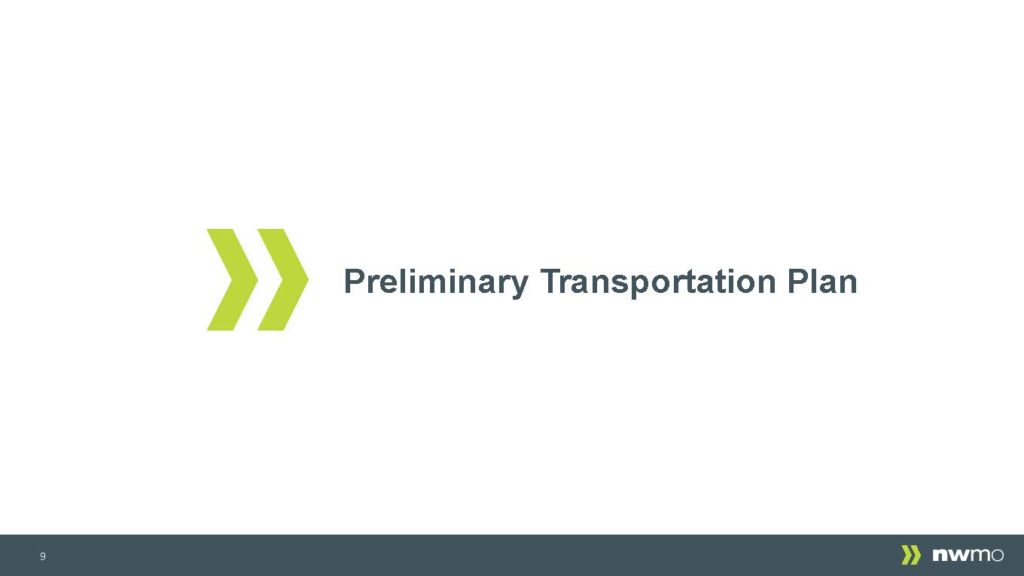

Event in the area of Nuclear Waste Materials Transportation, the NWMO has a multi-layered safety program.
Next, you will note the different Transportation modes for the Northwestern Ontario considered site and the Southern Ontario considered site.
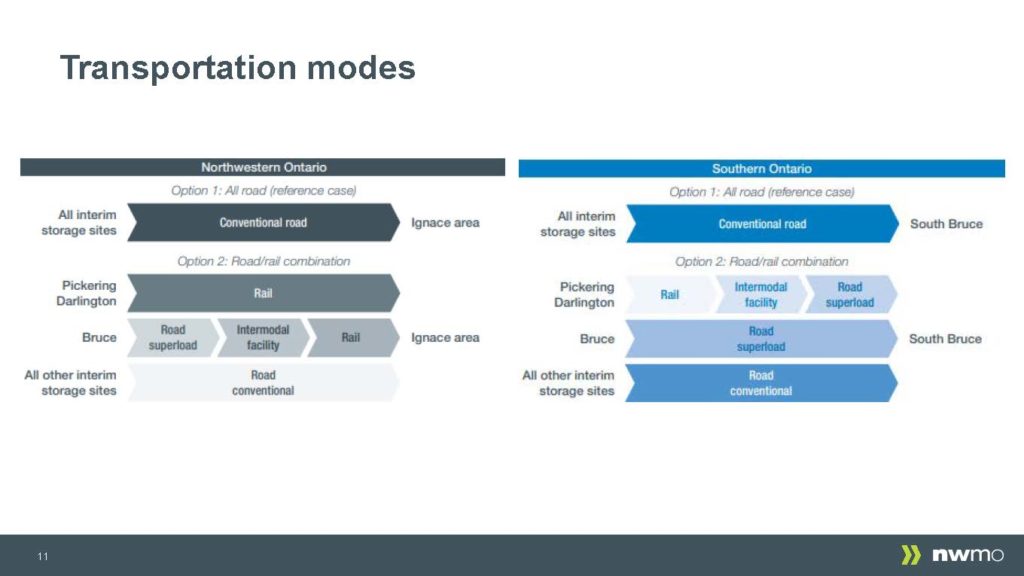
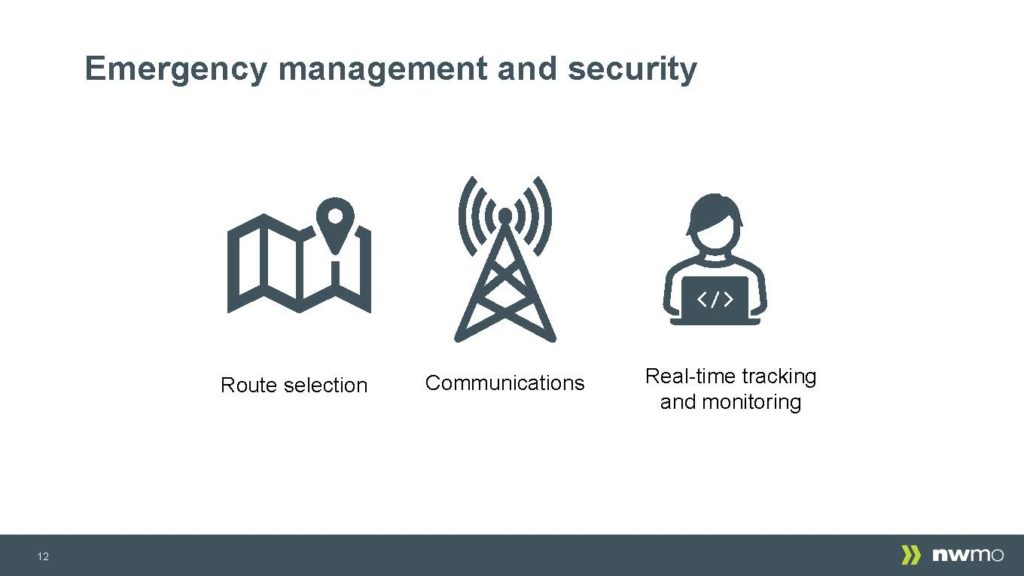
Here is one example of the System in practice. The Route is carefully selected (and monitored for safety), The Trucks, Trains, etc. is in constant Communications, and finally there is Real-Time Tracking and Monitoring of every Shipment.
Every step is monitored by both the Canadian Nuclear Safety Commission (CNSC) and Transport Canada.

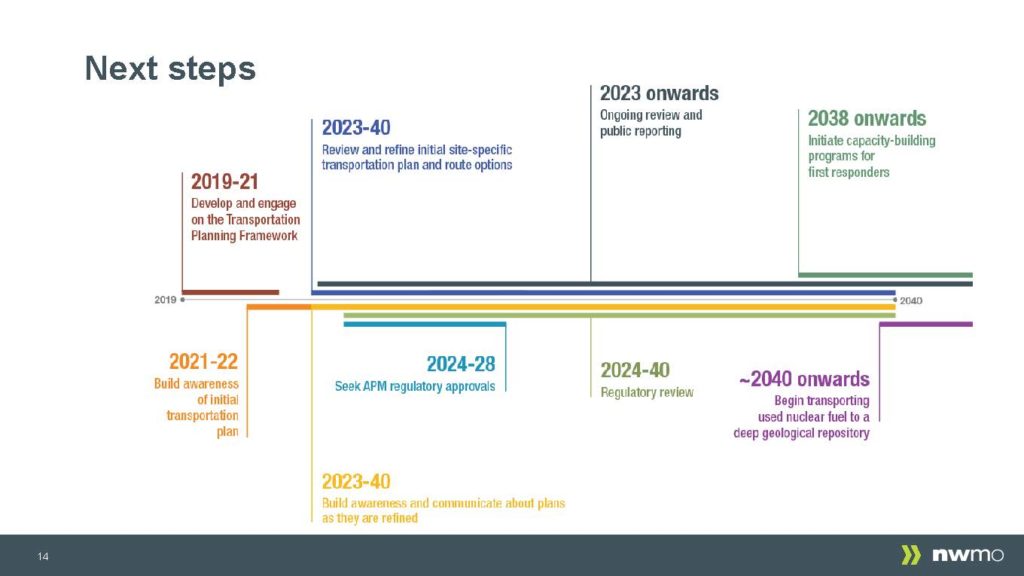
Here, you see both the progress and steps that the NWMO will undergo in the near and distant future.
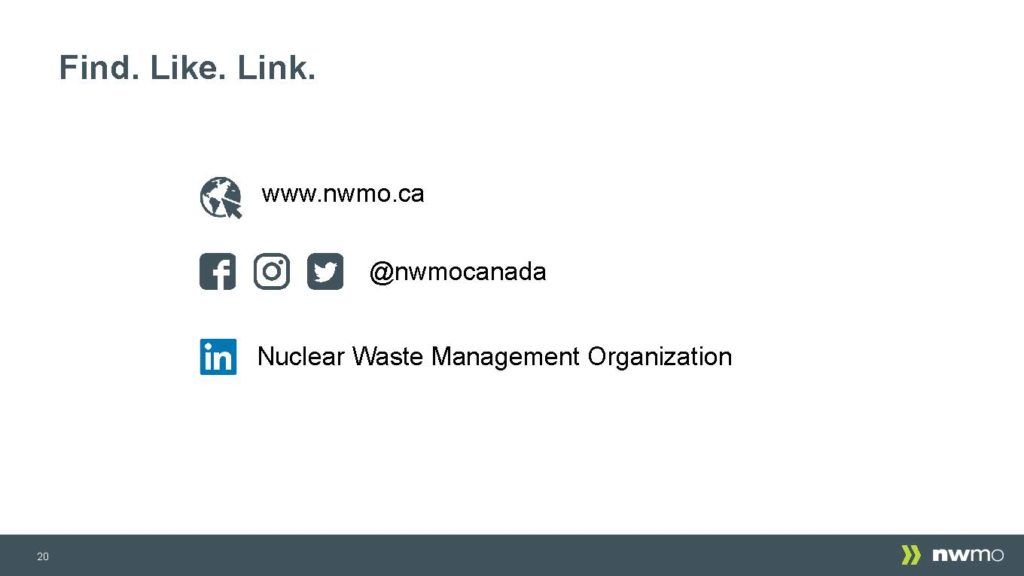
Senior Engagement Advisor Indigenous Engagement
519-381-7436
It was great to see our old friends, Greg, Caitlin, and Ray. They all gave an amazingly insightful discussion on their Complex tasks before them. It must be noted that each presenter spoke not from a script or book. No, each one has asked the Difficult questions that we may also have, and each has done their own research. After this they can get before us and speak with the confidence that the Peoples safety, concerns, etc. are always put first. Also, that Mother Earth is Protected now and far, far into the Future.
NWMO Meeting in Kincardine on Oct. 15, 2022
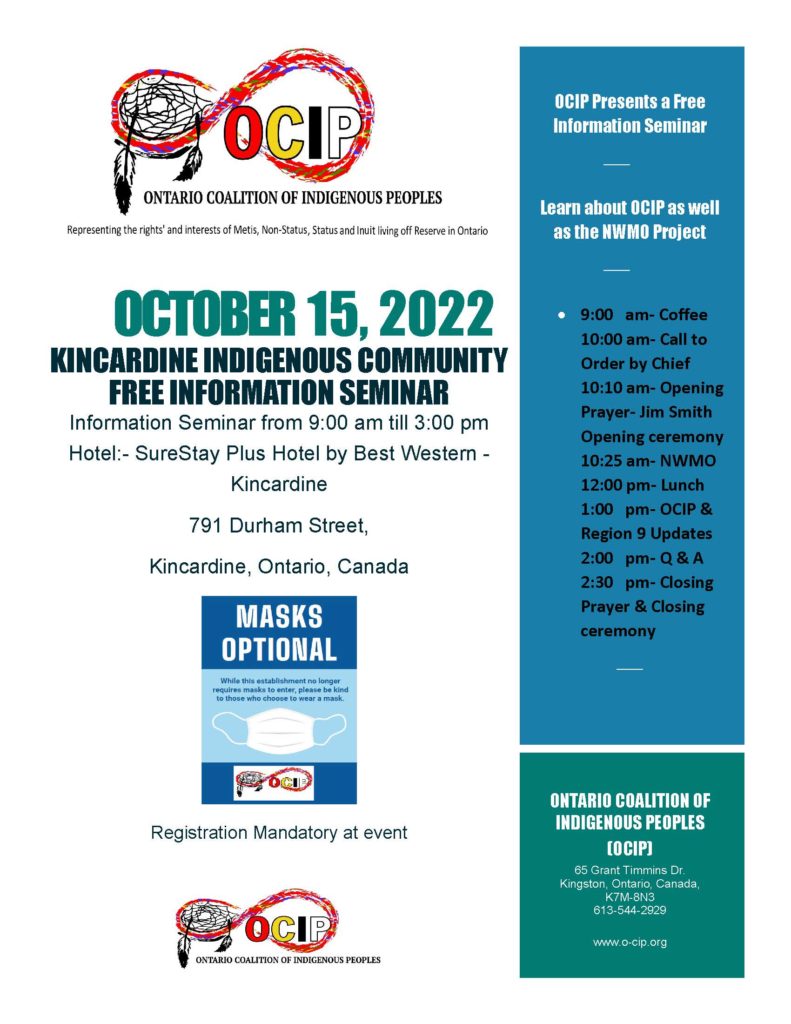
No Participants.
NWMO Meeting in London on Sept. 10, 2022
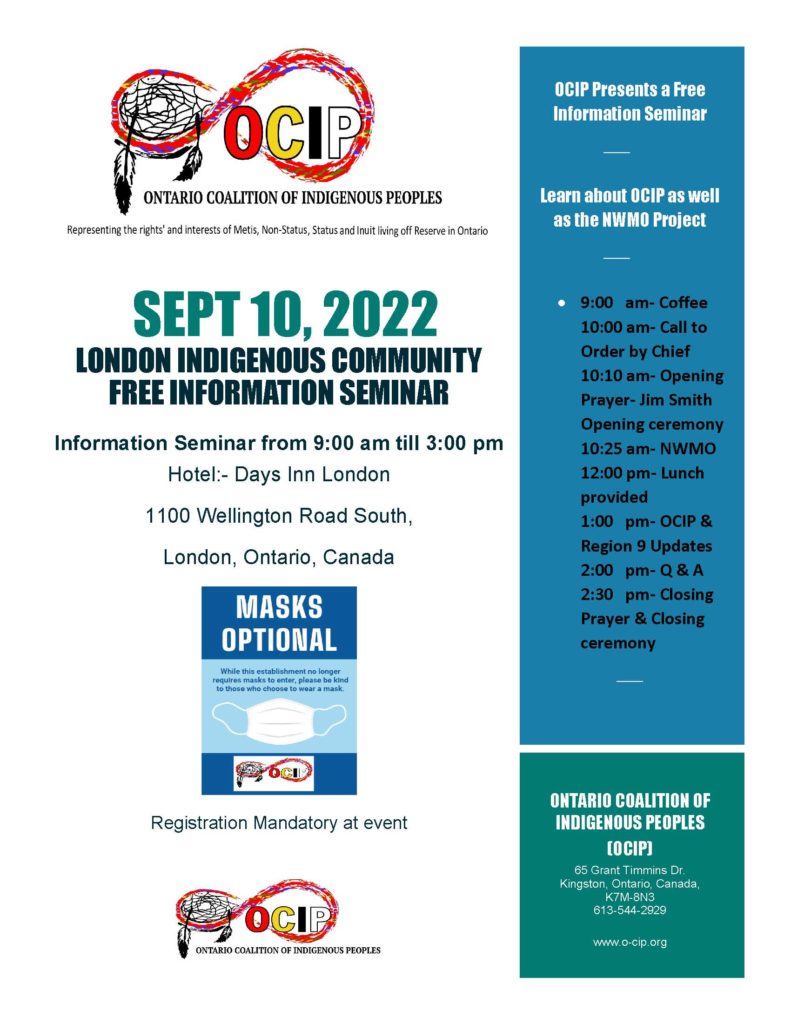
No Participants.
NWMO Meeting in Dryden on Aug. 20, 2022
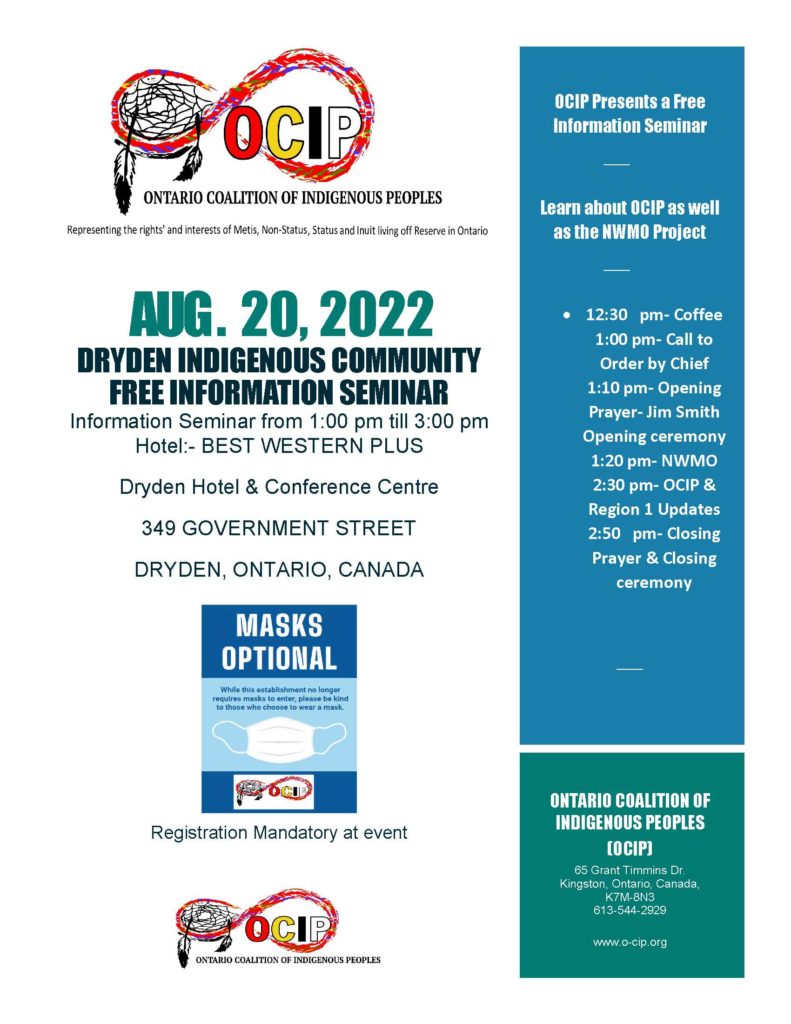
No Participants.
NWMO Meeting in Kincardine on July 23, 2022
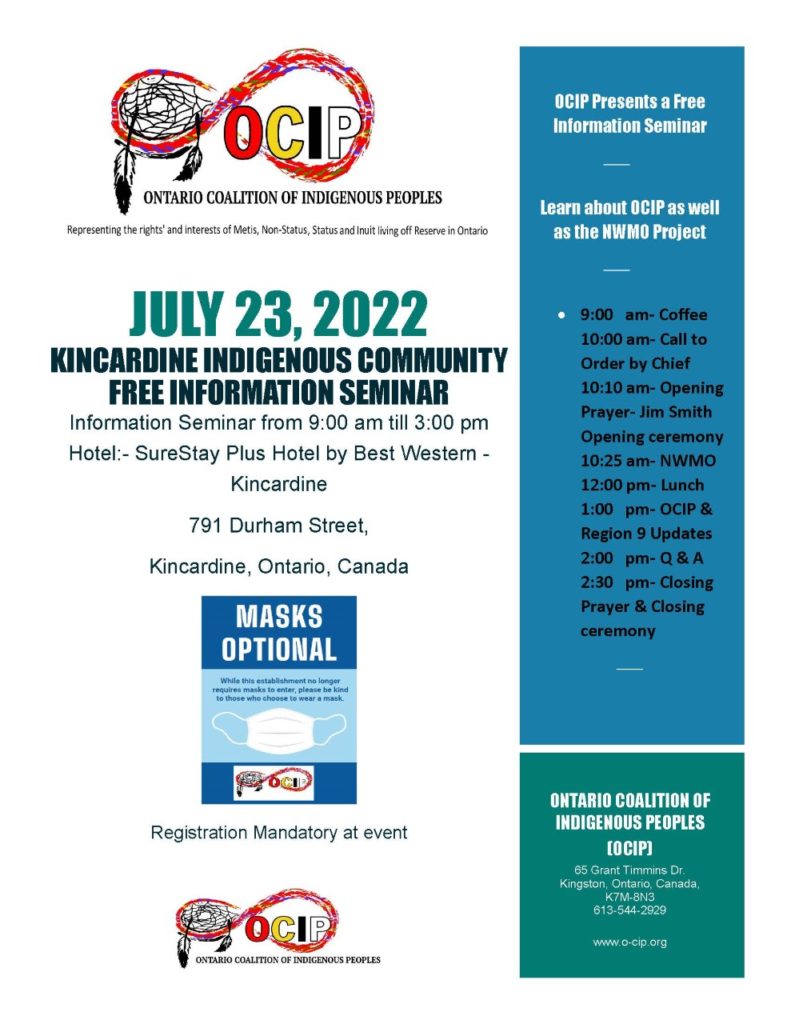
No Participants.
NWMO Meeting in London on June 11, 2022
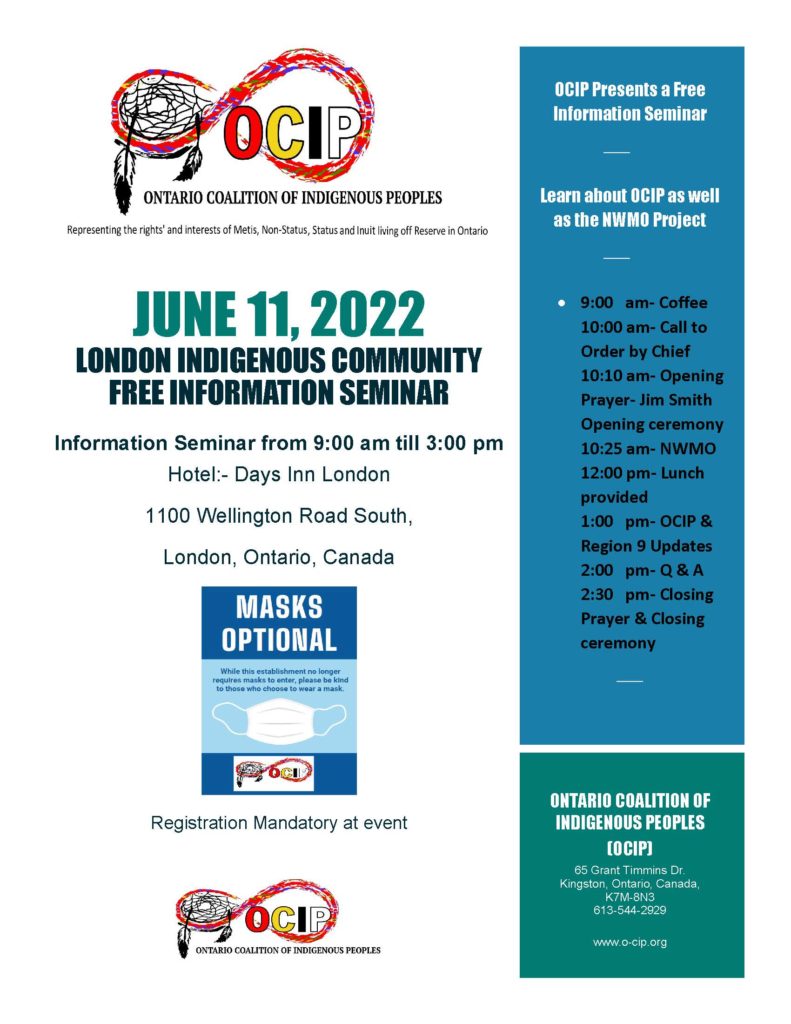
Opening Welcome By Chief Mona Denomme
Drumming By Region 6 Governor T.J. St.Pierre & Brian St.Pierre
Prayers by Elder Jim Smith
Today at the OCIP NWMO Info. Session, we met a new NWMO friend of Brittney Jones. It was wonderful to meet her and see our Old friend Greg Plain. Greg gave a Presentation entitled “Canada’s Plan for Long-Term Management of Used Nuclear Fuel”. There were many insights by Brittney that added to this presentation.
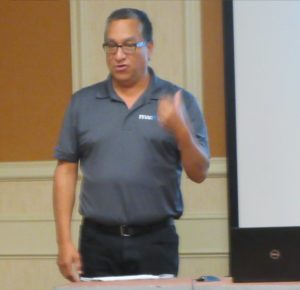
Senior Engagement Advisor Indigenous Engagement
519-381-7436
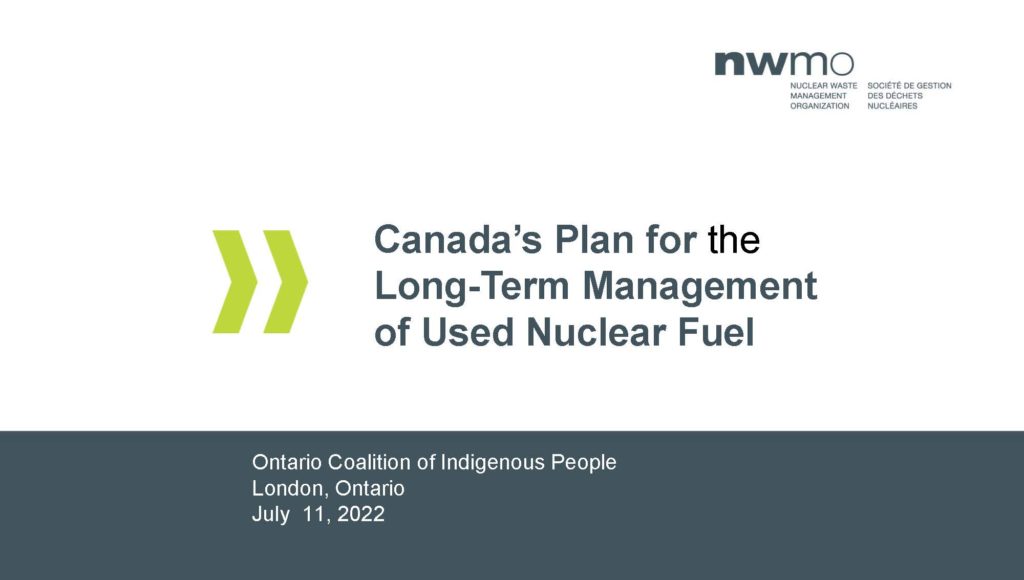
Todays Presentation Covered:
• About the NWMO
• About nuclear fuel
• Canada’s plan
• Safety and security
• Selecting a site
• Reconciliation Policy
• Indigenous Knowledge Policy
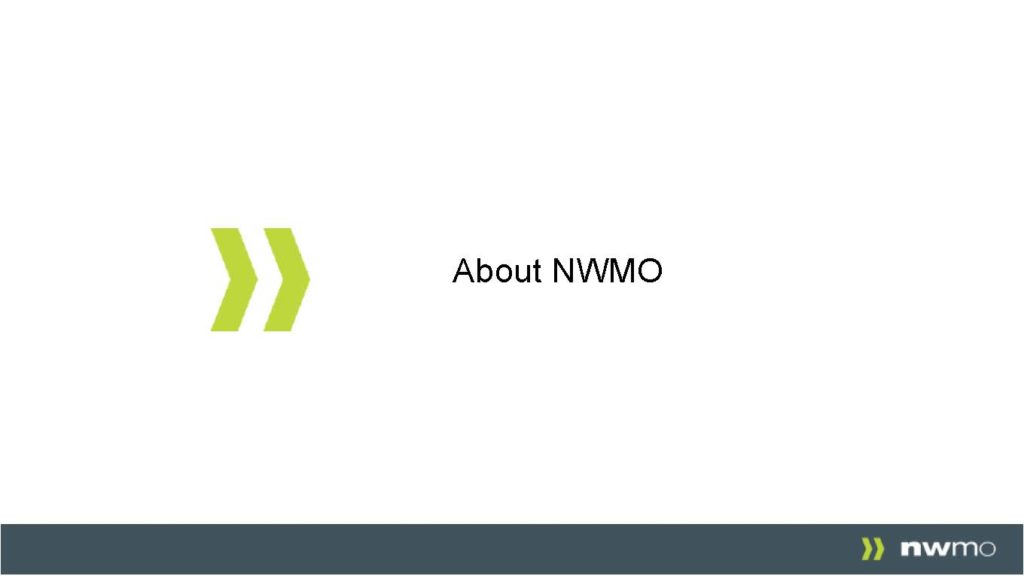
The Nuclear Waste Management Organization (NWMO) has been around since 2002 and its purpose is to “develop and implement collaboratively with Canadians, a management approach for the long-term care of Canada’s used nuclear fuel that is socially acceptable, technically sound, environmentally responsible, and economically feasible”. It is operated on a Non Profit basis and is funded by Canada’s nuclear energy corporations. Also it recession Proof as it is paid by funds within all our hydro bills. A Small portion is used for the ongoing storage of used Fuel. The NWMO is under very strict regulation and as such are very open to discussion.
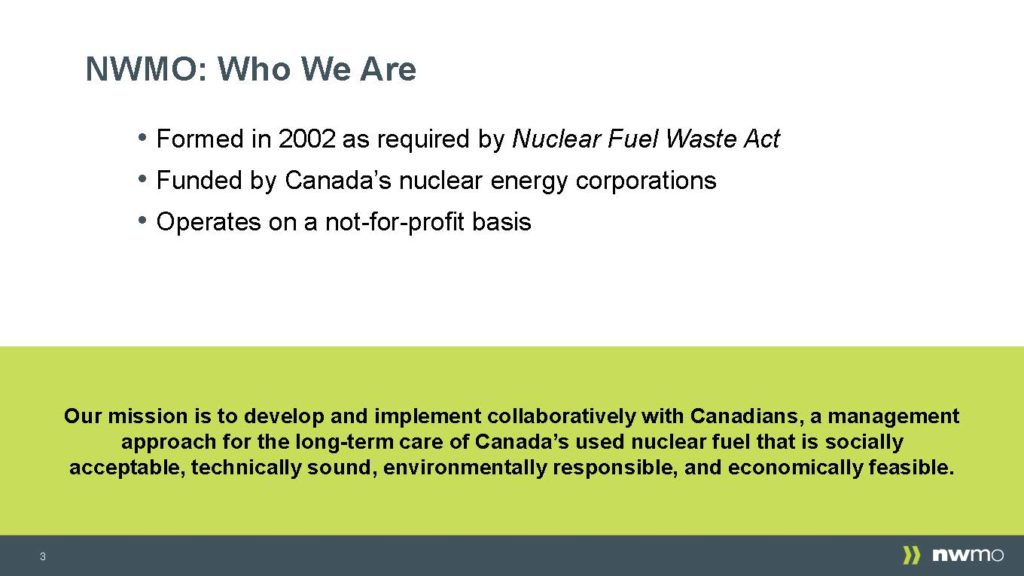
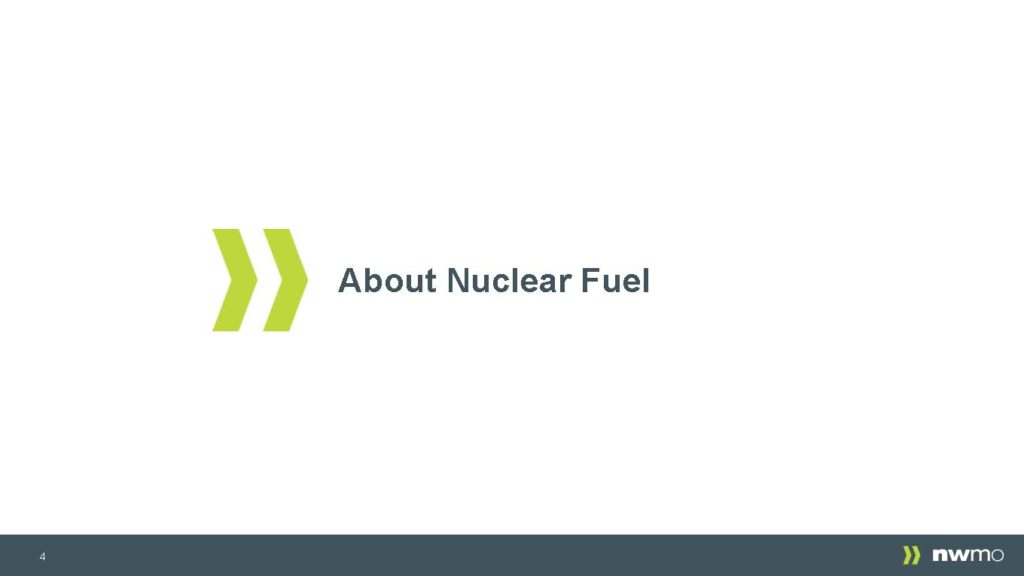
The process of Nuclear Fuel is a long one (See below 6), it goes from raw material to the Fuel Pellet form, and then the Pellets are stacked up in a Fuel Pencil. Many of these Fuel Pencils are formed into a Fuel Bundle, See above. The Fuel Pencils and the created Fuel Bundle is made of Zircaloy. Zircaloy is a very corrosive resistant and strong metal that hold up to the stresses placed upon it. Then approximately 5,000 Fuels Bundles are placed in the individual Candu Reactor for 15 to 18 months. Once the Fuel Bundles are removed from the Reactor they are cooled in a Wet Storage Facility for 10 years or until cool enough to be moved to a Dry Storage Facility (See below 8). While there the Fuel Bundles are both stored and protected in Dry Storage Containers (See below 9). These Containers are stored until they are moved and this safe storage is what the NWMO is tasked with to “develop and implement collaboratively with Canadians, a management approach for the long-term care of Canada’s used nuclear fuel that is socially acceptable, technically sound, environmentally responsible, and economically feasible”.

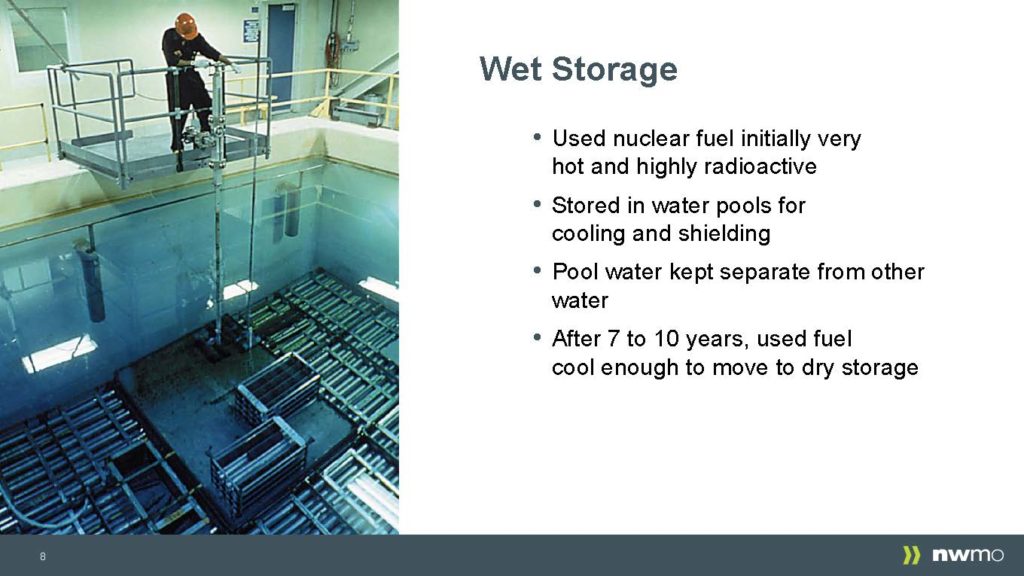
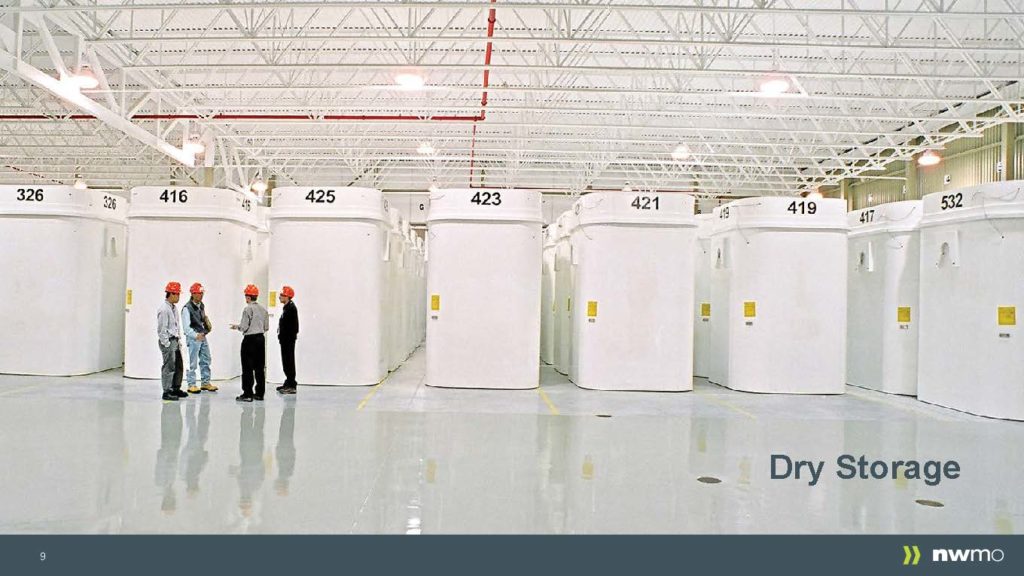
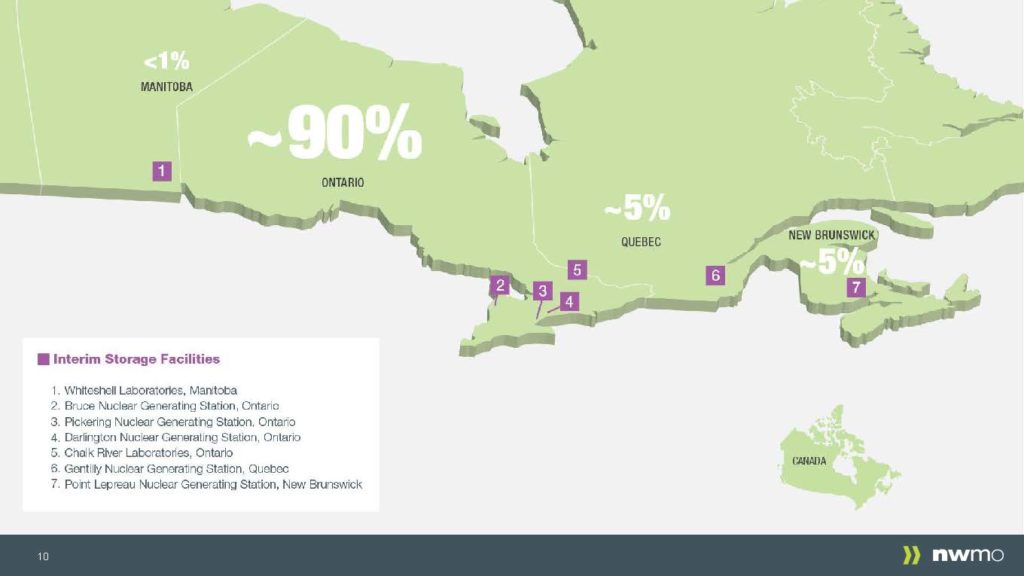

After an initial three year Consultation from 2002 – 2005. Where NWMO met with more than 18,000 Canadians, approx. 2,500 Indigenous people, 500 specialists, etc. having 120 information and discussion sessions in every province and territory. There results were found to be that Safety and security is top priority, that this generation must take action as we owe it to future generations, all safety, etc. must be consistent with best international standards and practices, that any Approach must be adaptable – allow improvements based on new knowledge or societal priorities, and a deep geological Depository was most desired (See below 15).
So for this last criteria an Adaptive Phased Management Model was created (See below 14).
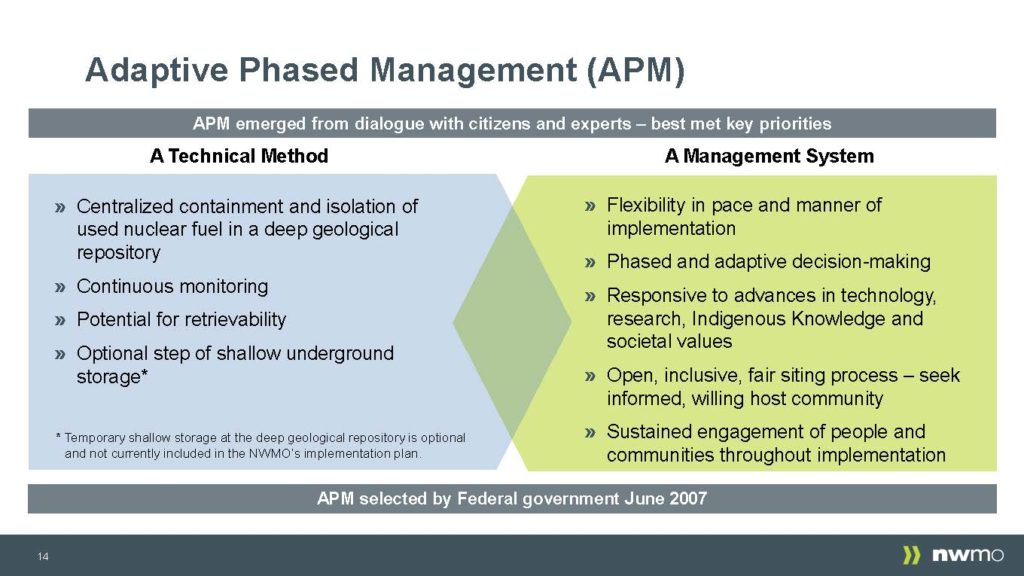
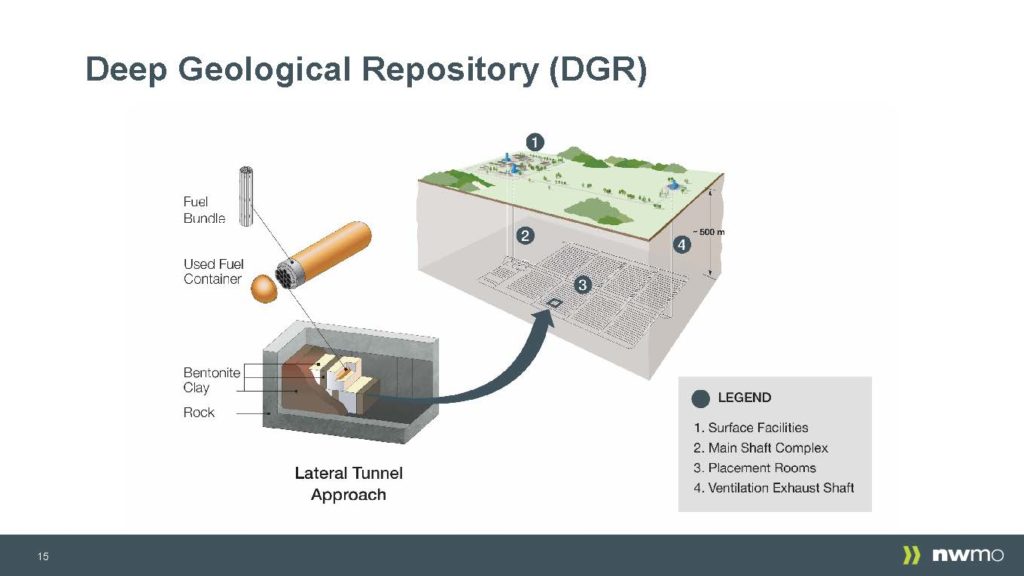

The Safety & Security falls into the Multiple Barriers to contain and Isolate.
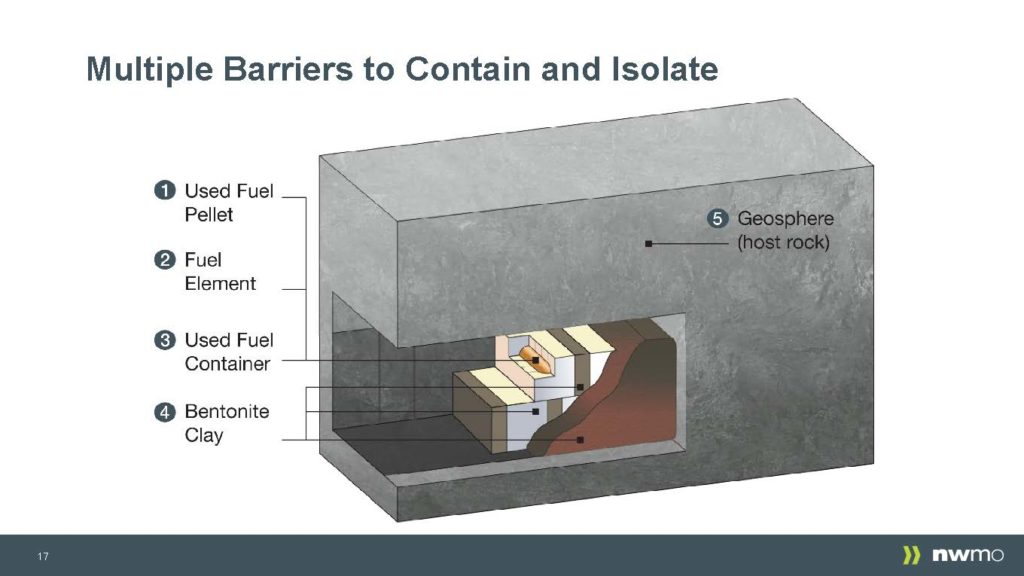
There are five Barriers in addition to the natural physical barriers of the chosen location. They are Barrier #1- Fuel Pellets, Barrier #2- Zircaloy Fuel Pencils & Fuel Bundles, Barrier #3- The used Fuel Containers, Barrier #4- Bentonite Clay, and Barrier #5- Geosphere or Host Rock. As we heard the Fuel Pellets are completely water insoluble therefore will not dissolve in water and cannot leach into waterways or effect the ground. Next, the Zircaloy creates a strong and resistive barrier between the Fuel Pellets and the environment. The used Fuel Containers are a sealed Barrier that literally seals in the used Fuel while keeping everything out. Is Strong and holds up to the revenges of time and the environment. Then the Bentonite Clay is shaped to the exact fit and size of the Containers and any excess Space has it packed. The Clay has the ability to push any moisture back out the way it entered. So any moisture is pushed away from the used Fuel. Lastly, is the Selected Host Rock. The tests upon it has ruled out small fractures that could allow moisture in, Then there is the fact that moisture has been ruled out as an issue in these rock formations. Water is one of the greatest concerns and every step is done to ensure its presence is not near the used Fuel.


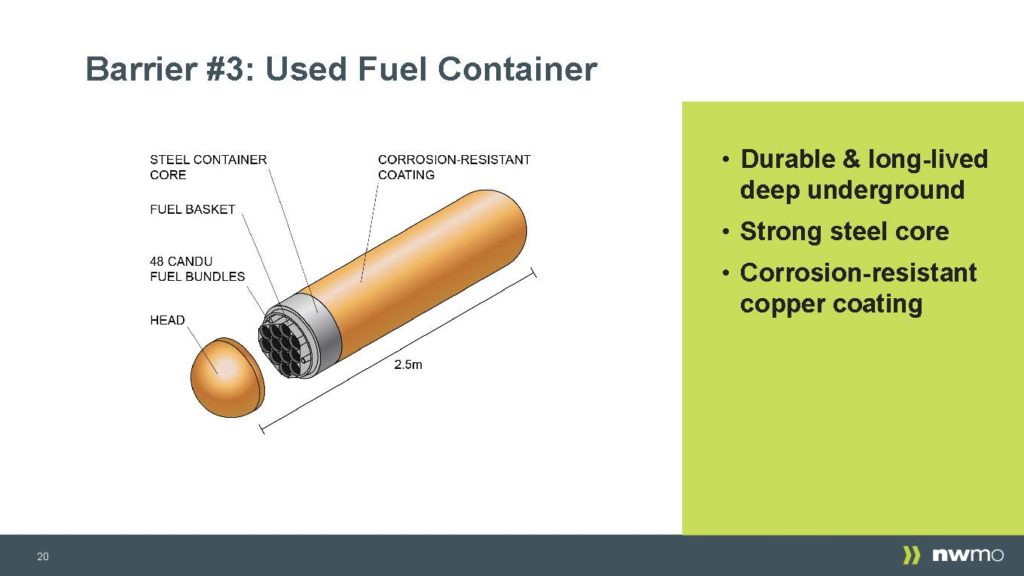
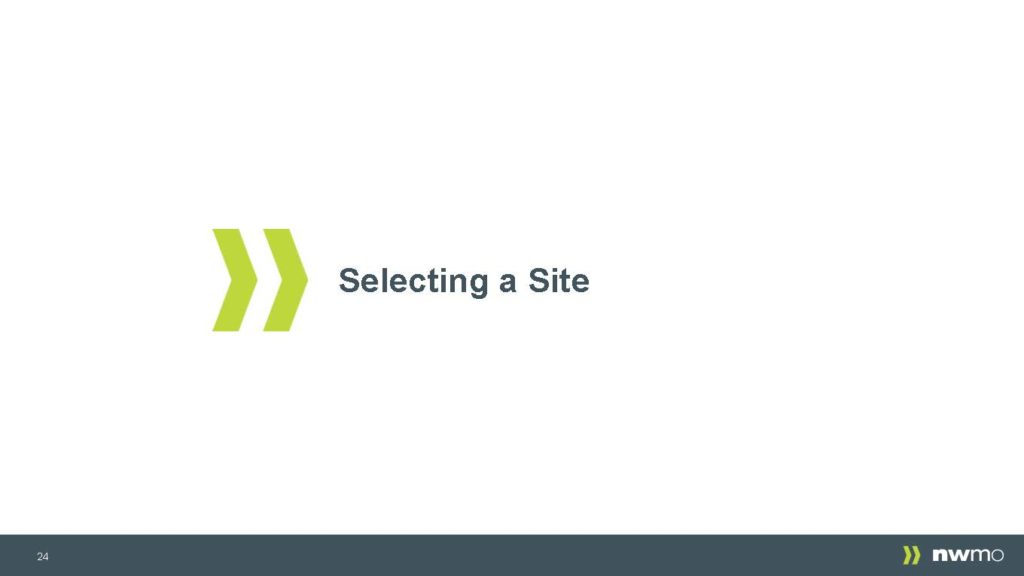
The NWMO has narrowed the site selection down to two possible sites, Ignace (# 5 on the Map) and South Bruce (# 21 on the Map). In both possible sites much preparation is going on. In Ignace six bore holes have already been drilled, while in South Bruce this is not as important, because there are many reports and the typology is well documented. You will note a Drone view of some South Bruce boreholes (See below 27).
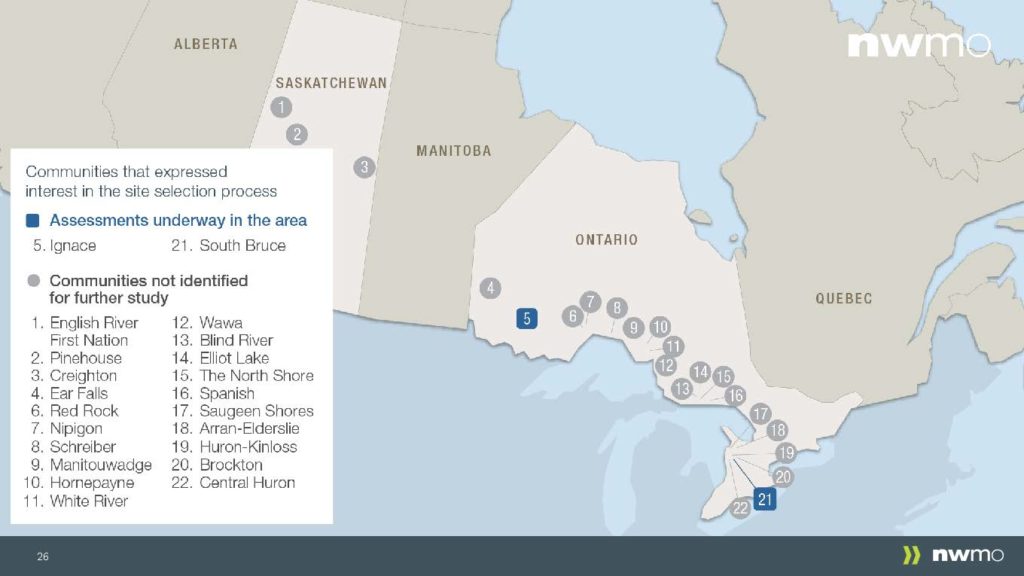
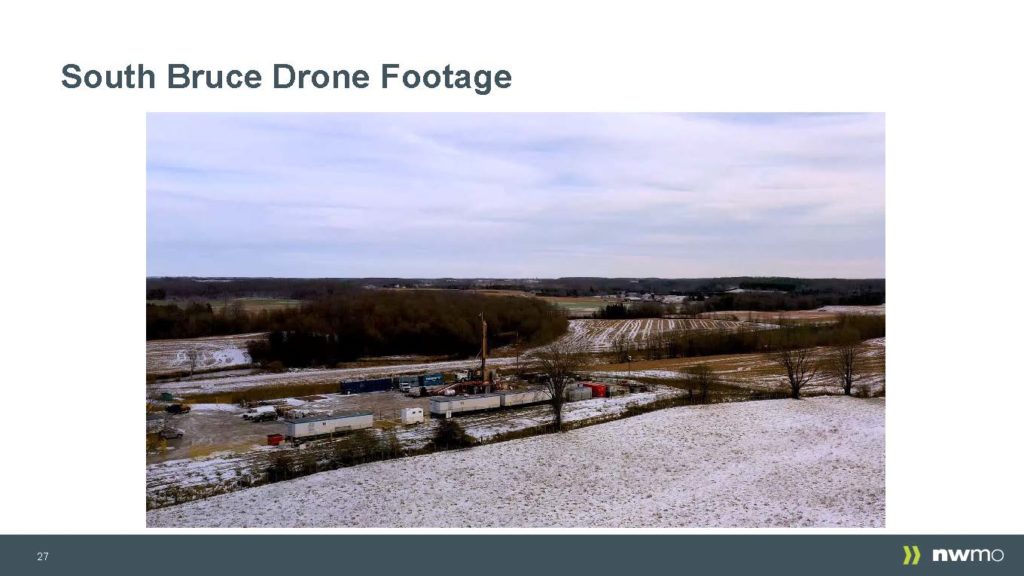
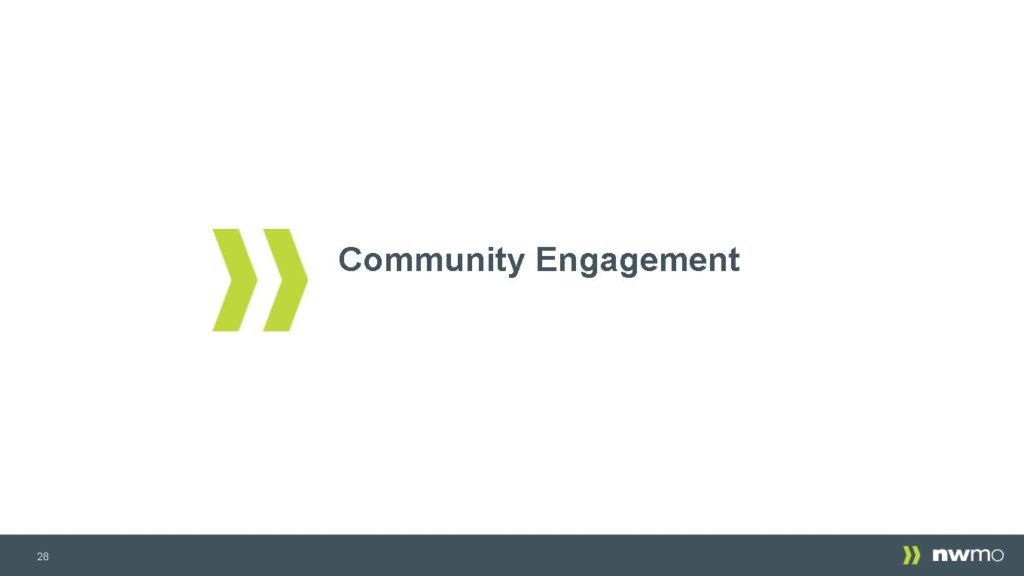
Community Engagement is Important to the NWMO because it builds awareness, understanding and helps direct studies to Answer the following questions:
– Can we identify smaller siting areas that are socially acceptable?
– Can we sustain interest in the community?
– Can we involve the surrounding area and advance the study together?
Another important step forward is the engagement of Indigenous Peoples. Both an Indigenous Reconciliation Statement and an Indigenous Knowledge Policy has been created to aid in this process.
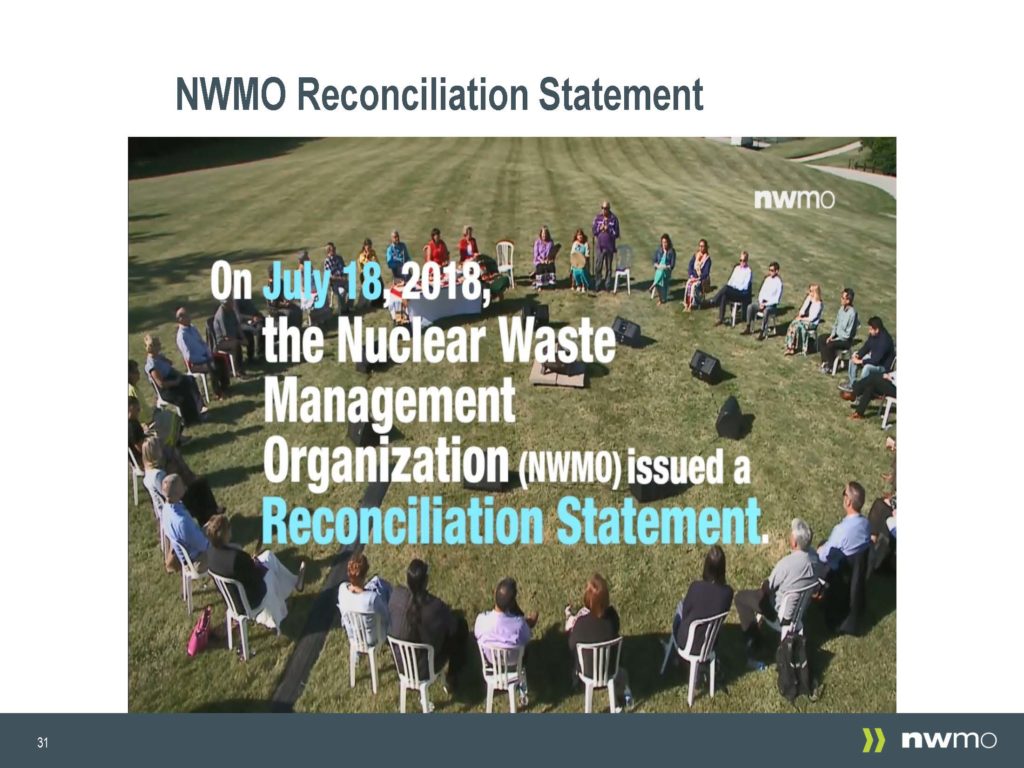
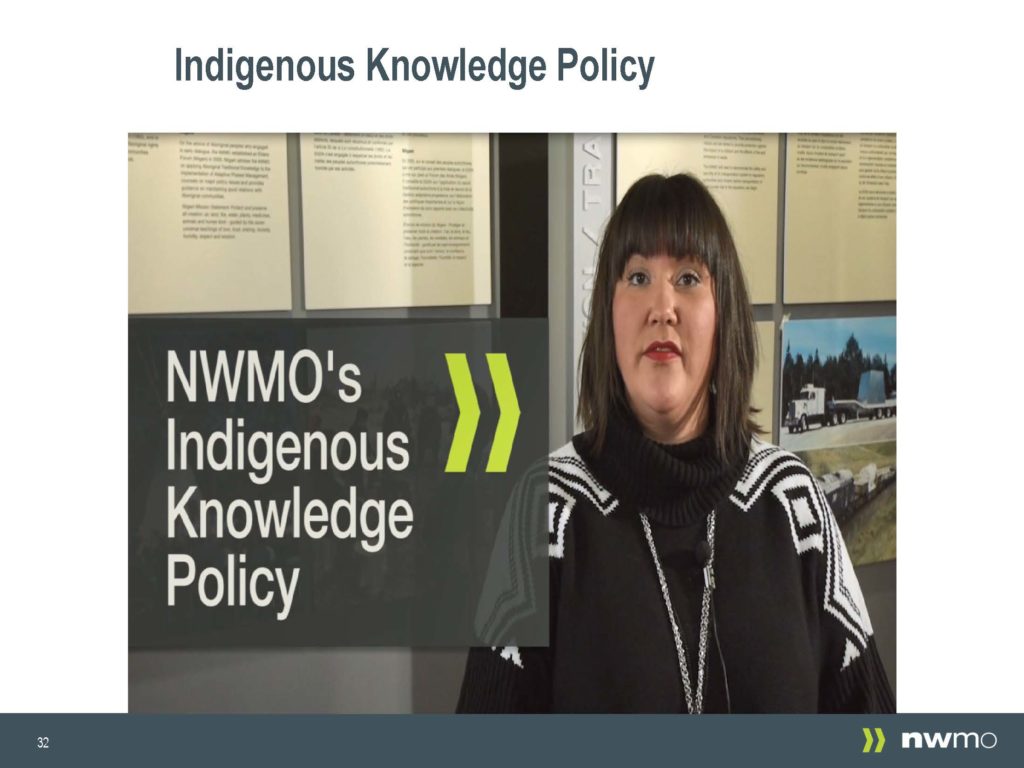
IN Closing, It was great to see old Friends like, Greg and to make new ones, like Brittney. So much has gone on in the last few years, but good friends make it better no matter the cause or times.
NWMO Meeting in Kincardine On Oct. 16, 2021
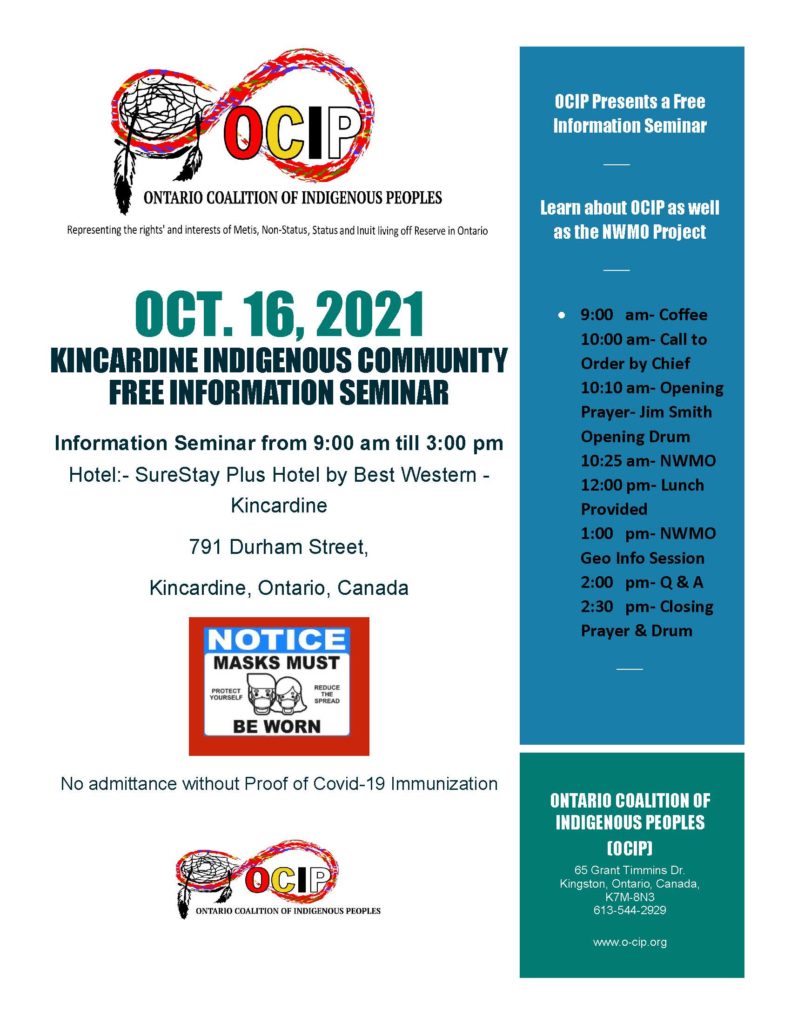
Opening Welcome by Chief Mona Denomme
Drumming by Regional Governor 6 T.J. St.Pierre and Kenneth St.Pierre
Prayers by Elder Jim Smith
Due to Low Attendance from Covid-19, OCIP held meetings instead of NWMO Info Session.
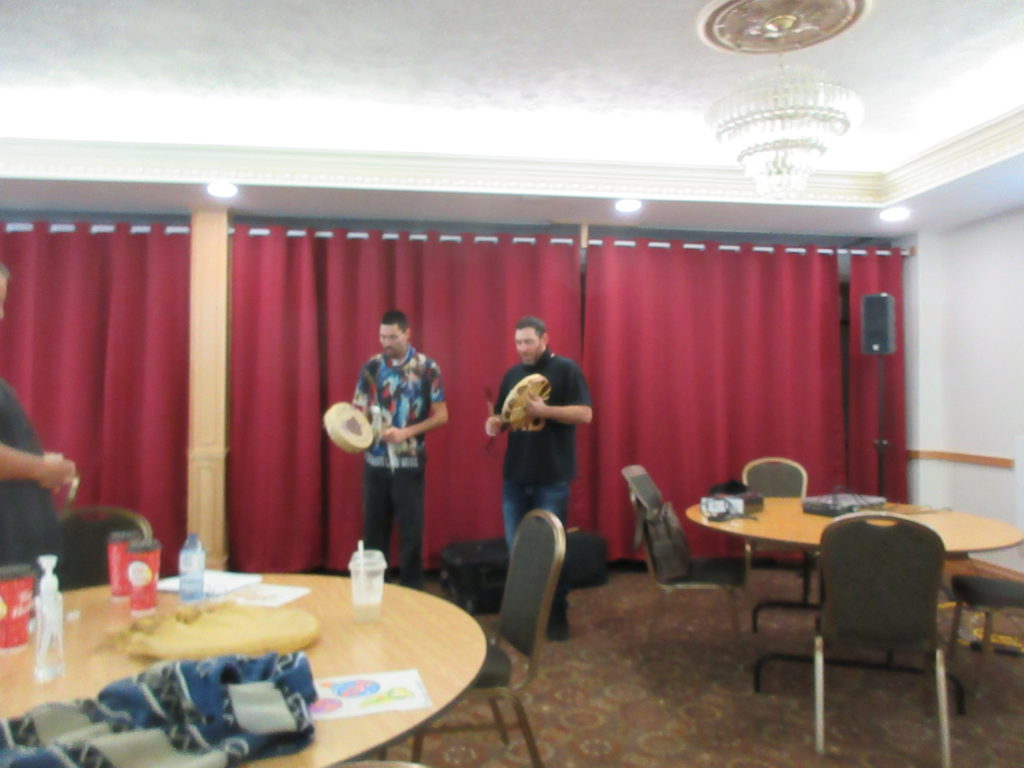
NWMO Meeting in London on Oct. 2, 2021

Opening Welcome by Chief Mona Denomme
Drumming by Regional Governor 6 Kenneth St.Pierre and T.J. St.Pierre
Prayers by Elder Jim Smith
Today at the OCIP NWMO Info. Session, we met a new Prestigious friend of Erik Kremer. He is gifted with Ph.D, P. Eng. and is Section Manager, Siting Safety Assessment, Safety & Technical Research. Today he presented an Interesting and enlightening Presentation entitled “Long-Term Safety of a Deep Geological Repository for Used Nuclear Fuel”. This New presentation was arranged by our Old Friend, Greg Plain. We all were overjoyed that we could again meet in person.
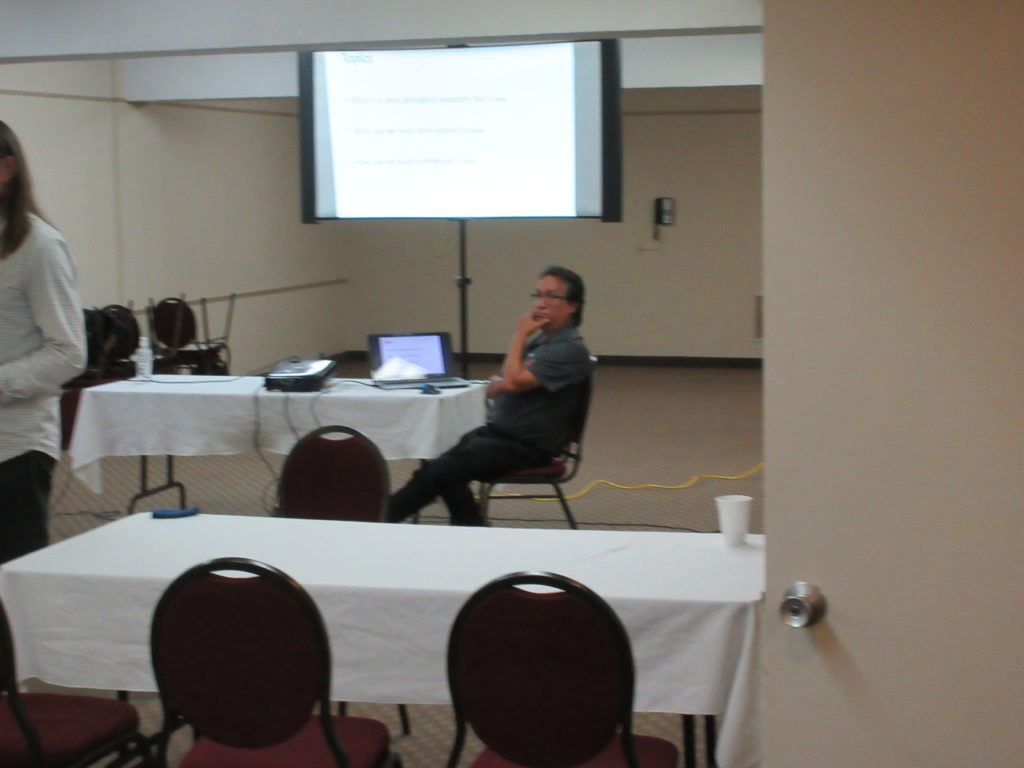
Senior Engagement Advisor Indigenous Engagement
519-381-7436
Presentation:
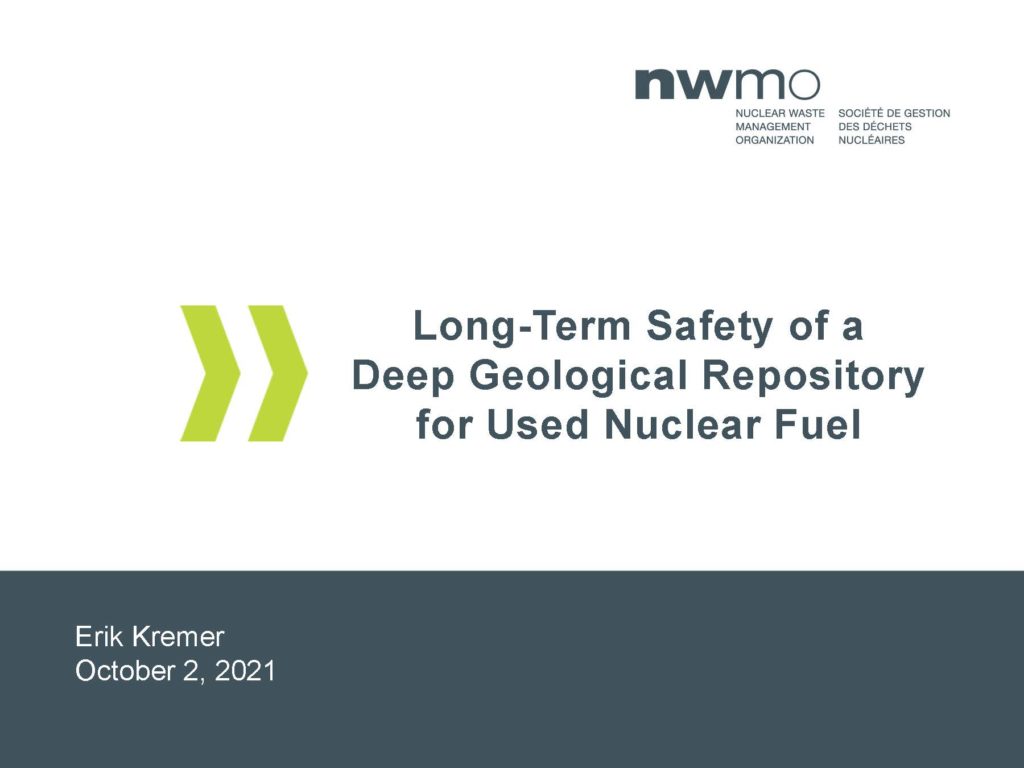
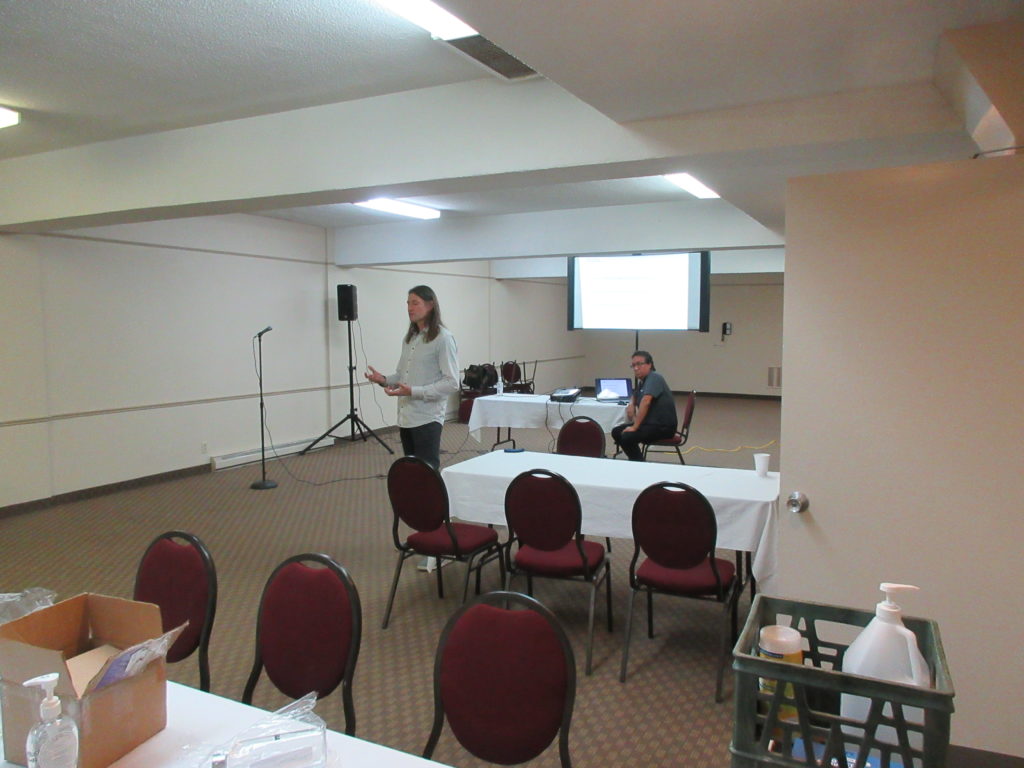
In this Presentation we learned:
- What is a deep geological repository for?
- What can we learn from nature?
- How can we build confidence?
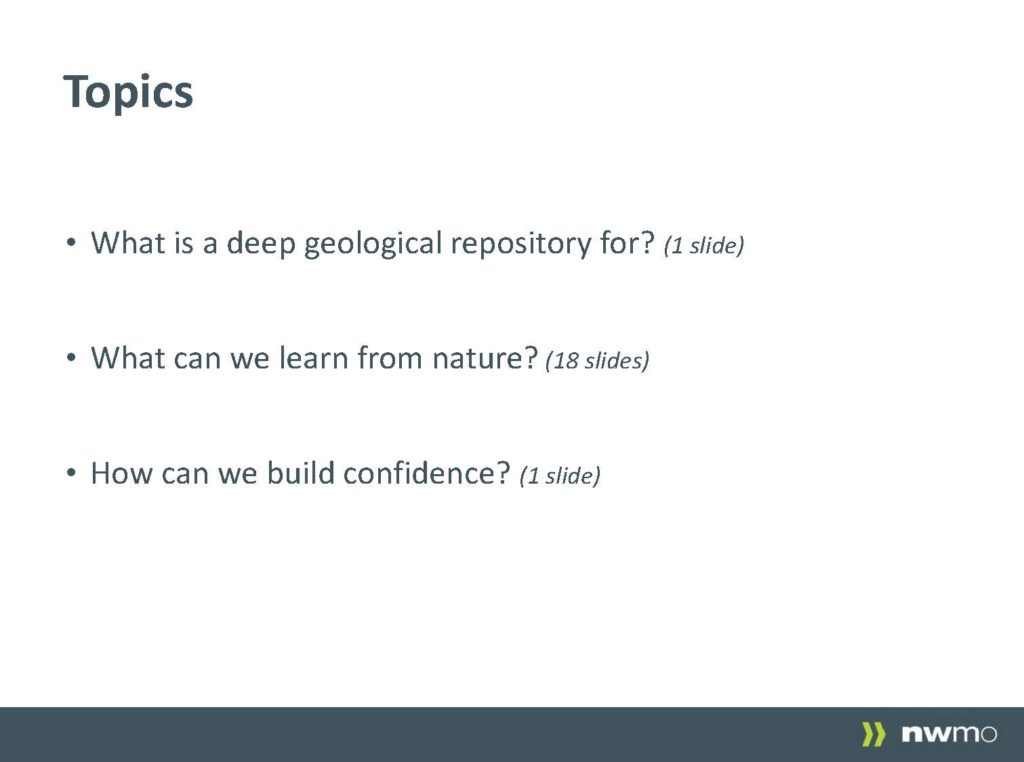
What is a deep geological repository for?
This Legend shows What a Deep Geological Repository looks like. It is noted that “Surface facilities will require a land parcel of about 1 km by 1 km (100 ha) in size, although some additional space may be required to satisfy regulatory requirements. The underground footprint of the repository is about 1.5 km by 2.5 km (375 ha) at a typical depth of about 500 m”. The tunnels will be cut from the existing Rock and therefor needs to be of the type that has little or no water flow. Therefore cracks and the like are not a desired trait. So each tunnel and chamber is screened for the presence of water, cracks, and natural shifts in the surrounding Rock.
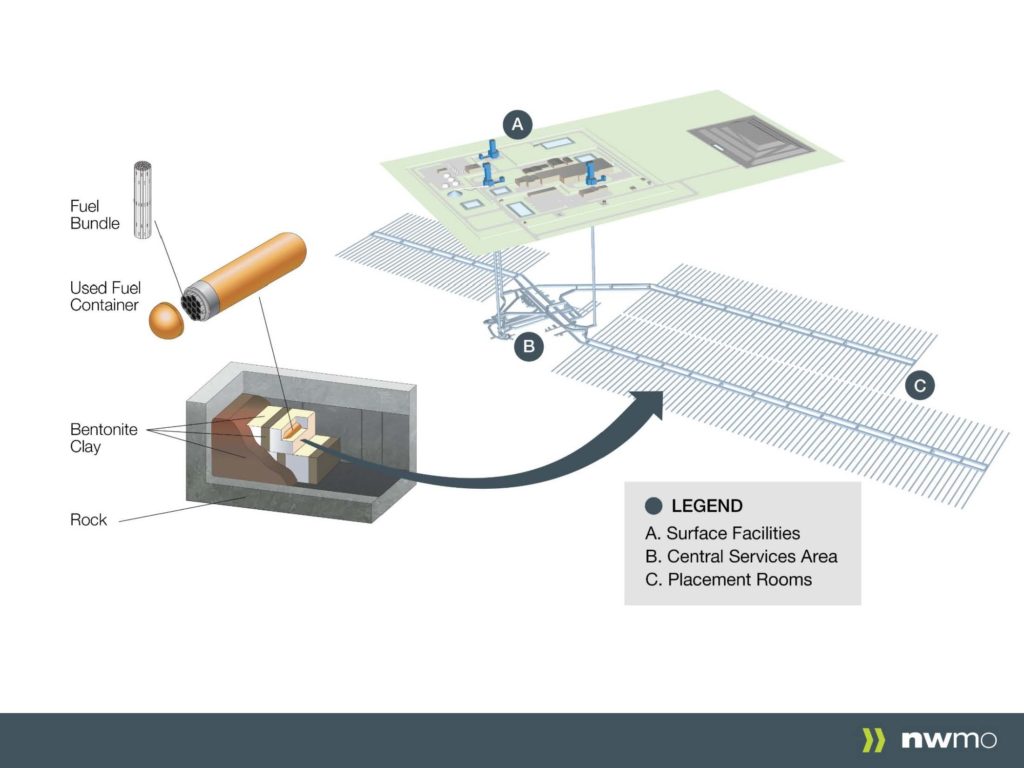
So the tunnels and chambers are cut directly from the rock with all sorts of monitoring Equipment that will be in use for a minimum of 1 Million years, as this is the expected lifetime of the nuclear material. However with this monitoring the NWMO will be able to gauge the decay process so they are always prepared to act and take whatever steps are needed. This could include staying posted for extended periods of time.
Another Very Interesting point was that the final “test” so to speak was Glaciers. As these are seen as the most Impactful event imaginable. It was presented that the Weight and thereby pressure pushes water downwards and this could force it into cracks in the surrounding rock. This is why the first defense is the surrounding rocks integrity and ability to hold its form under these great pressures. This is why every facet of the Deep Geological Repository is looked at and nothing is left to chance. But before we believe this is just alarmism we need to remember that the Cordilleran and the Laurentide Ice Sheets covered all of Canada. So using Glaciers is indeed very logical.
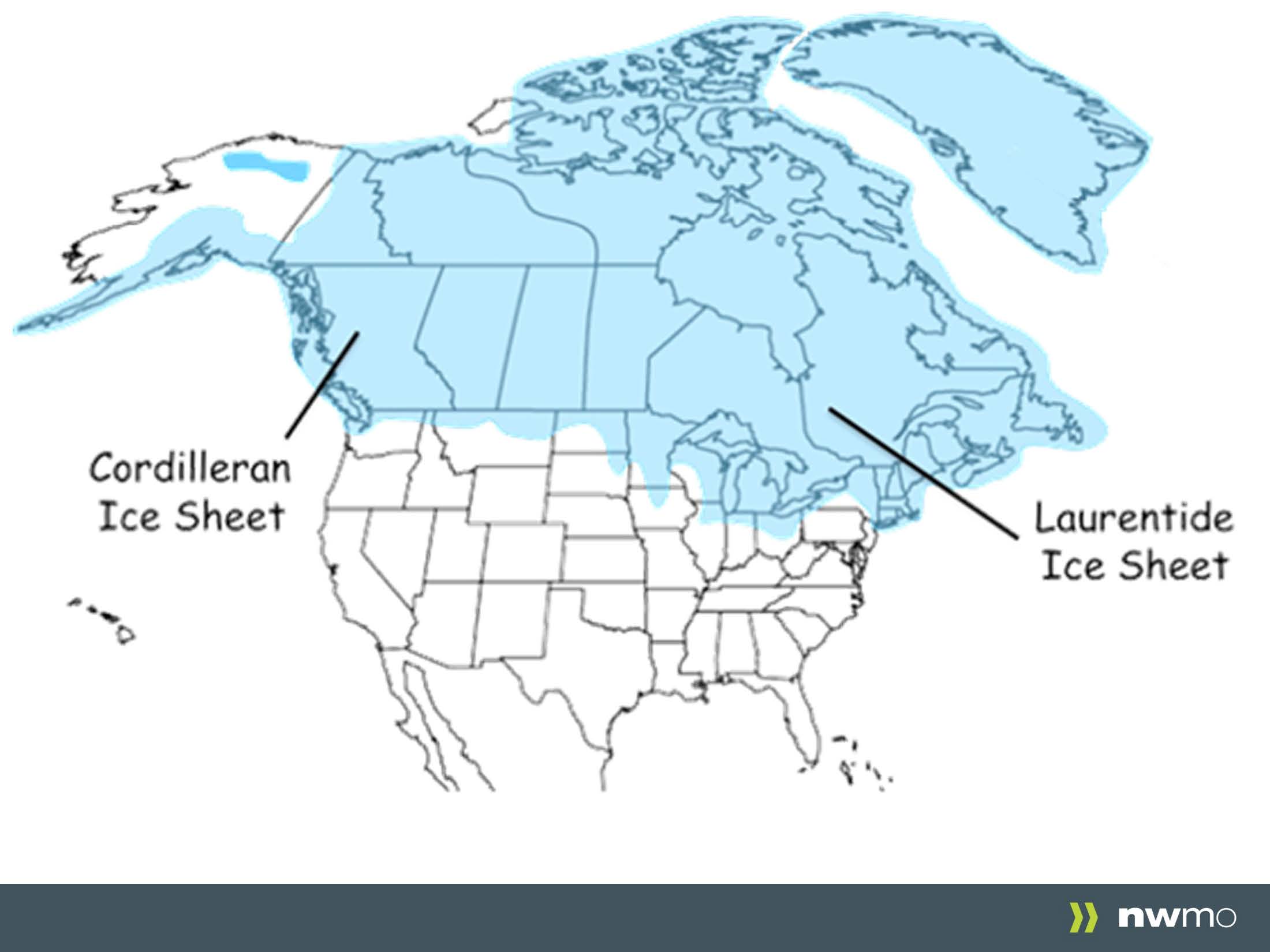
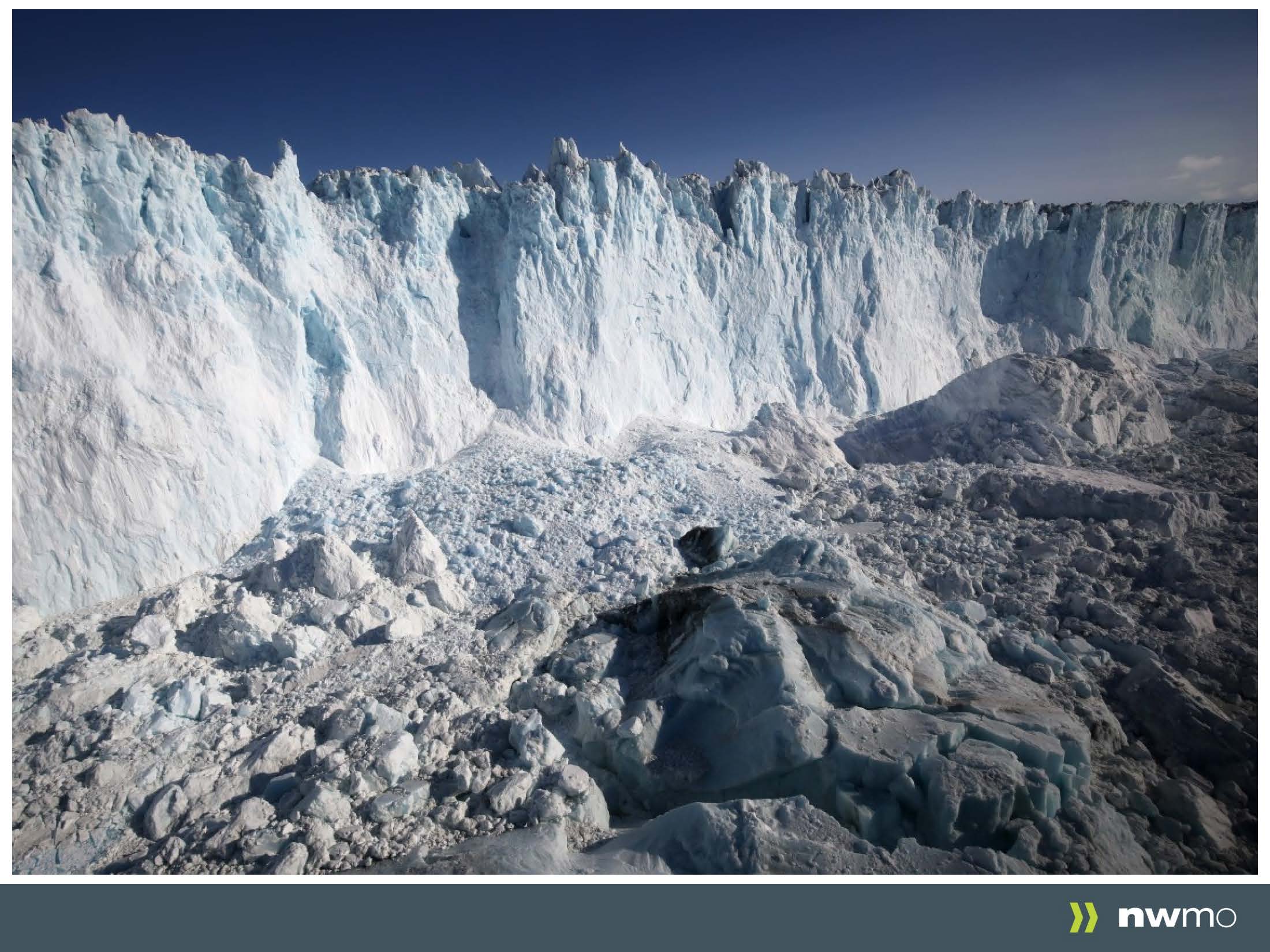
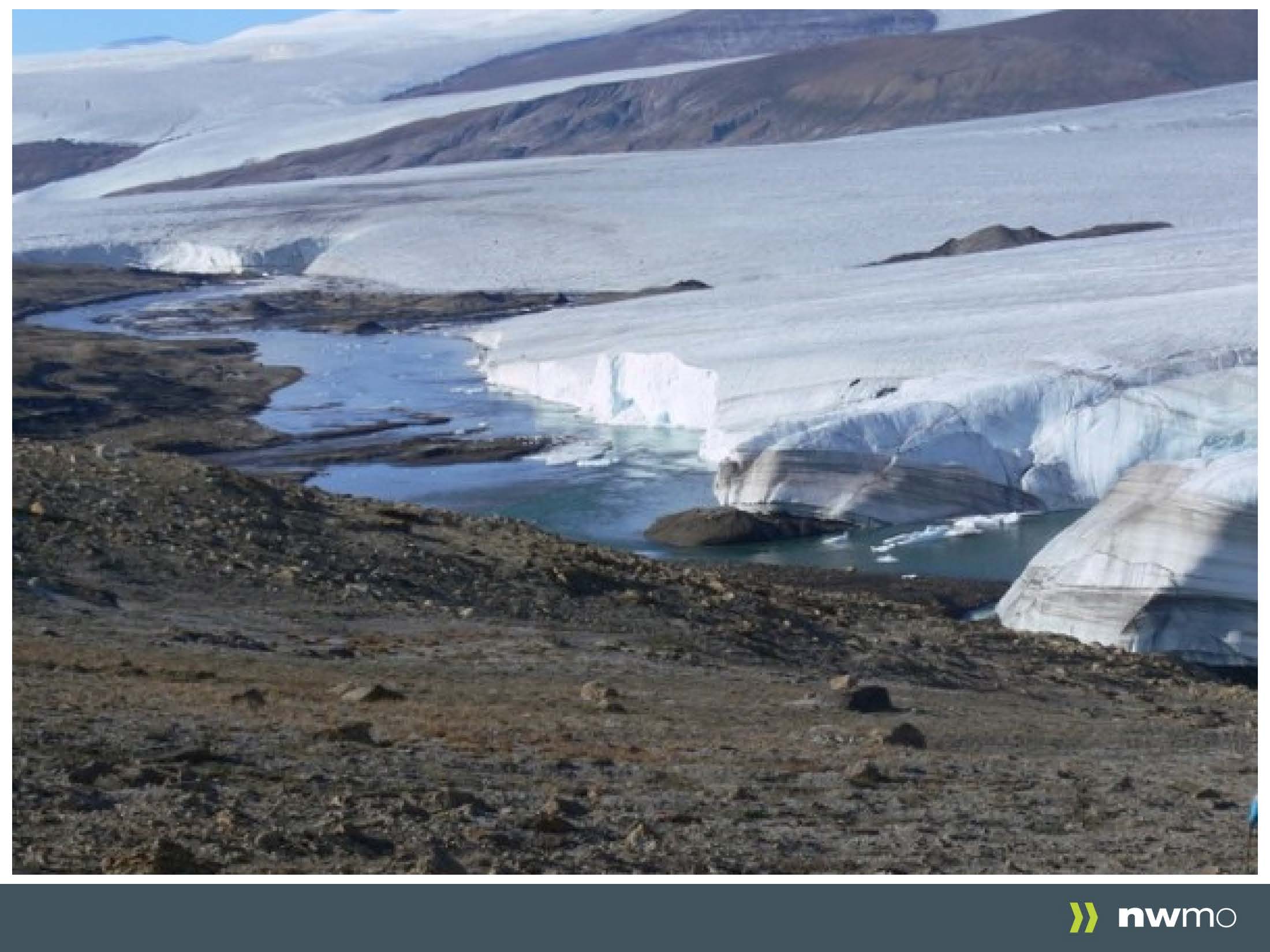
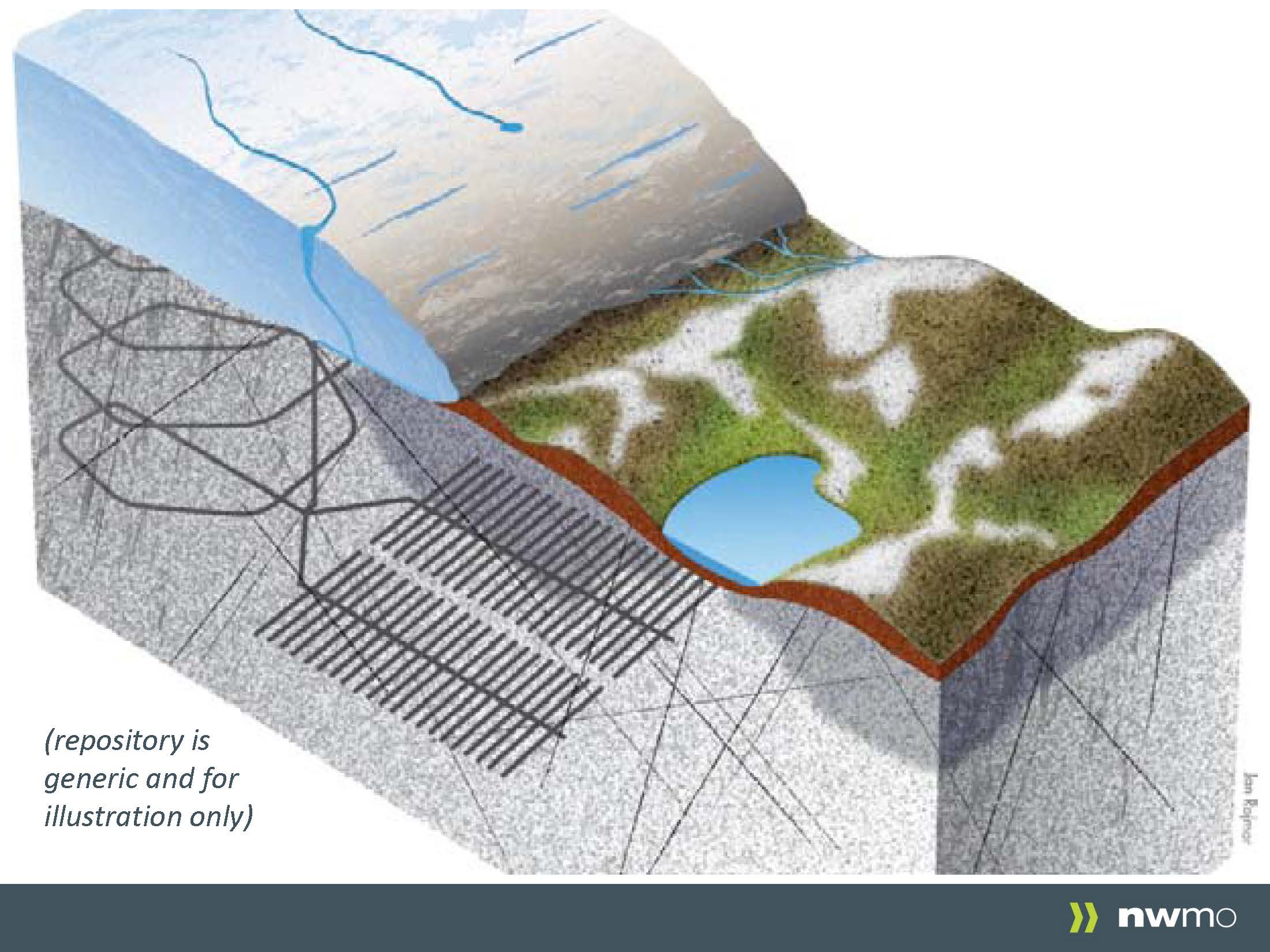
What can we learn from nature?
Nature is always the best teacher and provider, so the NWMO use as often as possible the lessons it has to teach. One Important Lesson is how Copper can stand up to whatever is thrown at it. As seen below here are sheets of copper that have withstood the tests of time. They are aged, but still hold their shapes. It is has not lost its durability, all it needs is a suitable shape to hold this form. Some might think, “Why not use Titanium?” It is not used because it is not natural and has not stood the test of Time. Who knows if it will endure after a hundred, a thousand, or a million years, with Copper we can see the answer.
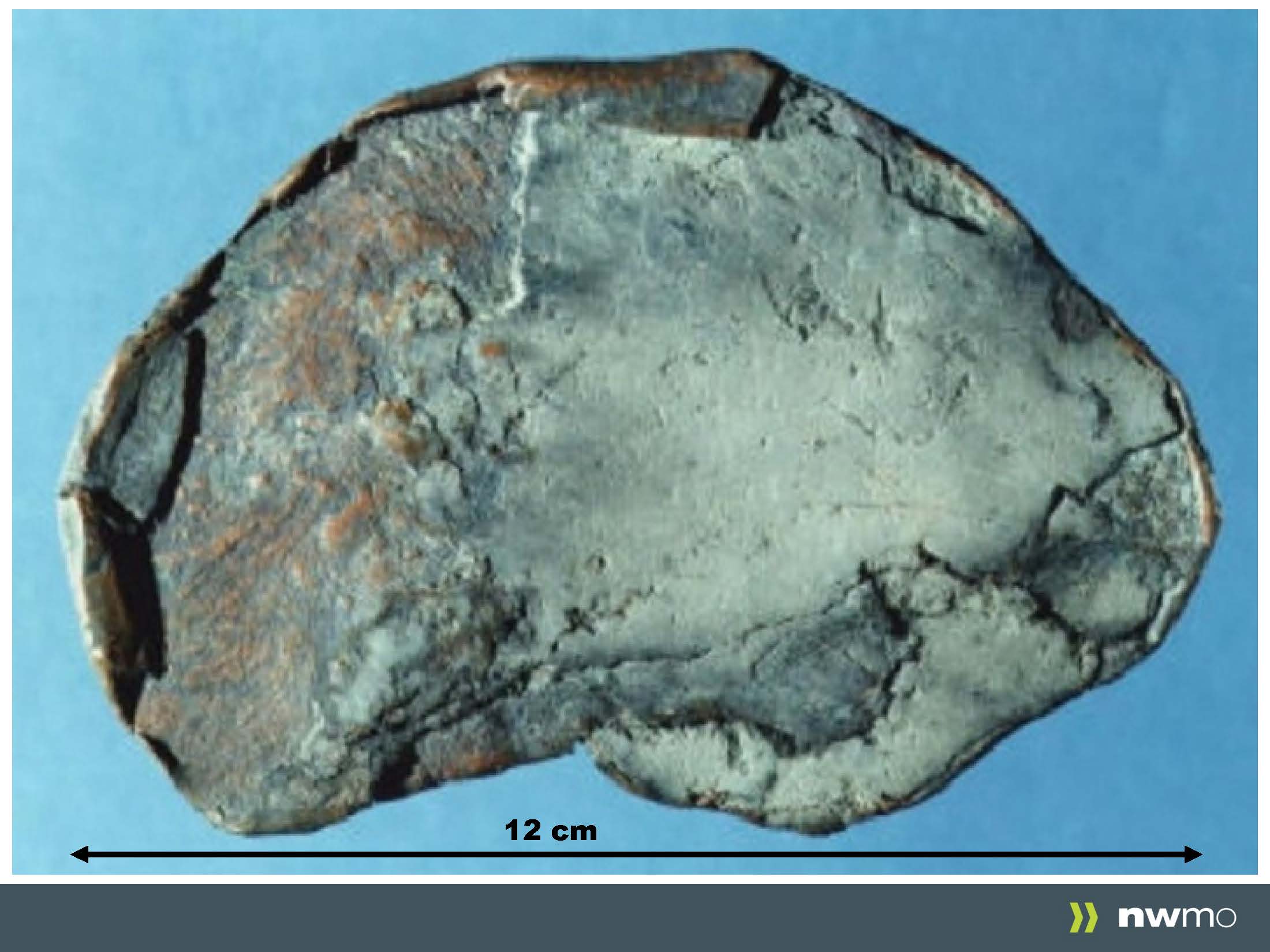
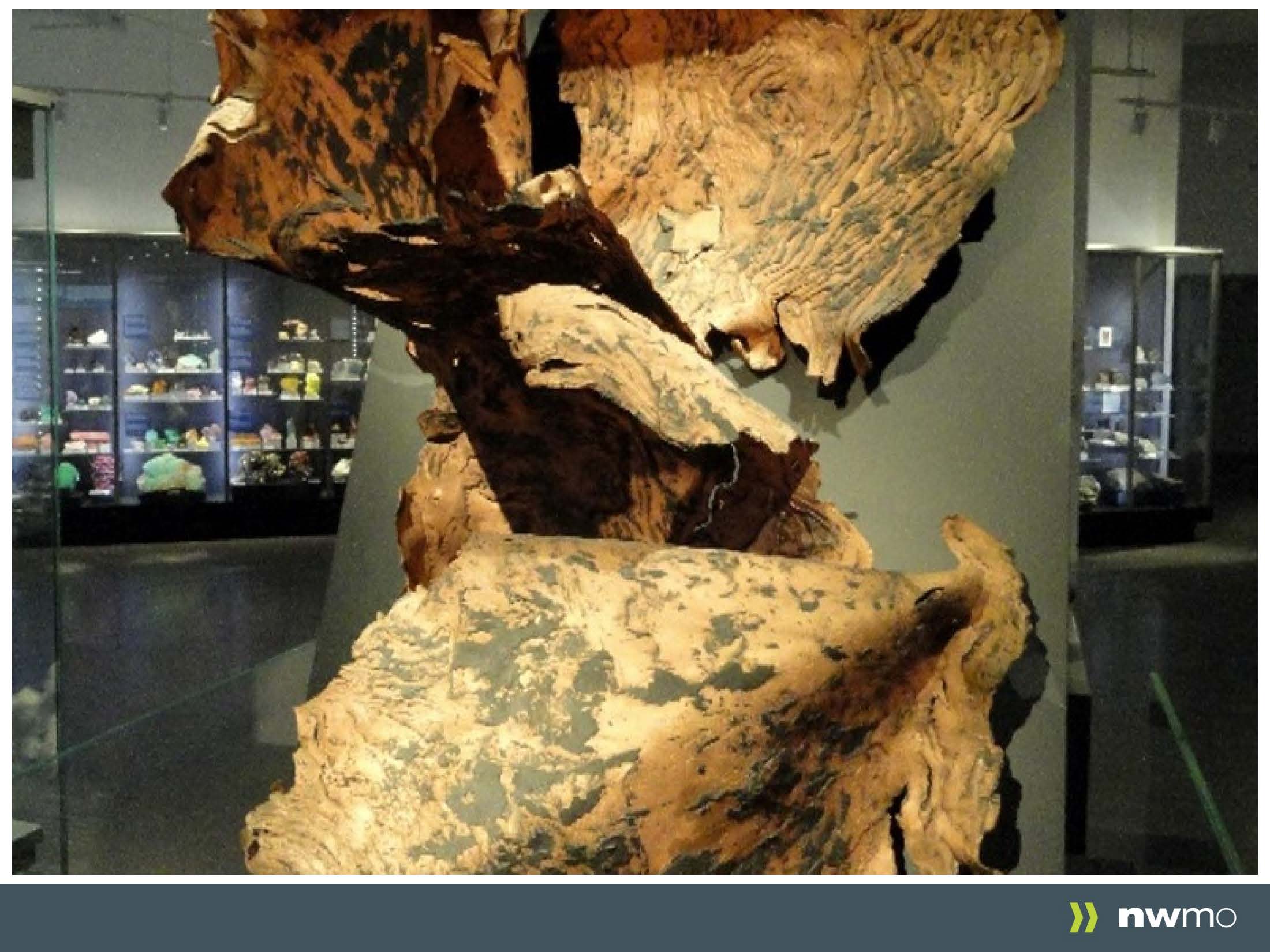
Next, Nature teaches the Lesson of Clay. We see below this Bug that was trapped in clay and is still able to be studied and remains intact. It was noted that there was a grove of trees that was buried in clay. In fact the villagers cut some and burnt it with no problems. This is why Bentonite Clay is used. It is shaped around the Copper shell of Fuel Container to form yet another Water impermeable layer and then is injected into the cut chambers. It both pushes any water out and expands to keep water away from the used nuclear fuel.
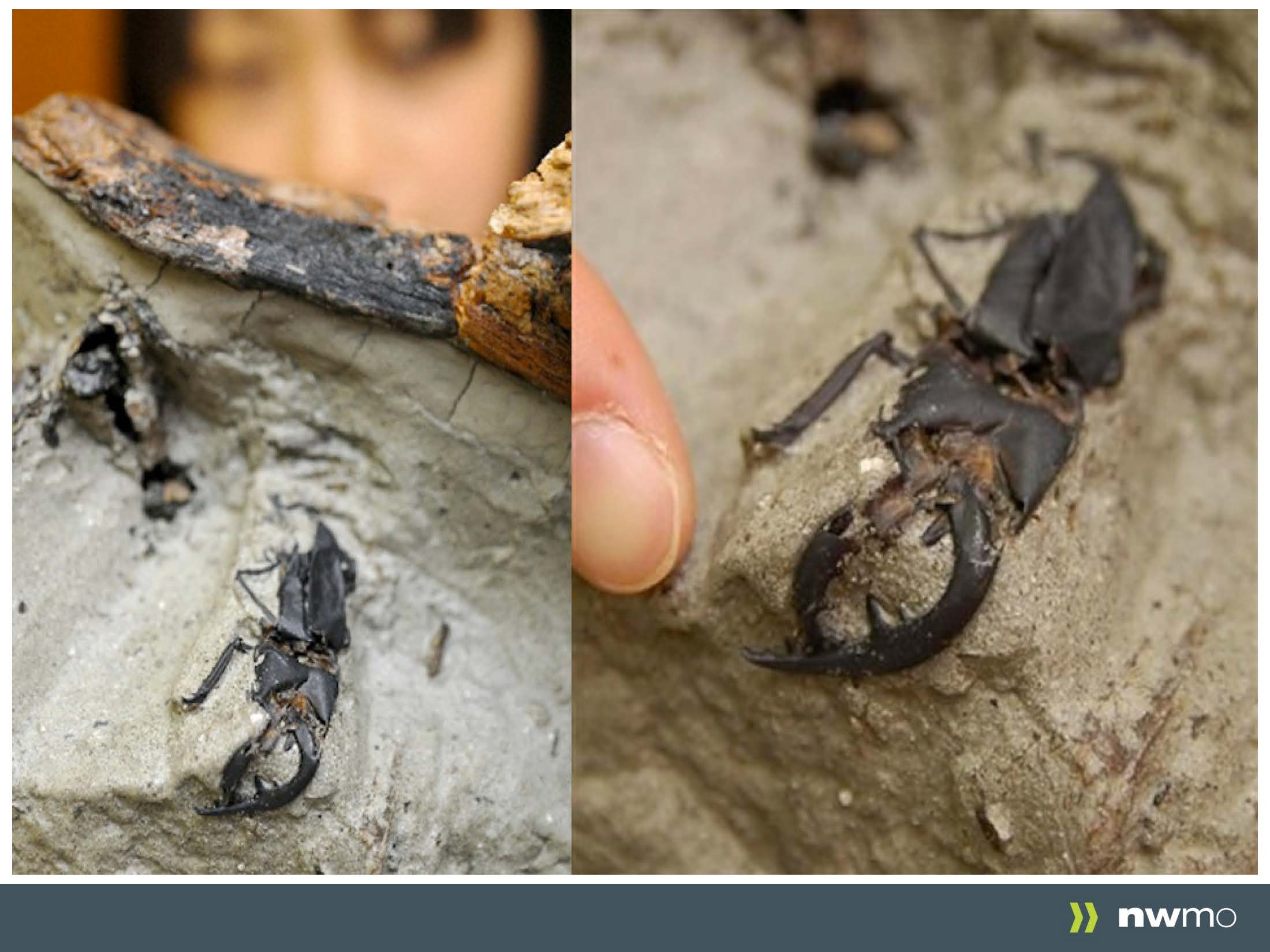
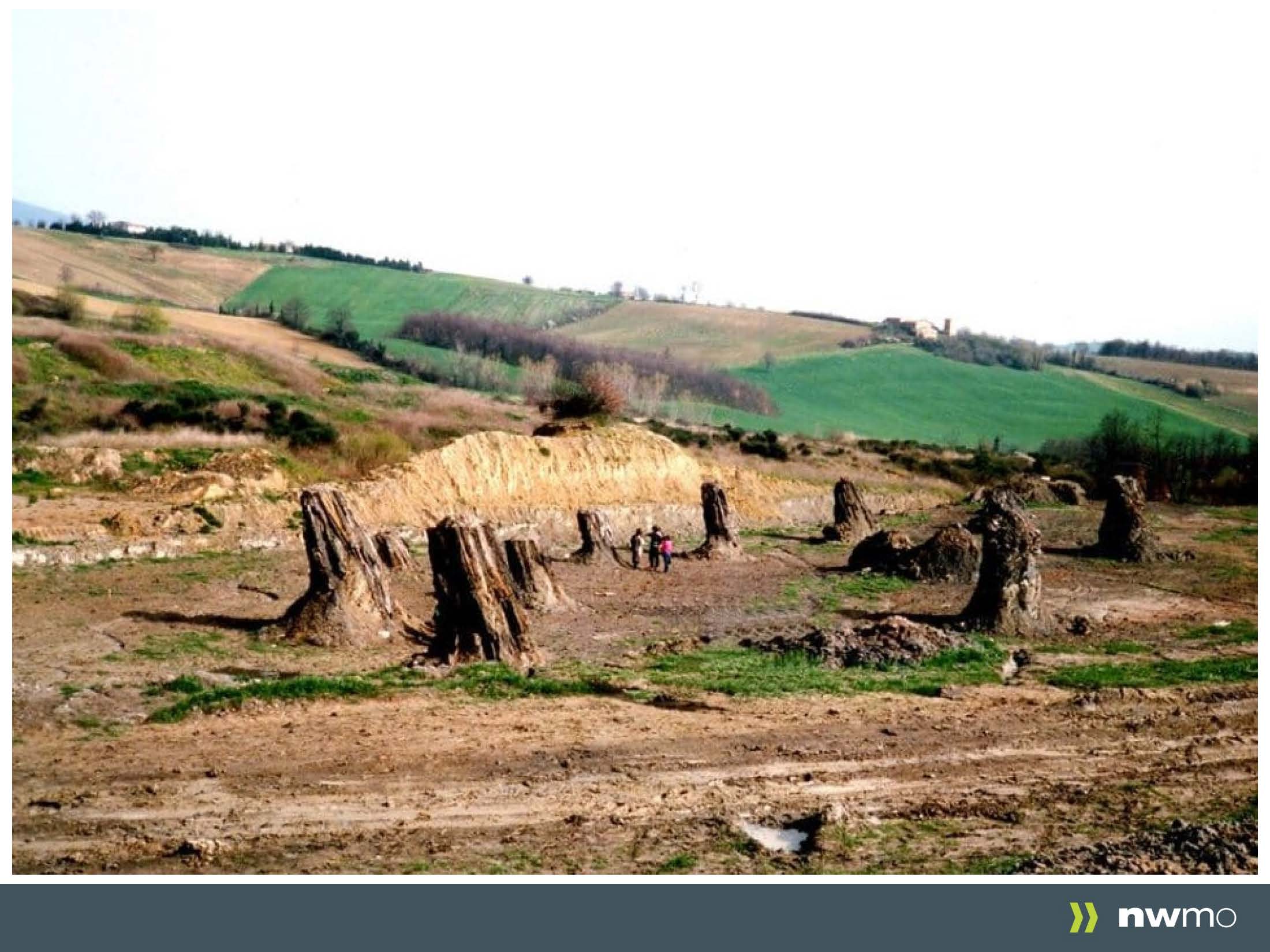
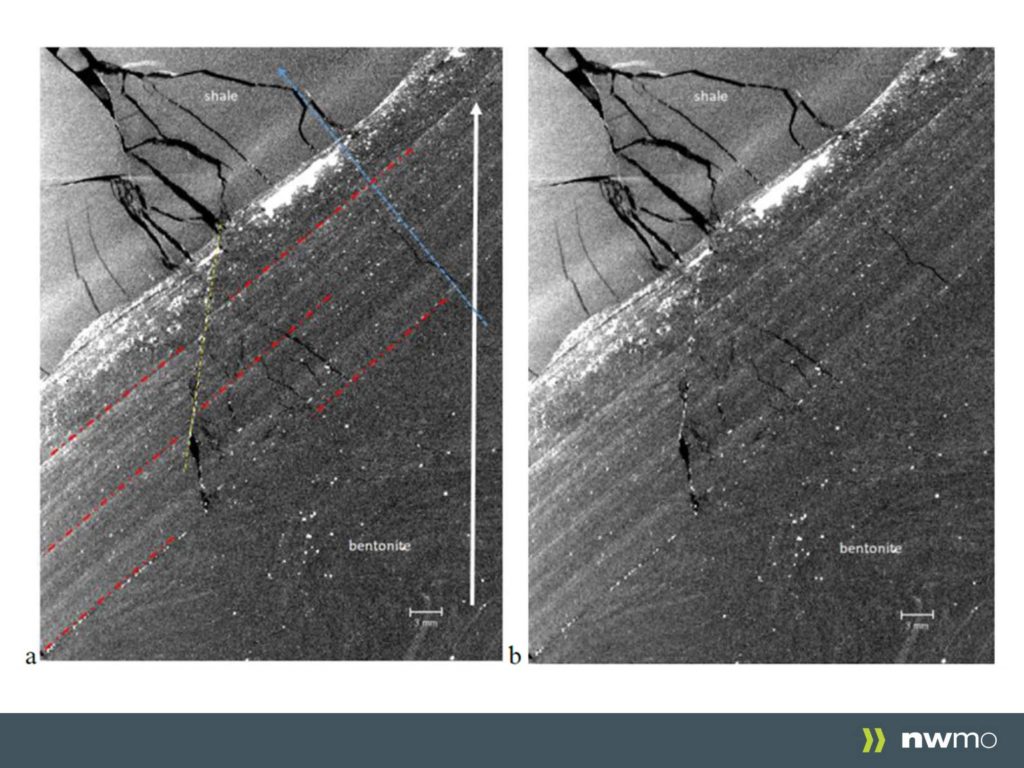
How can we build confidence?
As we were shown just a few of the lessons of nature, we were reminded that all the Used Nuclear Materials were incorporated in ceramics and by their properties were able to resist water. Just to get this material out of the ceramics would take a very long process and because of this it would be beyond difficult for water alone to dissolve the ceramics. So then it’s coming into contact with the Used Nuclear Materials is even more difficult. Then add to this the natural barriers, Bentonite Clay, Copper shell, etc. the ability of water to come into contact with the Used Nuclear Materials is nearly impossible.
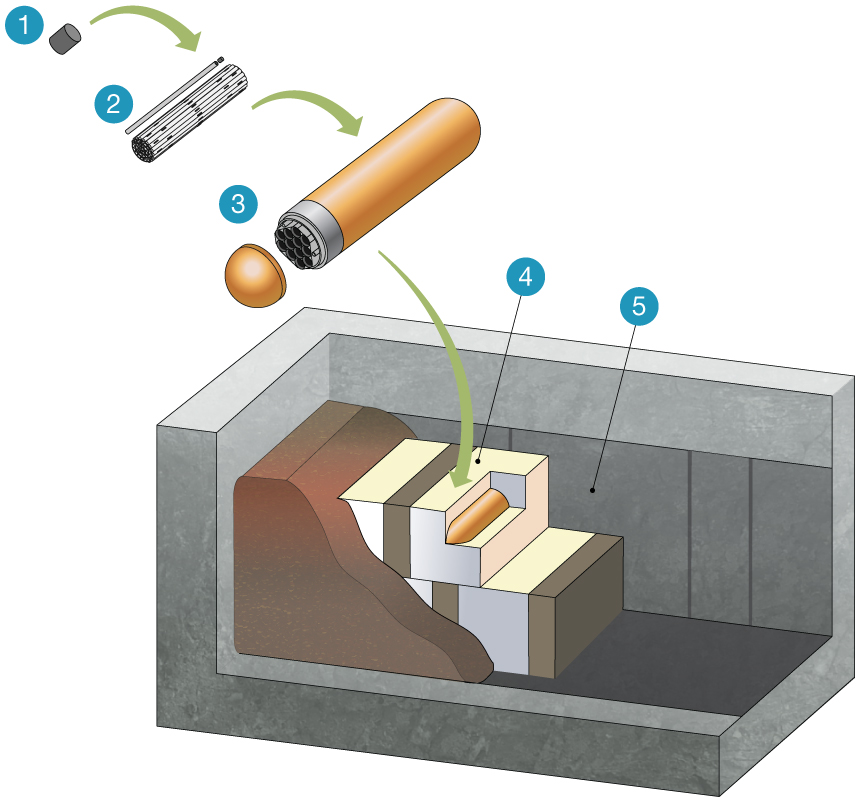
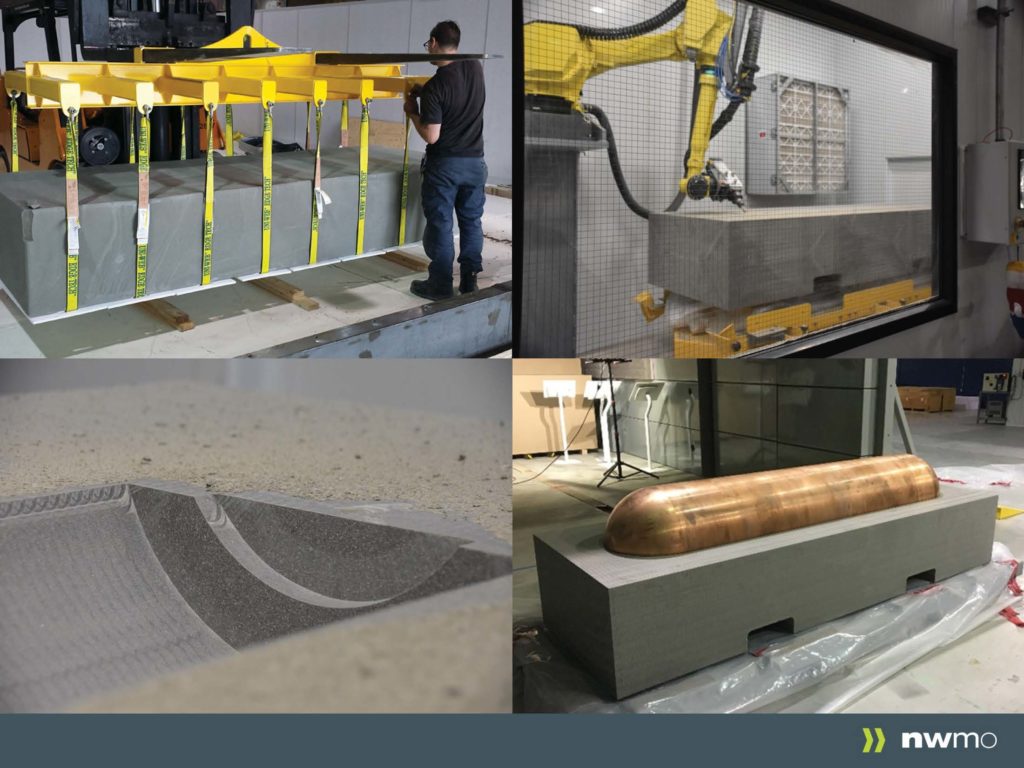
Also before we think that the NWMO is but sitting around, they are involved with many other Worldwide Organizations in projects, studies, etc. to learn more. One such project is the “International Bentonite Longevity Project”. Also Erik himself spoke on being in mines, geological sites, etc. all over the globe studying, gathering information, etc. He showed but a brief amount of photos on these types of discoveries.
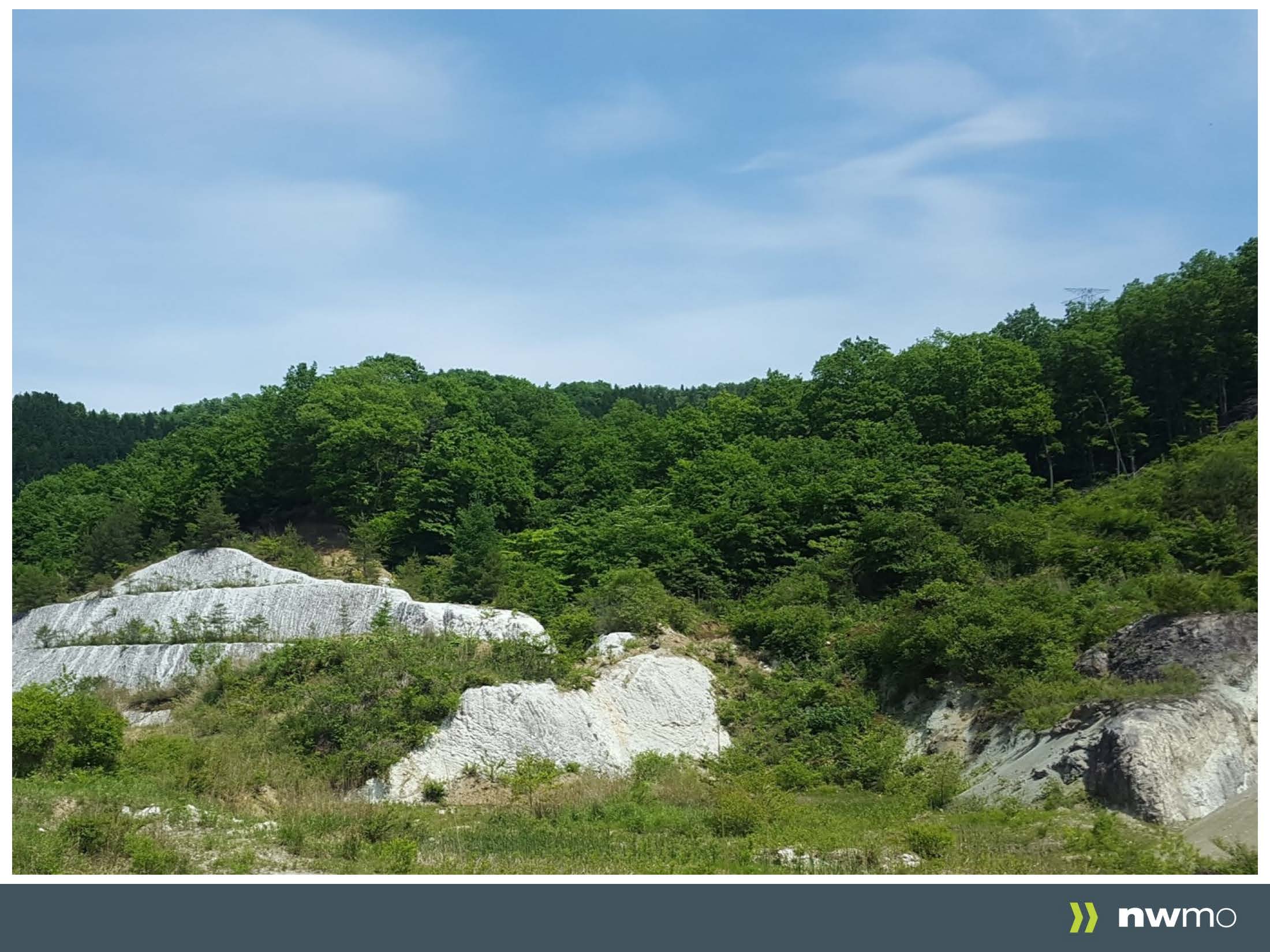

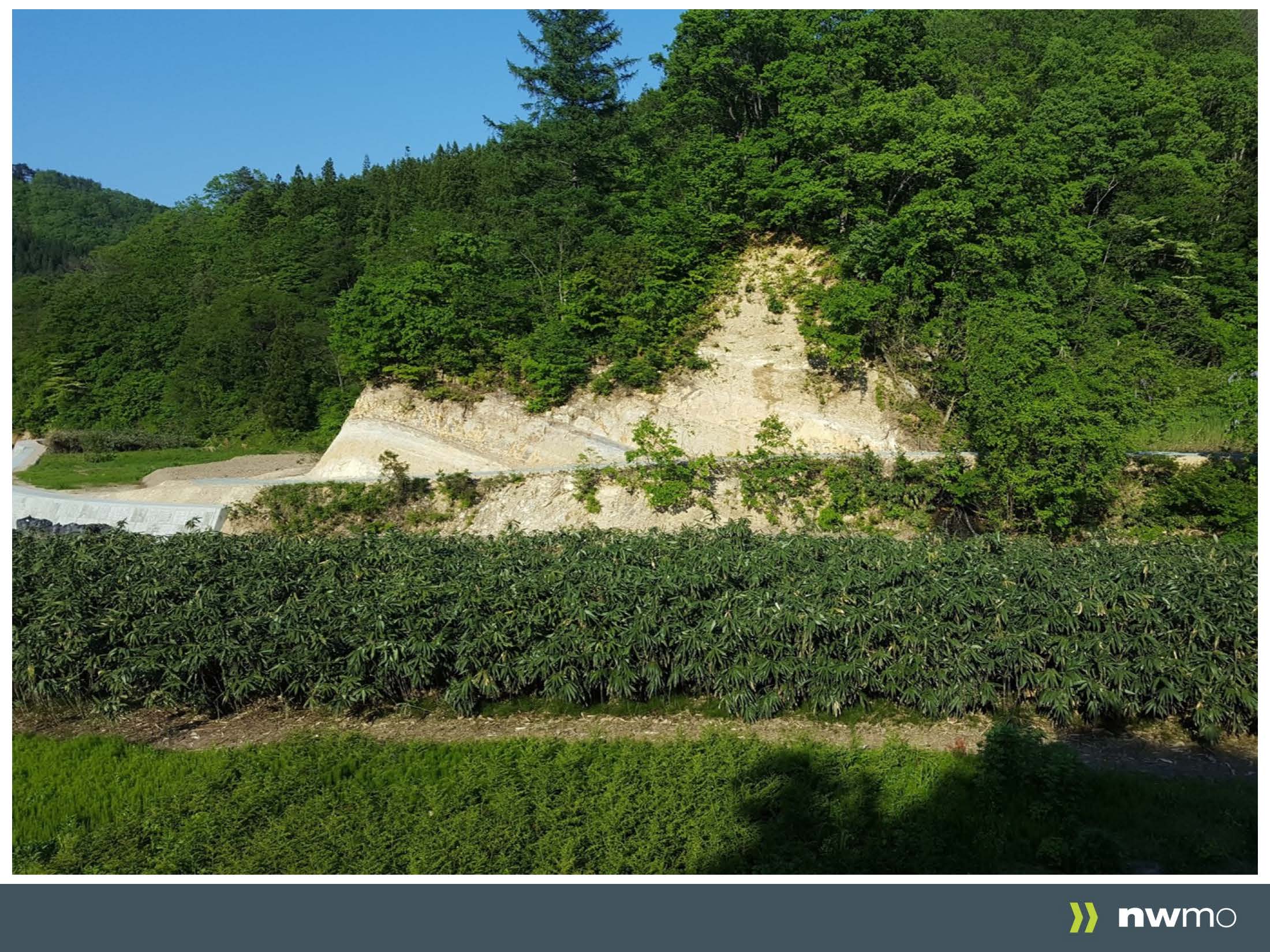
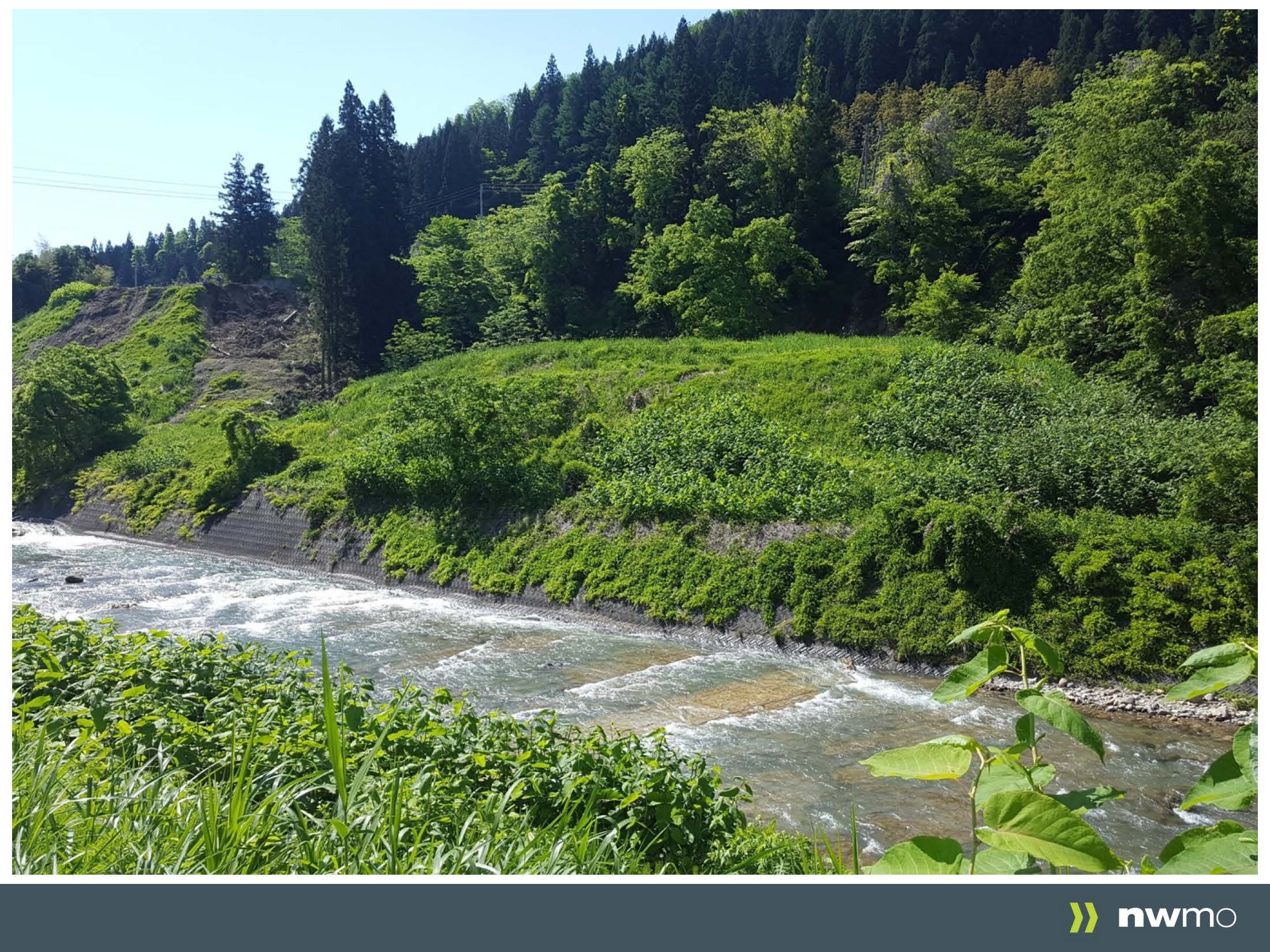
All this and much more is to build up both research and confidence in the whole process of Used Nuclear Fuel Storage. After all if the Scientists, Engineers, Administration, Staff, etc. of the NWMO don’t feel comfortable with any facet how can they expect the public to feel safe or understand? So unlike many organizations they provide hard research to themselves or other great leaders in the field, then when this is proven to themselves, then they bring it to the public. It was once said “That if you don’t trust the process, why would you expect others too?” The NWMO believes this and entrusts all our safety for millions of years to things Known, not wished for.

IN Closing, It was great to see old Friends like, Greg and to make new ones, like Erik. But greater still is to know that the NWMO has not been sitting around during These Covid-19 times, they are out there building, growing, creating, etc. the wisdom that will protect us all.
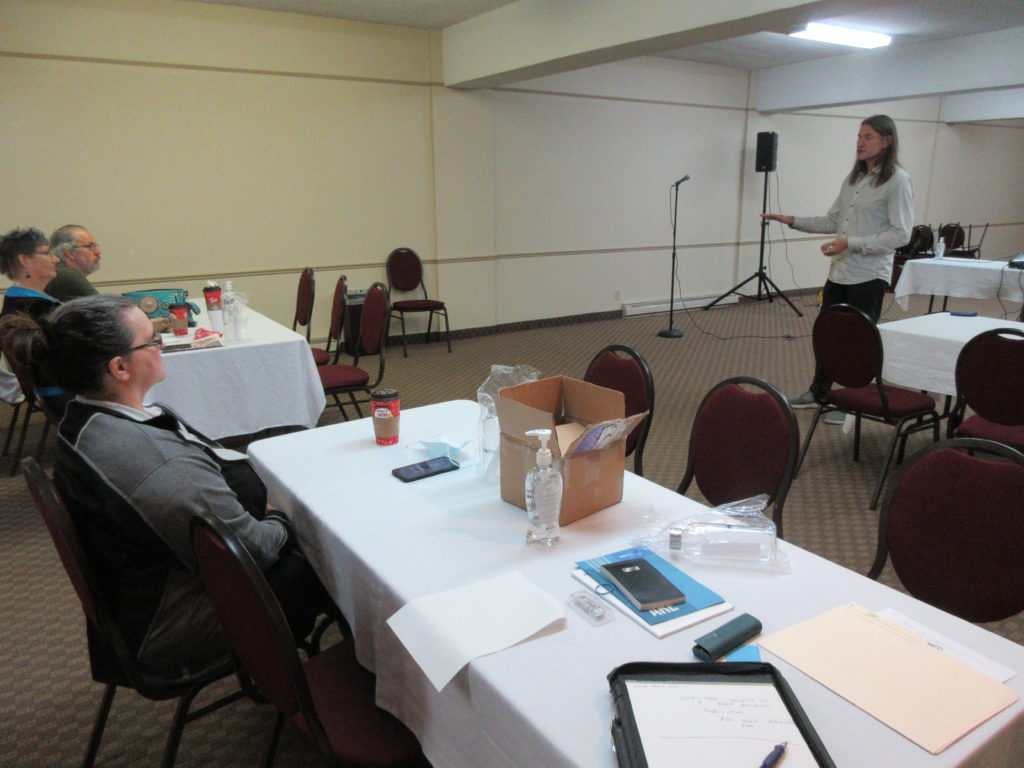
NWMO Meeting in Renfrew On Aug. 21, 2021
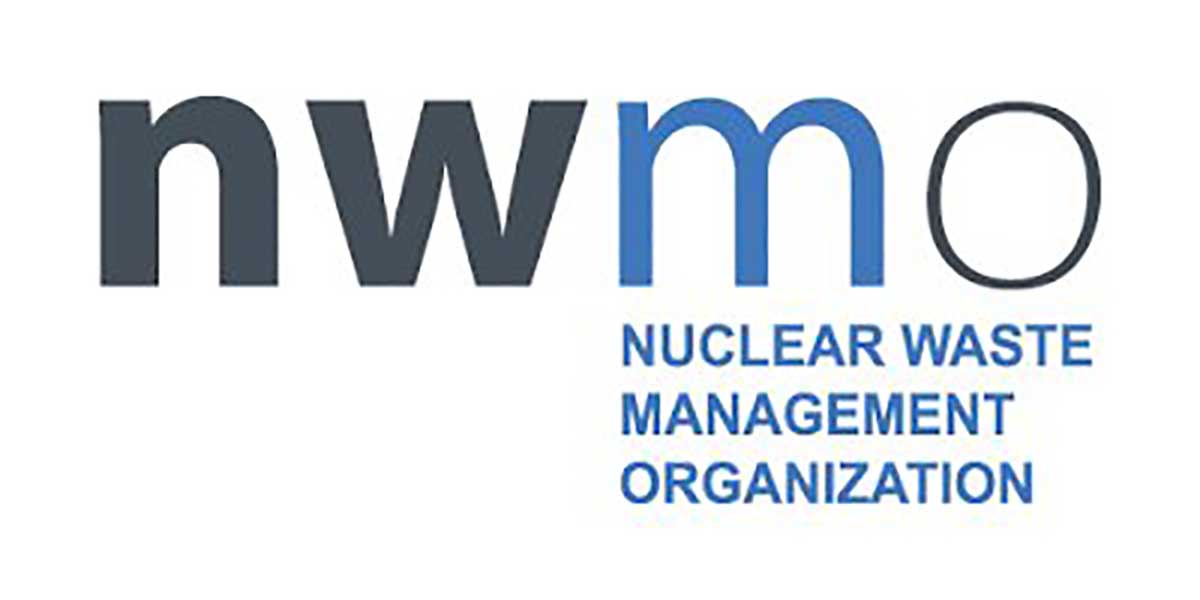


Opening Welcome by Chief Mona Denomme
Drumming by Regional Governor 6 Leslie St.Pierre and T.J. St.Pierre
Prayers by Elder Jim Smith
On Aug. 21st, 2021 OCIP and the NWMO held its first Info Session since the latest lockdown began. It was held in Renfrew, Ontario and it was a combination of a live meeting in Renfrew and Greg of the NWMO joining us by way of Zoom. Since attendance was down most of the Meeting was spent on updates of the NWMO and planning ideas for the future.
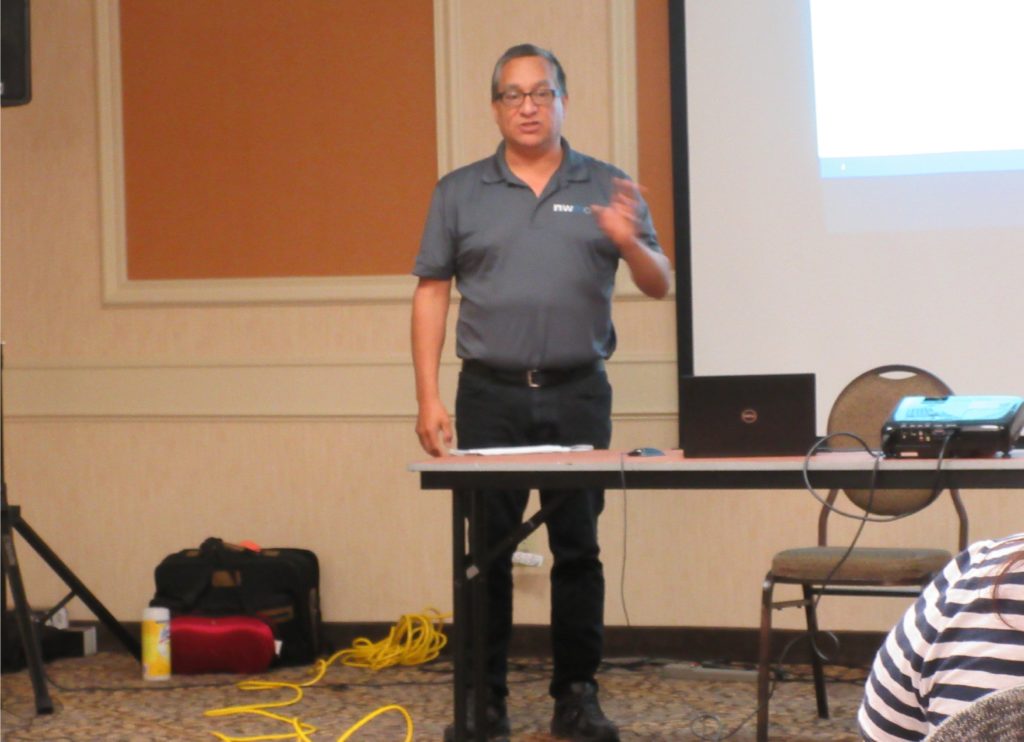
Senior Engagement Advisor Indigenous Engagement
519-381-7436
NWMO Updates
Bore hole drilling is now narrowed down to two areas in the Ignace area and in the South Bruce area. There has been much testing in both areas and great progress has been made. The Ignace area is slightly ahead as much more is known about the geography because of past Mining Projects in that area, however the South Bruce area is revealing its secrets at a great rate, it was noted that the drilling process reveals 500 levels a week and the NWMO Scientists, Geologists, Etc. Are well on target for all they need to do the site selection process. It was indeed very exciting to hear how much has been accomplished during these difficult Covid times.
Discussion of Future events.
There was discussion about a Bore Hole Tour, as well as a Dry Storage Facility Tour. The Wabigoon area should be excited as there could be a tour of the many happenings there. It was even mentioned that in the coming year the Trucking exhibit could be re-opened and OCIP could be invited to a viewing of this as well. Greg also outlined many new Presentations that were being unveiled this coming year. It must be noted that the Water Presentation was Very enlightening and showed how important it is to us all and how it effects circumstances 1000’s of KM’s away. Also that its hidden effects underground must not be forgotten. So needless to say it is looking like a very exciting year of further MWMO info Sessions.
NWMO Meeting in Barrie On Oct. 17, 2020
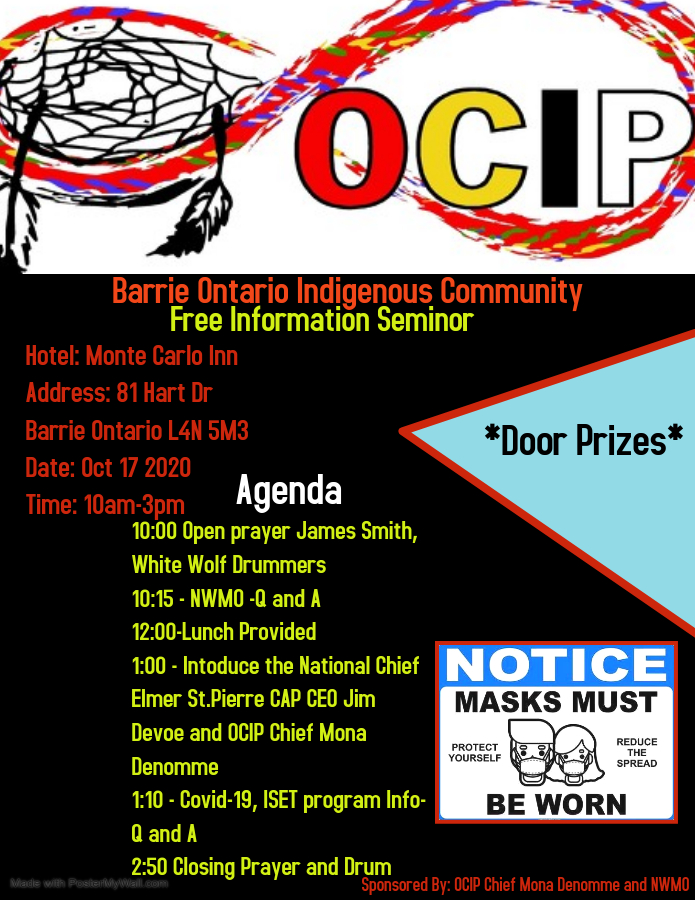

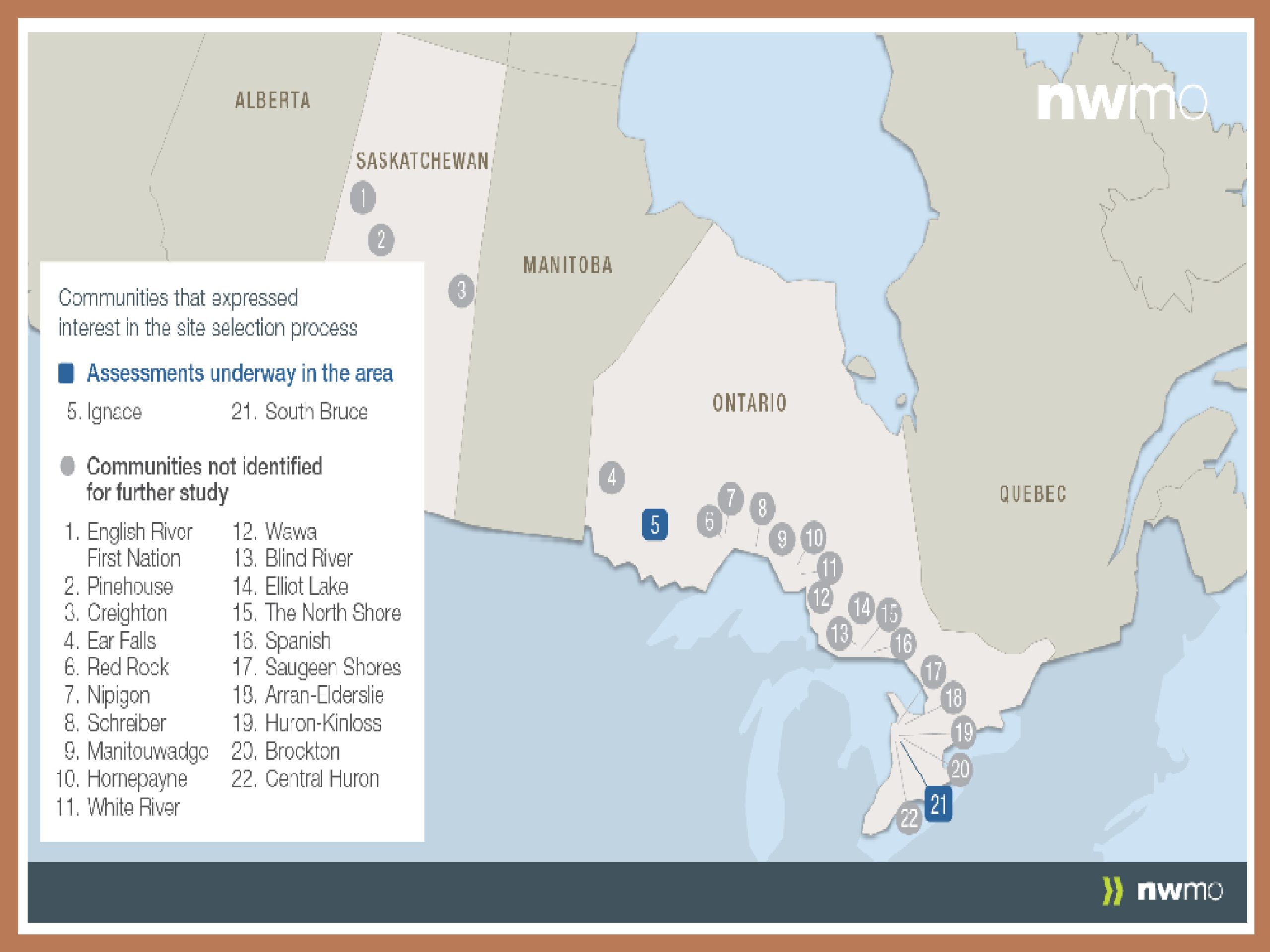
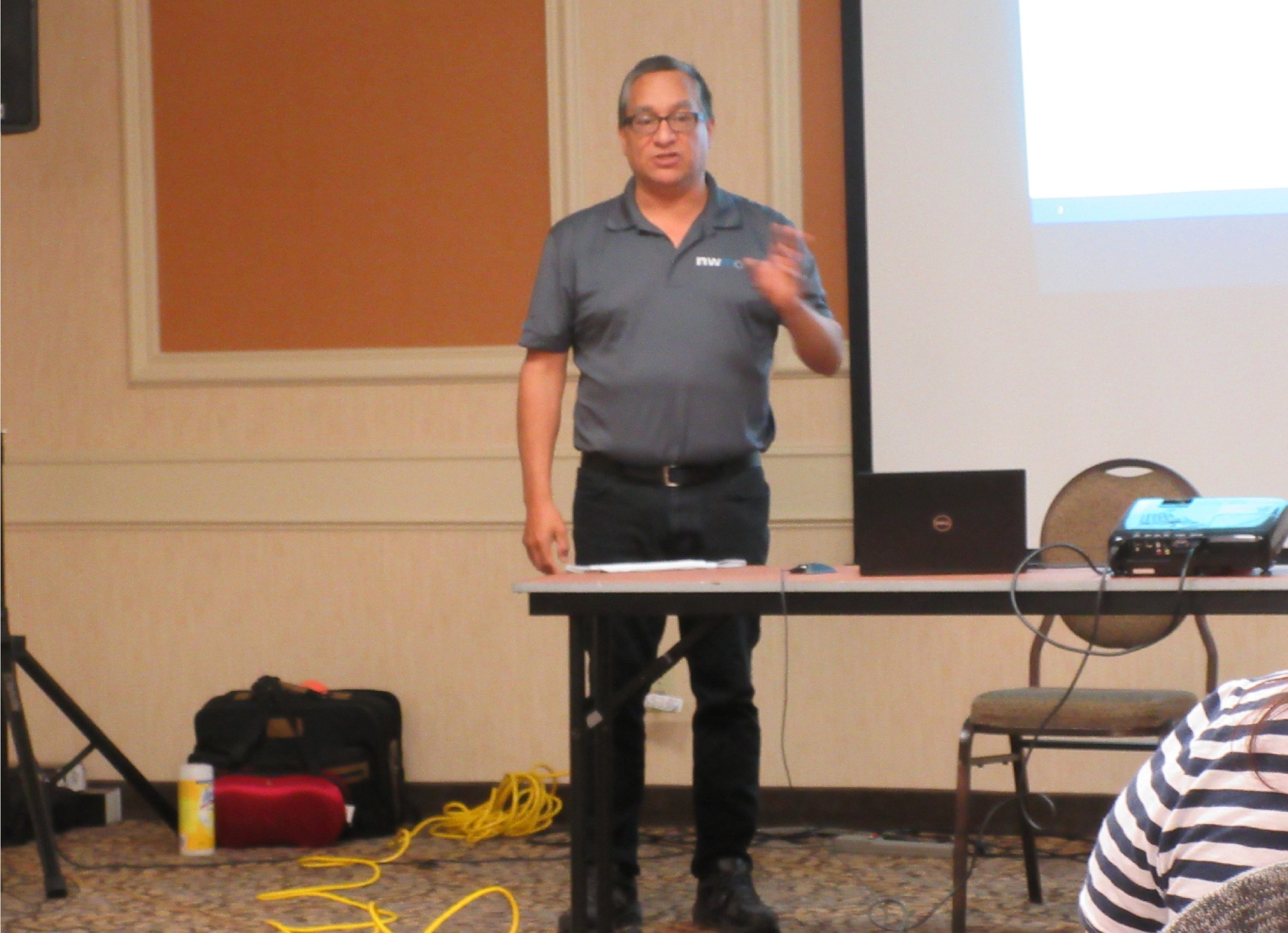
Opening Welcome by James R.A. Smith
Prayers Written by Elder Jim Smith, Presented by James R.A. Smith
Drumming by Regional Governor 6 Leslie St.Pierre and T.J. St.Pierre
Morning Session
Canada’s Plan for the Long Term Management of Used Nuclear Fuel
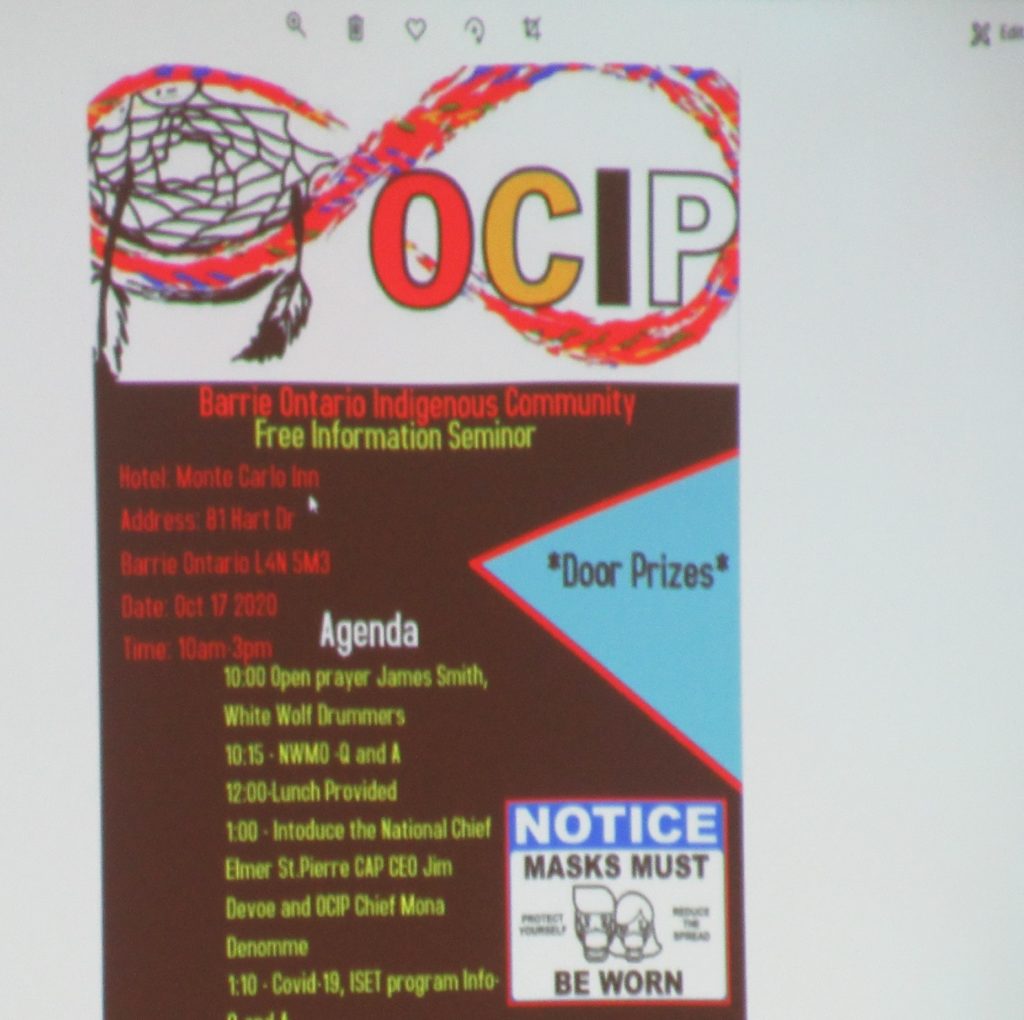
It was great to have our Good Friends of Greg Plain and James Wagar back in this Barrie, Ontario NWMO Information Session.

Senior Engagement Advisor Indigenous Engagement
519-381-7436
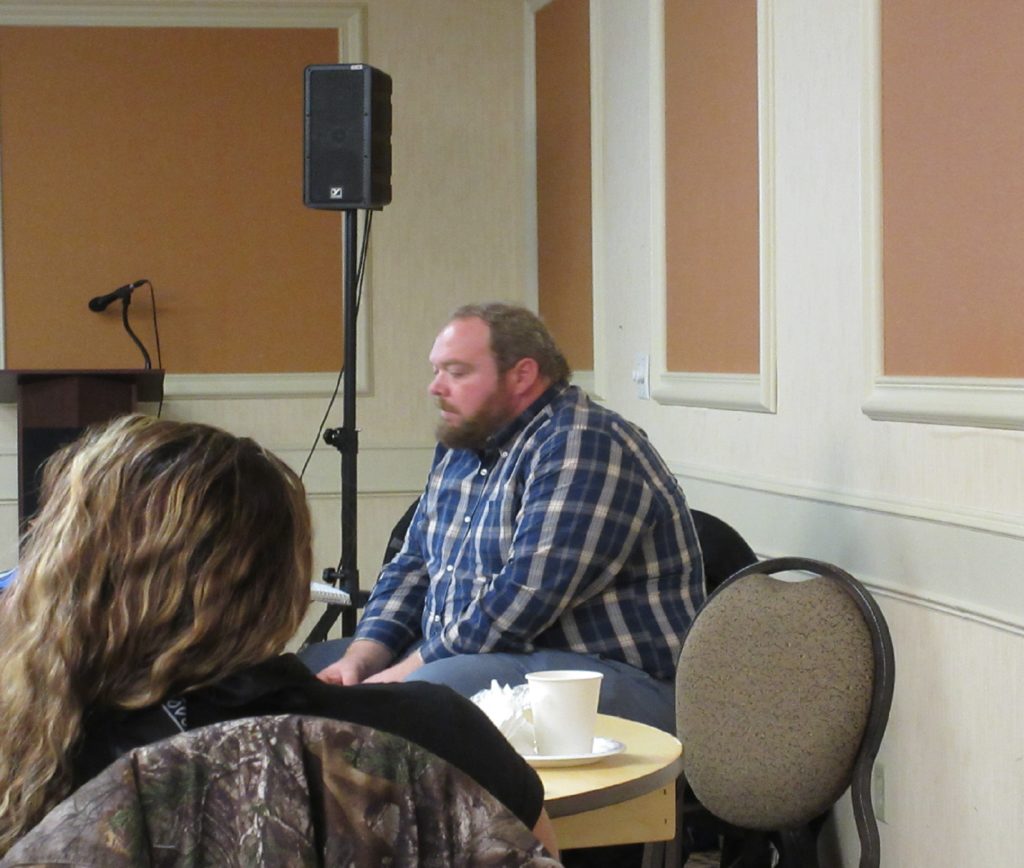
James Wagar
Senior Advisor, Indigenous Engagement

22 St. Clair Ave. East, 6th Floor | Toronto, ON, Canada | M4T 2S3
Mobile: 437-771-4109 | Direct: 647.259.3052 | jwagar@nwmo.ca
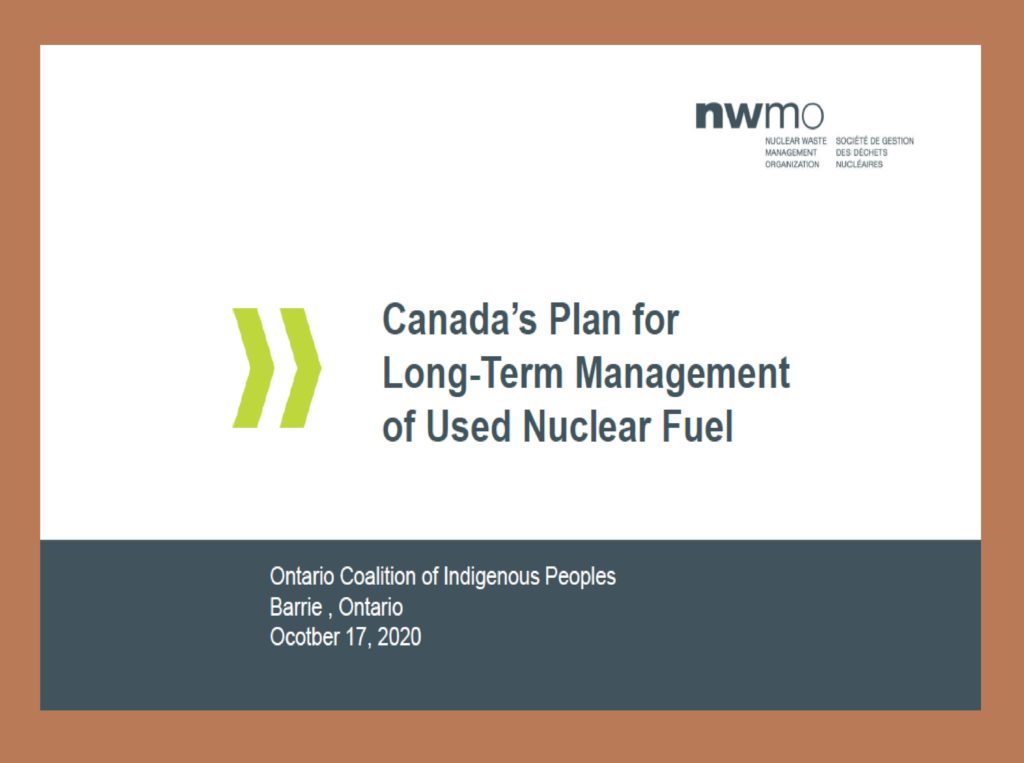
Primary Presenter Greg Plain
Secondary Presenter James Wagar
About the NWMO
The Nuclear Waste Management Organization has been around 2002 and its purpose is to “develop and implement collaboratively with Canadians, a management approach for the long-term care of Canada’s used nuclear fuel that is socially acceptable, technically sound, environmentally responsible, and economically feasible”. It is operated on a Non Profit basis and is funded by Canada’s nuclear energy corporations. The NWMO is under very strict regulation and as such are very open to discussion.
NWMO and OCIP have enjoyed a long history of both friendship and Information sharing. It is felt that the collaborative approach and its Indigenous policies has only aided and enriched in this process.
About Nuclear Fuel


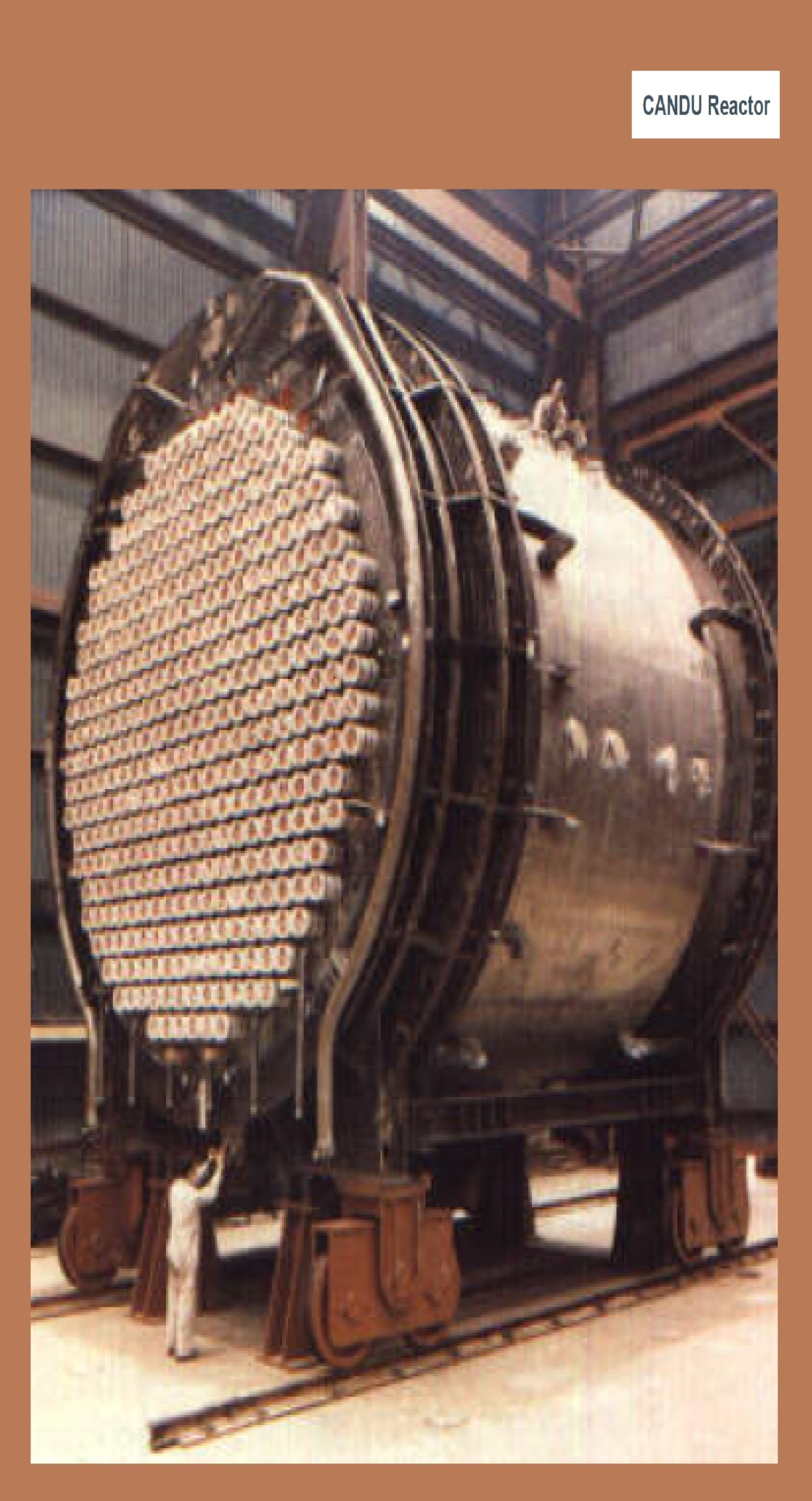
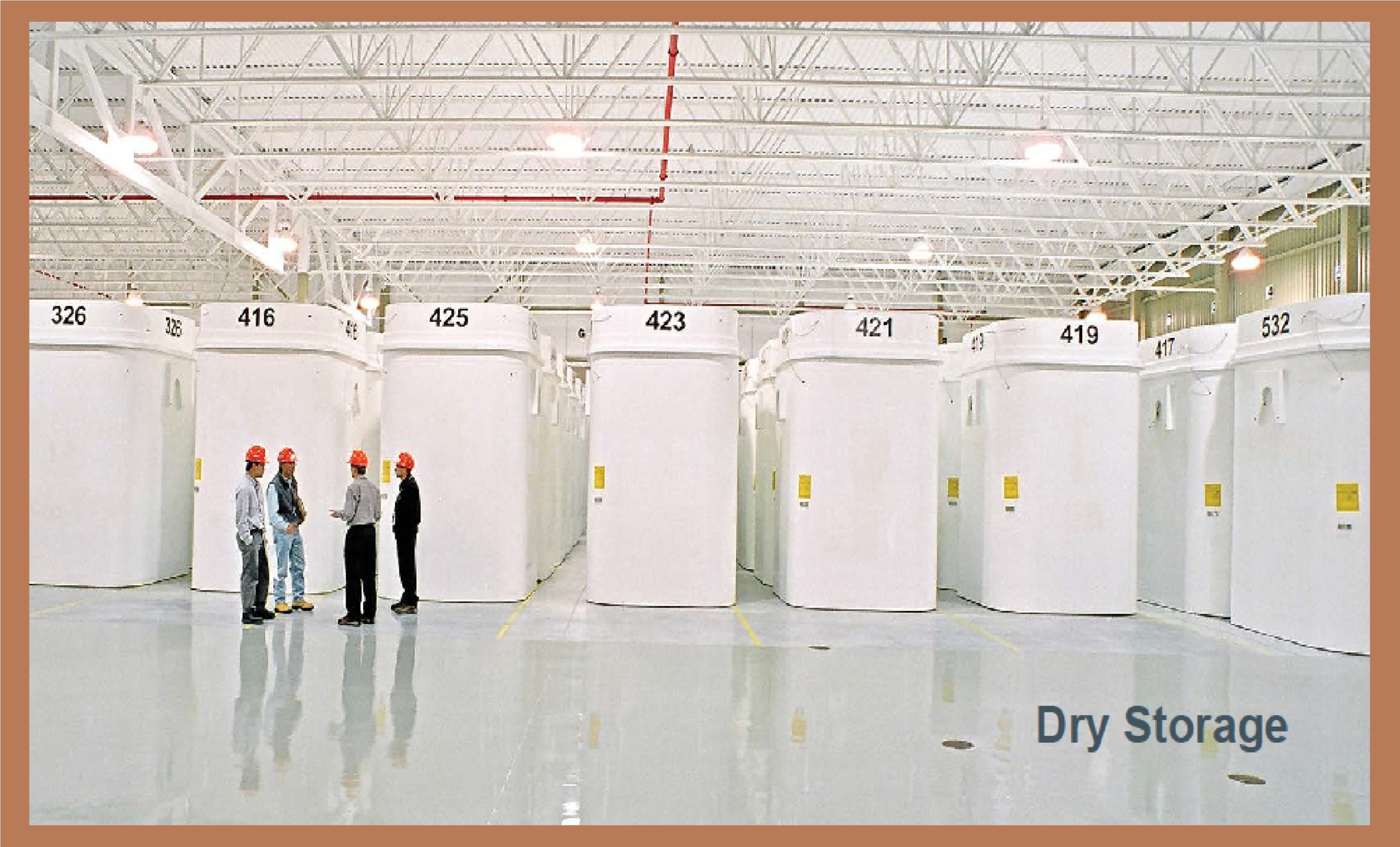
The process of Nuclear Fuel is a long one, it goes from raw material to the Fuel Pellet form, then the Pellets are stacked up in a Fuel Pencil. Many of these Fuel Pencils are formed into a Fuel Bundle, See above. The Fuel Pencils and the created Fuel Bundle is made of Zircaloy. Zircaloy is a very corrosive resistant and strong metal that hold up to the stresses placed upon it. Then approximately 5,000 Fuels Bundles are placed in the individual Candu Reactor for 15 to 18 months. Once the Fuel Bundles are removed from the Reactor they are cooled in a Wet Storage Facility for 10 years or until cool enough to be moved to a Dry Storage Facility. While there the Fuel Bundles are both stored and protected in Dry Storage Containers. These Containers are stored until they are moved and this safe storage is what the NWMO is tasked with to “develop and implement collaboratively with Canadians, a management approach for the long-term care of Canada’s used nuclear fuel that is socially acceptable, technically sound, environmentally responsible, and economically feasible”.
Canada’s Plan
After an exhaustive consultation with Various Canadian the following criteria’s were created as the foundation for any Nuclear Waste Program or facility; A) Safety and security is top priority, B) This generation must take action for we owe it to future generations to deal with this waste now, C) There must be consistent with the best international standards and practices, D) Any approach must be adaptable, thereby allowing for improvements based on new knowledge or societal priorities. With these in mind it is the general Worldwide and Canadian view that Underground storage is the best approach that meets these criteria’s. Further it is deemed that the Nuclear Waste must be retrievable to allow for reuse if better technology presents itself in the future. Please read the report here as much more data was presented than what’s listed in this short meeting synopsis.
Safety and Security
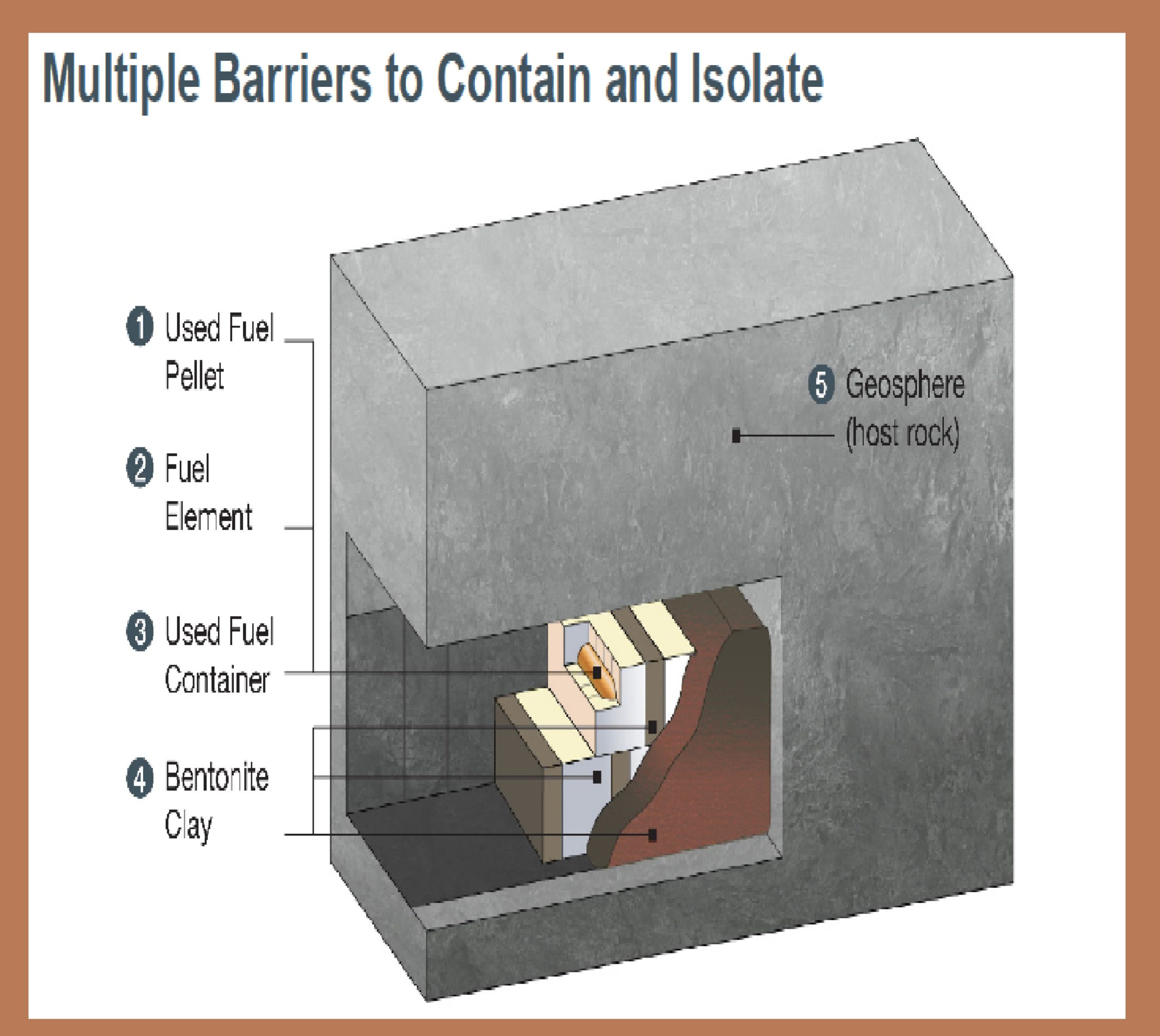

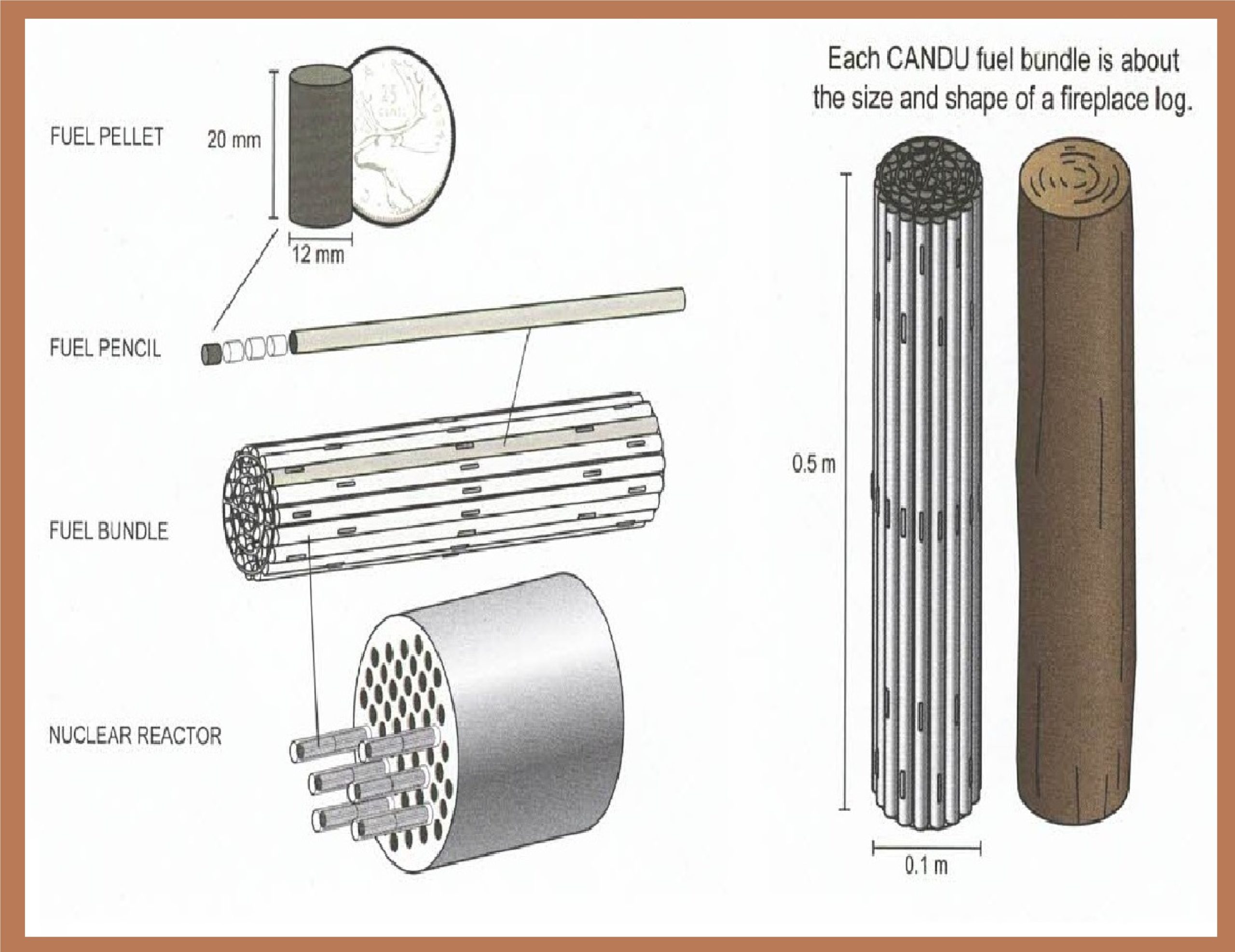
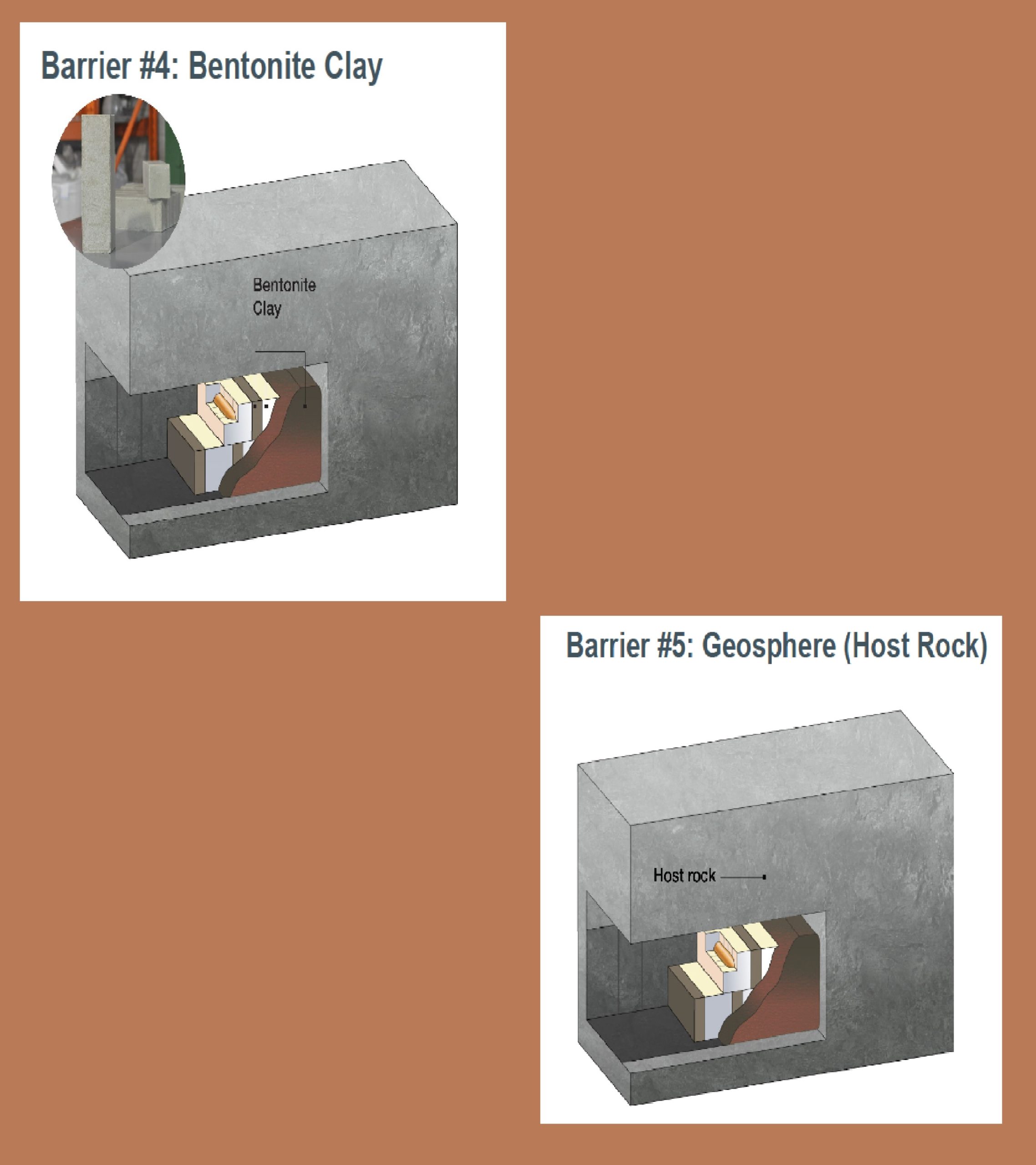
There are five Barriers in addition to the natural physical barriers of the chosen location. They are Barrier #1- Fuel Pellets, Barrier #2- Zircaloy Fuel Pencils & Fuel Bundles, Barrier #3- The used Fuel Containers, Barrier #4- Bentonite Clay, and Barrier #5- Geosphere or Host Rock. As we heard the Fuel Pellets are completely water insoluble therefore will not dissolve in water and cannot leach into waterways or effect the ground. Next, the Zircaloy creates a strong and resistive barrier between the Fuel Pellets and the environment. The used Fuel Containers are a sealed Barrier that literally seals in the used Fuel while keeping everything out. Is Strong and holds up to the revenges of time and the environment. Then the Bentonite Clay is shaped to the exact fit and size of the Containers and any excess Space has it packed. The Clay has the ability to push any moisture back out the way it entered. So any moisture is pushed away from the used Fuel. Lastly, is the Selected Host Rock. The tests upon it has ruled out small fractures that could allow moisture in, Then there is the fact that moisture has been ruled out as an issue in these rock formations. Water is one of the greatest concerns and every step is done to ensure its presence is not near the used Fuel. It must always be remembered that the NWMO is always running worst case scenarios on All aspects of the used Fuel storage and nothing is left to chance. In fact the NWMO has a whole department that does just this.
Just as a note of interest, all transportation methods and issues will be addressed after the final approval and licensing is completed. However the NWMO is testing all known methods presently.
Selecting a Site
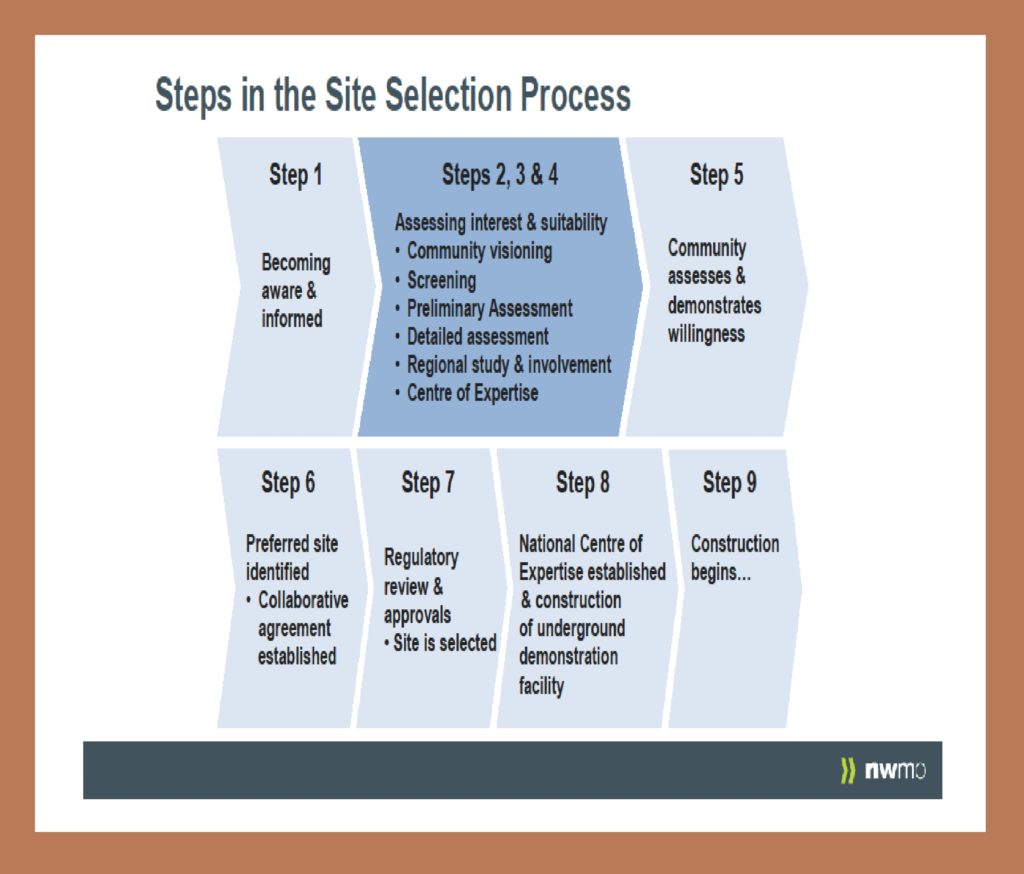
From the “Steps in the Site Selection Process” illustration above we see that the NWMO is clearly in the midst of steps 2, 3, 4 and in fact has narrowed the site selection down to two possible sites, Ignace (# 5 on the Map) and South Bruce (# 21 on the Map). In both possible sites much preparation is going on. In Ignace three bore holes have already been drilled, while in South Bruce this is not as important, because there are many reports and the typology is well documented. So the fine eye of NWMO is on these possible sites. Both have different rock types and all aspects are being looked at.
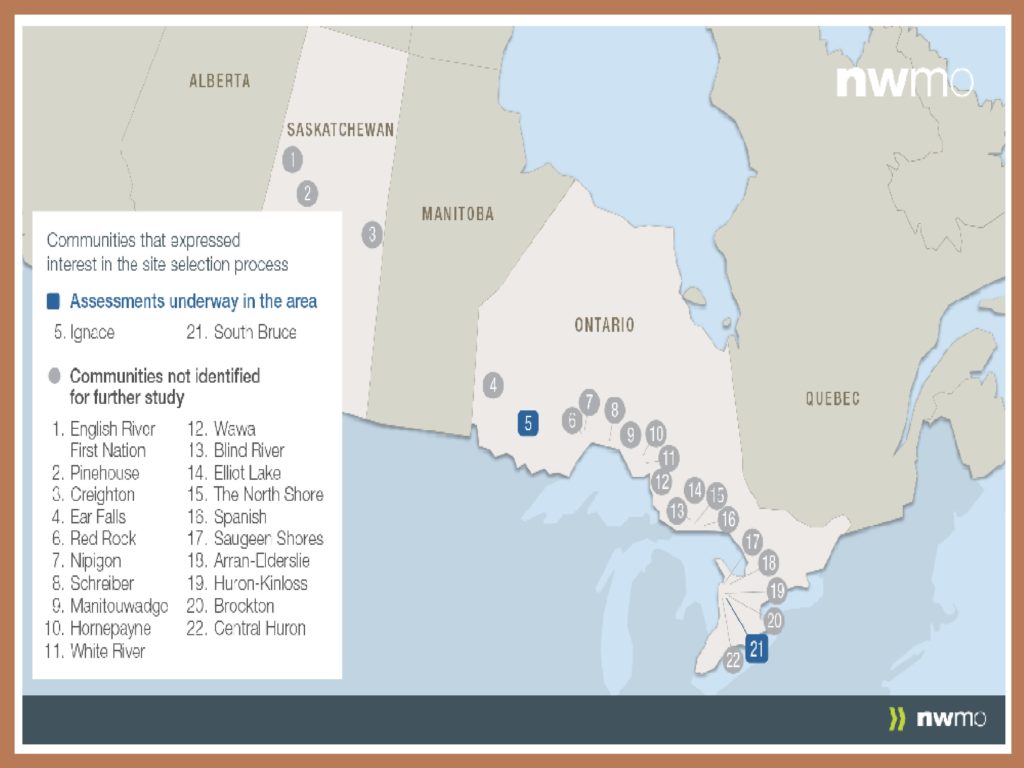
As with every project of any worth there must be great consideration given to Project Economics. In NWMO’s case this is no different. They firmly oversee their year to year budgets, because these funds must be there generations from now. So a keen eye and diligence is ever needed. The NWMO has gone one step further as they are looking at the impact this project will have in these two communities. In fact the breakdown can be seen below and more info can be found here.
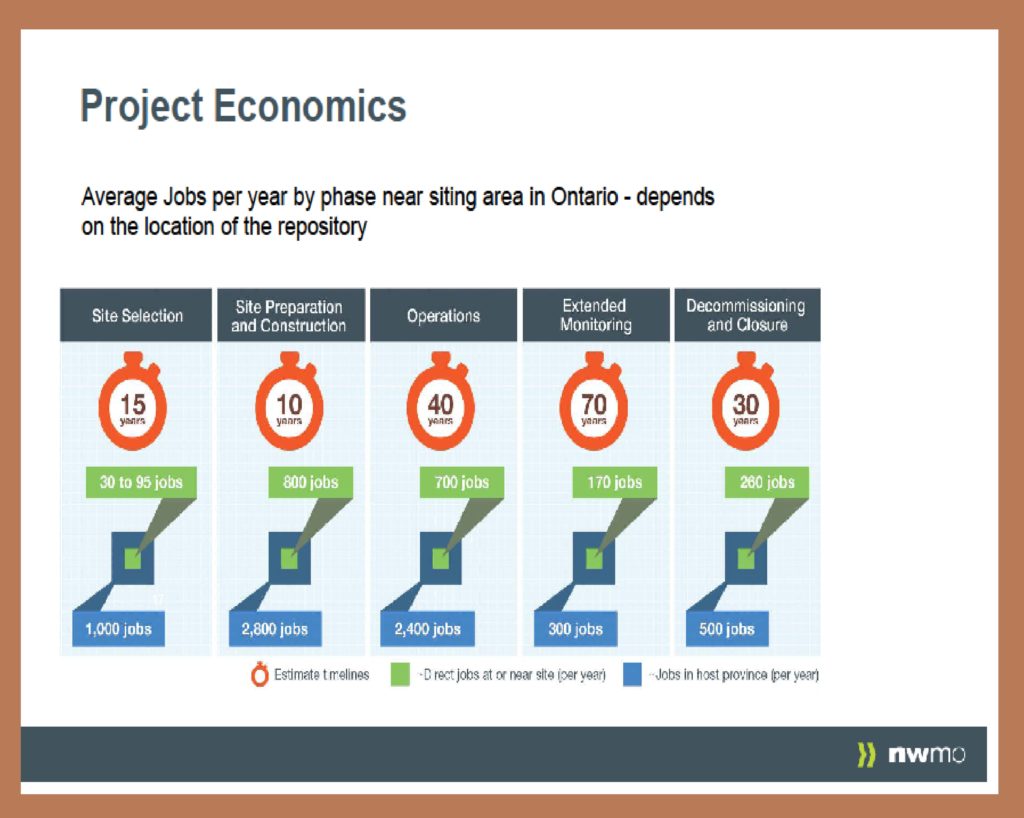
As we can see from the Key Project Milestones illustration below there is ample time to bring forth any questions or concerns. After all no-one wants to wait till 2043 to make our voices heard. One cannot think or question too much on such an important issue as Nuclear Waste and the NWMO is ever ready to listen.
| 2019 | • Preliminary Assessment of areas and sites • Narrowing Process continues |
| 2023 | • Preferred Site is selected |
| 2024 | • Detailed Characterization begins at site • Centre of Expertise construction • IA studies submitted to begin Regulatory Approval process |
| 2033 | • Construction begins |
| 2043 | • Operation begins |
Engagement
Engagement is the key for the future issues that are so important to Indigenous Peoples and this issue is no different. Getting out into the communities has always been at the heart of the NWMO. But why is the real question? Yes, safety and security is very important, however many organizations follow a more hidden approach for this. NWMO has went a very different route and it all stems from the {paraphrased here} belief, that NWMO is merely an acronym for an organization of People. These People are part of Communities and therefore they (NWMO) must do their all for the Communities Well-Being. So consultations, meetings, information sessions, etc. are just the methods to look out for the Communities Well-Being. Another way the NWMO has shown their true heart and spirit is that they believe that it is important to gain the insights and wisdom of Indigenous Peoples. In this illustration we see both the mainstream community and our Own Indigenous Communities are included. As we see it is not a pyramid, but rather a continuous circle that allows all areas to be looked after. Needs will arise and are met for all Peoples.
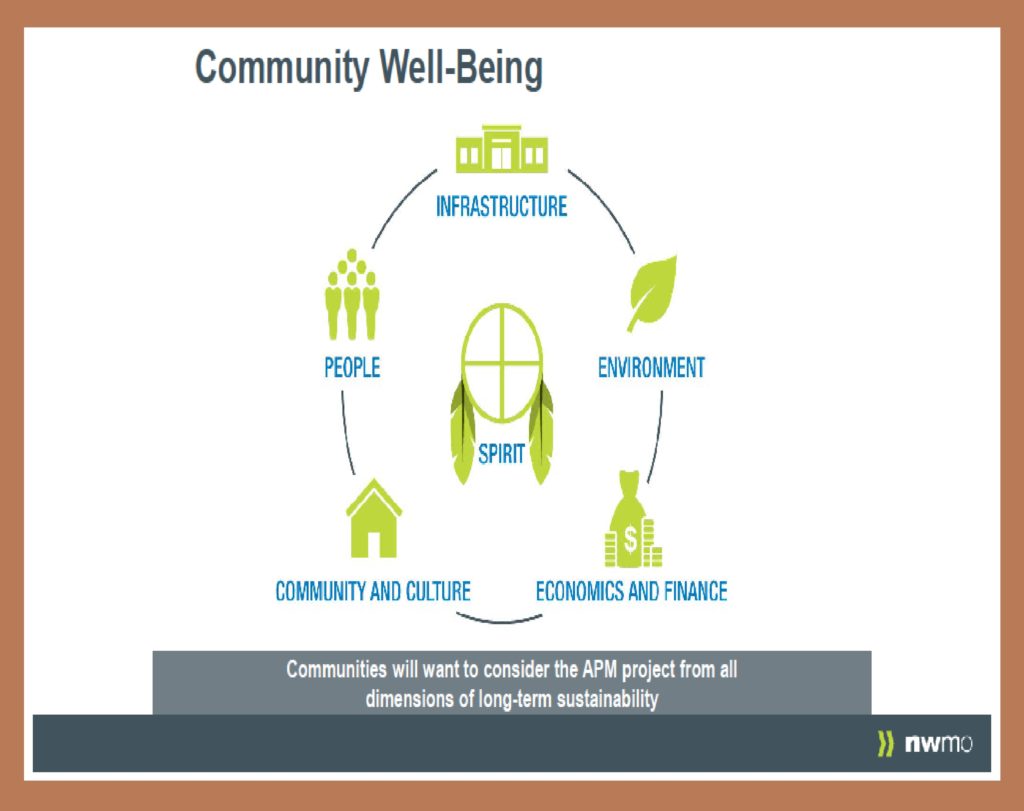
The NWMO Indigenous Knowledge Policy is a cornerstone of its Inclusive mindset and it is noted that the Youth and Elders counsel are a powerful voice of both the past and the future for its Mission Statement is ”The Council of Elders and Youth will provide advice to the NWMO that will help protect and preserve all creation: air, land, fire, water, plants, medicines, animals and humankind –guided by the seven universal teachings of love, trust, sharing, honesty, humility, respect and wisdom”. This is at the Core of the NWMO.
It must be noted that OCIPS very own Victoria Swain is a member of the Youth Council. This truly shows the friendship and understanding NWMO and OCIP has forged over time. But Greater Still it shows the Reconciliation that the NWMO is engaged in.
Reconciliation Statement
The NWMO’s view of incorporation of indigenous knowledge is but part of its willingness to include the Council of Elders and Youth as an advisory body to provide counsel on the application of Indigenous Knowledge in the implementation of APM. The NWMO has created a “Reconciliation Policy” as a way to both reconcile with past injustices and promote healing. This recognition of the past does begin the process of healing and it does start to build a greater path towards a future of trust and acceptance. This hard work done by the NWMO has led to the inclusion of Indigenous into its decision making policies. One cannot know the future, but knowing both the natural ways of life and having a connection to these natural ways will be a great asset in the future before us. This too is what the NWMO sees, believes and practices.
In Summation
There was a great and lively presentation by our old friends from the NWMO. The spirit of friendship was felt by all. These two Presenters brought forth the Spirit of the NWMO. Knowledge was shared and a bond was present. Attendance was much better than the previous meeting as the Covid-19 procedures was better understood by all. It was a very interesting thing to see the progress made since the ending of the last contract. There was a real sense of having a basic idea of where the final proposed site would be and with this came that we as participants were a part of something long lasting.
Closing Prayer
As we come to the closing of our time together,
We give thanks to the Great Spirit for giving us this
Opportunity to learn more in charting our future directions.
As we began with open hearts and minds,
Let us take away these new thoughts and ideas.
Let us tell our children, how we can achieve a greater understanding,
By helping each other to a sharing connection of respect and care.
We thank the Great Spirit for another chance to learn
And broaden our forward movement, as guardians of Mother Earth.
Since all life is sacred, we ask You, Great Spirit to watch over our families
And to set our children free, free to grow, to see, to seek, to question,
And to be the dreamers of tomorrow’s rainbows of life.
As Custodians of this life, it is our sacred trust,
For life is as wondrous, as a burning glow.
We must be courageous and wise to guide our families through all
The struggles of life with love. For love is life, believing in itself.
We now ask the Great Spirit to give us safety as we Venture homeward,
and we thank you for giving us this
Great circle of life, we now enjoy.
MEEGWETCH




NWMO Meeting in Thunder Bay On Aug. 22, 2020
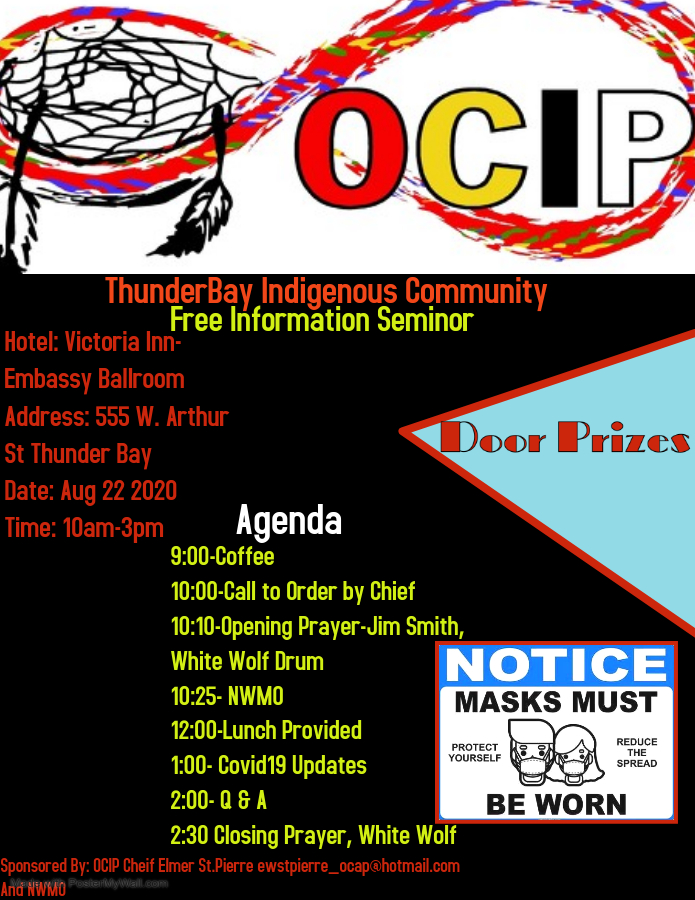

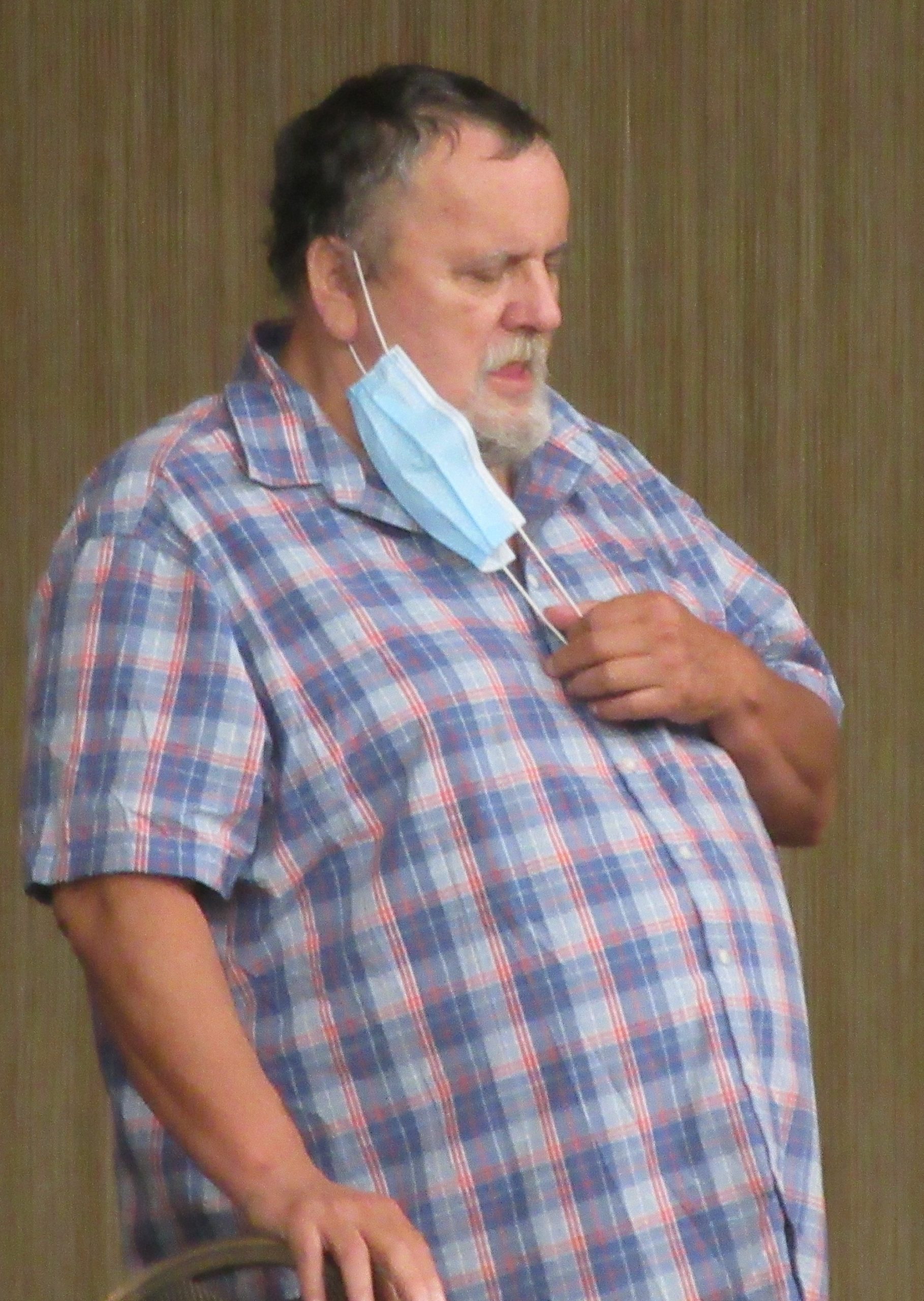
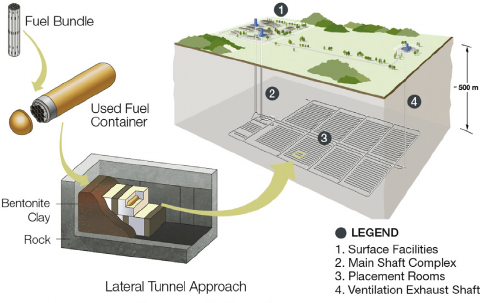
Opening Welcome & Closing remarks by Chief Elmer St.Pierre
Drumming by Regional Governor 6 Leslie St.Pierre and T.J. St.Pierre
Prayers by Elder Jim Smith
Morning Session
Canada’s Plan for the Long Term Management of Used Nuclear Fuel
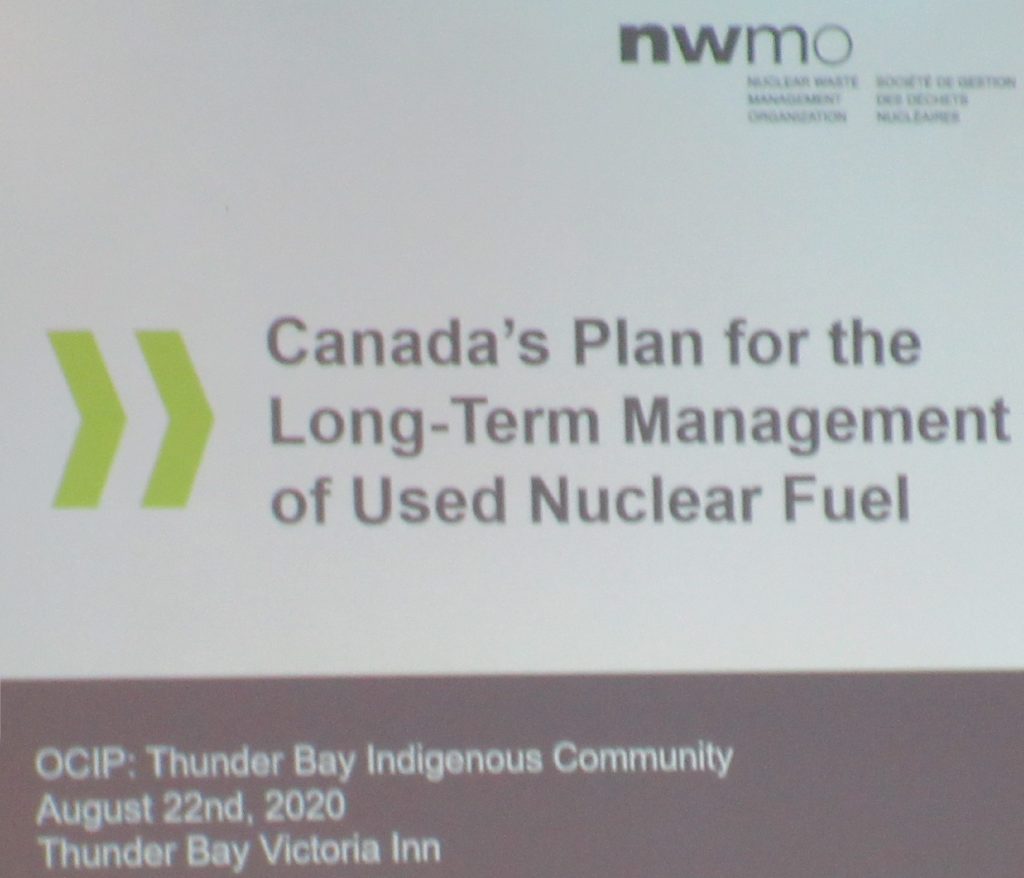
In the NWMO’s morning session called, “Canada’s Plan for the Long Term Management of Used Nuclear Fuel”, we discussed both the Plan and the progress that has been made over the last several years. One important step that has been made from the last Information Session of Feb. 1st, 2020 is that there are two sites being officially considered for Site selection, Ignace and Area and South Bruce. This was of great interest to the participants, because it seemed not long ago when there were five sites to choose from. OCIP feels like it has been at the table for this whole process and is assured that the future holds the same consultation. Two pieces of information that were brought forth and discussed were A) the idea of the used Nuclear material having the ability of being retrieved in the future if a better technology is found to either dispose and/or re-use it as a fuel source. Regional Governor Jon MacDonald brought the point forward by requesting a copy of the plan be both sent to him and dispersed to willing OCIP requesters’. Also it was asked if this process was a “needed or desired” process. It was then answered by Garrett (of the NWMO) that this was not a needed process as the storage facility and thereby its storage is safe, so the need is not present. However it was a desired process as there are always new technologies being created that could either allow the Nuclear Waste to be disposed of or have it reused as fuel source for Canadians. Next, B) it was presented by Garrett that as a part of the Technical Approval process of both the proposed and eventual final site Both the Local Indigenous Leaders, Environmental liaisons, Naturalists, and NWMO record ALL of the environmental, natural, etc. niches or habitat on every path, road, landing site, drill hole, site, etc. This means that every habitat is recorded, photographed, documented, etc. so that upon the completion of the process then the niches or habitats can be replaced to their original state. It was further pointed out that the process will not begin UNLESS this can be ensured. This point was very exciting to the Participants and in fact is being added to the NWMO section on the OCIP Website upon approval. It was a very interesting Session and it was obvious to all that the NWMO Organization has moved well forwards in the plan and still holds to the processes of consultation and looking after the environment.
After Noon Session
The Journey of Water: Teachings from Mother Earth about Water and Clay.
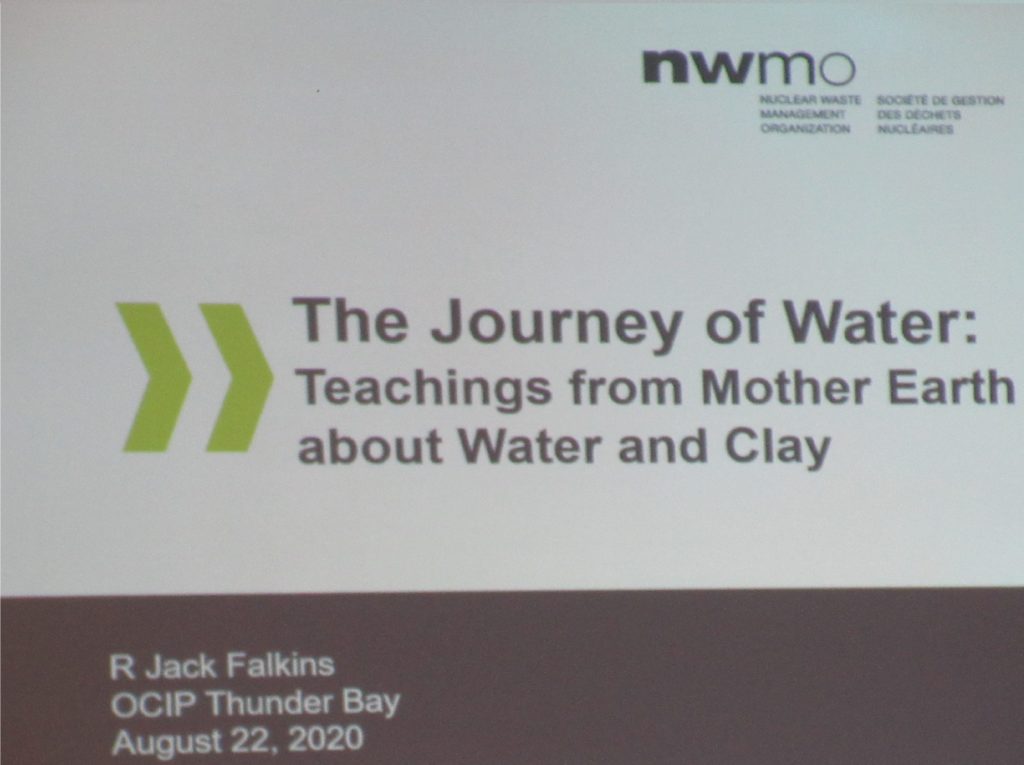
In the NWMO’s morning session called, “The Journey of Water: Teachings from Mother Earth about Water and Clay”, Jack gave a very interesting and Spiritual teaching on Water and how its journey influences, affects us all. For one example it connects us together by our need for it and by it being a connection route. But water also travels downwards into the very ground we stand upon. It keeps going deeper until it becomes trapped within the pours of the rock. It is this water that the Bentonite clay expands upon contact to keep away from the Nuclear Waste. Plus it expands to such a degree that it actually expels the water and fills the pours of the rock. This expansion becomes a permanent barrier that does not break down with time. This protection aspect has been seen countless times in the past. A well preserved 2,500–2,800-year-old stag beetle from the Akitsu ruins near the city of Kashihara in the Nara Prefecture, Japan was discovered fully intact. One can distinguish its anatomical features after all this time. Next, in Spain there was a grove of approximately 2.5 million years old Sequoia-like (Taxodioxylon gypsaceum) tree roots and trunks were found. What was so remarkable was that they were not fossilized and where in fact still wood. It was reported that there were tests made on the wood and it burned the same as they normally would have burned. These Clay covered beetle and trees are just a small number of evidence discovered that shows the power of preservation of clay. Is it any wonder that clay is used so much today in cosmetics, antacids (Like pepto bismol) or various other medical related remedies, harmful chemical protective barriers, Kitty litter, etc.? Also discussed was the protective Power of Copper and how it can resist the wares of oxidation and time to protect its cargo. All of this was told by Jack as if a master storyteller had entered the room. He spoke not with a voice of science alone, but with the wisdom of Mother Earth. He showed us that the stories we all grew up with of balance in nature were true and in fact all around us. It was so nice to see that these teachings are at the heart of the NWMO philosophy.
Further Information Supplied by:
NWMO Representative
Arthur Moore Comments
Arthur held a long discussion after the presentation about the connection of Past Wisdom and how things are today. It was very evident that he saw how things were changing and moving. It was very obvious that he had great faith in the direction that the NWMO was headed and how they had opened a great new road for Indigenous Culture and Communications. His and the two other Greats presenters of Garrett and Jack showed that OCIPS voice was being heard and would be well into the future.
OCIP Representative
Region 2 Governor Jon MacDonald Comments and input
As can be read above Jon MacDonald brought forth many concerns, questions, and comments for both His Region 2 and for All of OCIP. It was such a pleasure to see him looking out after you as well as Mother Earth. Dedication in a hard thing to find these days, add to this the very fact it took work to arrive at this meeting. You have something very special in Jon as a Leader. We would be amiss if we didn’t note Jon’s wife was in attendance and brought such a refreshing air to the meeting. It truly was a pleasure to breath in this energy. As a last note for Jon, he wrote a very inclusive report/brief of this session that should be read.
In Summation
The attendance was down based on the Covid-19 and its restrictions. But the Spirit of connection was felt by all. It was great to see that Garrett, Jack, and Arthur put their time into these presentations and the discussions thereafter. We felt “in good Hands”, even though our Good Friend and Brother Greg Plain could not be with us because of Covid-19 restrictions. We look forwards to being with him and you, plus many more participants in the Future. As a note; although, the contact details for each are listed, please forwards all main queries to Greg that are outside the noted sessions above. Again thanks all who attended and We look forwards to seeing you all in the future as more sessions are being planned.
In His presence we all who are here. We give our thanks to the Great Spirit, for our Mother, the Earth, for she gives us, from her gardens, our foods needed for life. She provides the gravity, as our feet move over her surface. The joy she bestows upon us and the care she continues to give all mankind. Since the beginning of time, she has provided the essentials we need, from her natural land. That our people can grow, as a strong culture, to live in harmony with each other.
We thank the Great Spirit for Your protection, as we travel down our pathway of life. Bless our minds and words, as we seek your guidance and direction for our lives. May our endeavors’ be as one with You, Great Spirit and those in leadership, walking in your wisdom and strength. May they see through Your Eyes, the direction for our future, as they follow Your footsteps, to a bright and healthy future.
May our children, youth and young adults seek Your ways, as they walk hand-in-hand with love. May they seek Your wisdom, as You teach them to be respectful of Mother Earth and to live in balance with each other. We thank You, Great Spirit.
Meegwetch
